

MACHU PICCHU IN MARCH
Planning to visit Machu Picchu in March? March does still form part of the rainy season, but if you are looking to avoid crowds, then March and the rainy season is a good time for Machu Picchu. By saying rainy season in March, it doesn´t stand for long rainy hours; it usually is scattered showers. As the days go by, the weather gets better, and if you have sun during the day, it will get quite warm and sometimes even hot. So visiting Machu Picchu in March, you are likely to have some nice days and everything in the plant kingdom will still be green.
Note: Did you know to visit Machu Picchu you should follow different circuits? We choose the best circuit for you. Check out our Machu Picchu 1-day trip and Machu Pichu 2-day trip .
When is the best time of the day to visit Machu Picchu in March?
The best time visit to Machu Picchu in March is from 8 am to 1 pm. At this time of the day, the fogs move away and reveal Machu Picchu in its glory. If you go for 06:00 am, there is an 80% of chance to see Machu Picchu cloudy, and in the afternoon heavy rain comes.

Things to know
- March is actually the end of the rainy season.
- The temperature at this time of the year is warm.
- Most of the days the sky is cloudy, but there are also short periods of clear days.
- If the sun comes out, it will get quite warm and sometimes even hot.
- Machu Picchu in March should expect an average of 14 to 21 days of rain.
- The temperature in Machu Picchu fluctuates between 25°C and 13°C (77°F – 55.4°F).
- The famous Inka Trail trek to Mach Picchu is open in March.
- Machu Picchu is less crowded at this time of the year.
- Easy to get on the trains and buses without waiting a long time.
- Travel agencies lower their package prices as well as hotels do too.
- Witness the incredible rainbow phenomenon.
- See the various species of butterflies better than in other months.
- Chance to get Machu Picchu entry fees, a day before or sometimes even upon arrival to Cusco.
- The path that lead to the Huayna Picchu and Machu Picchu Mountain are slippery and the chances of enjoying the fabulous views in the early Schedules (6 – 9 a.m.) are minimal.
- In March there are aggressive mosquitoes that attack visitors.
- Early morning hours tend to be foggy and misty, enabling Machu Picchu to be seen. The same if you go to the sun gate.
- There is a remote possibility of bridge or road washouts if heavy rains extend all through March.
Recommendations
- If you plan to Visit Mach Picchu in March, we recommend you the late March because there is less chance to get heavy rain.
- Bring appropriate clothing, a raincoat or poncho, a long-sleeved shirt, and gloves. Find gloves at markets, and these for sure are going to be the best.
- During the rainy season, it is to be in Machu Picchu not earlier than 10 am because before then there are clouds, especially early morning and you can’t see a thing. You need some luck because this is the rainy season.
- Bring your Mosquito spray or repellent.
Do you have a rough idea of when the Machu Picchu tickets for March sell out by?
The Machu Picchu tickets with Circuit 1 and 2 run out usually 1 month in advance for the last 2 weeks of March because the rain has started decreasing. The tickets with circuits 3 and 4 usually run out 2 weeks in advance. However, for the first 2 weeks of March, you are able to find the tickets even just a day before your visit because it is still raining and there are few people visiting Machu Picchu.
- Monday through Saturday 9AM - 1PM & 3PM - 7PM
- Sunday 5 PM - 7PM
- +51976510080
- [email protected]
- Marquez Street 250, Two Blocks from the Plaza de Armas (upper floor of the market, third door on the right)
SALES TEAM HOURS
- Monday through Saturday 8AM - 1PM & 4 PM - 7 PM
- Sunday is closed

Visiting Machu Picchu in March
Welcome to Visit Machu Picchu ! In this post, we will be sharing our experiences and tips for visiting Machu Picchu in the month of March. Known as one of the most iconic and mysterious ancient sites in the world, Machu Picchu is a must-see destination for any traveler.
March is a great time to visit, as the crowds are typically smaller and the weather is mild. Join us as we take you on a journey through the history and beauty of Machu Picchu, and provide you with everything you need to know to plan your own trip to this incredible place.
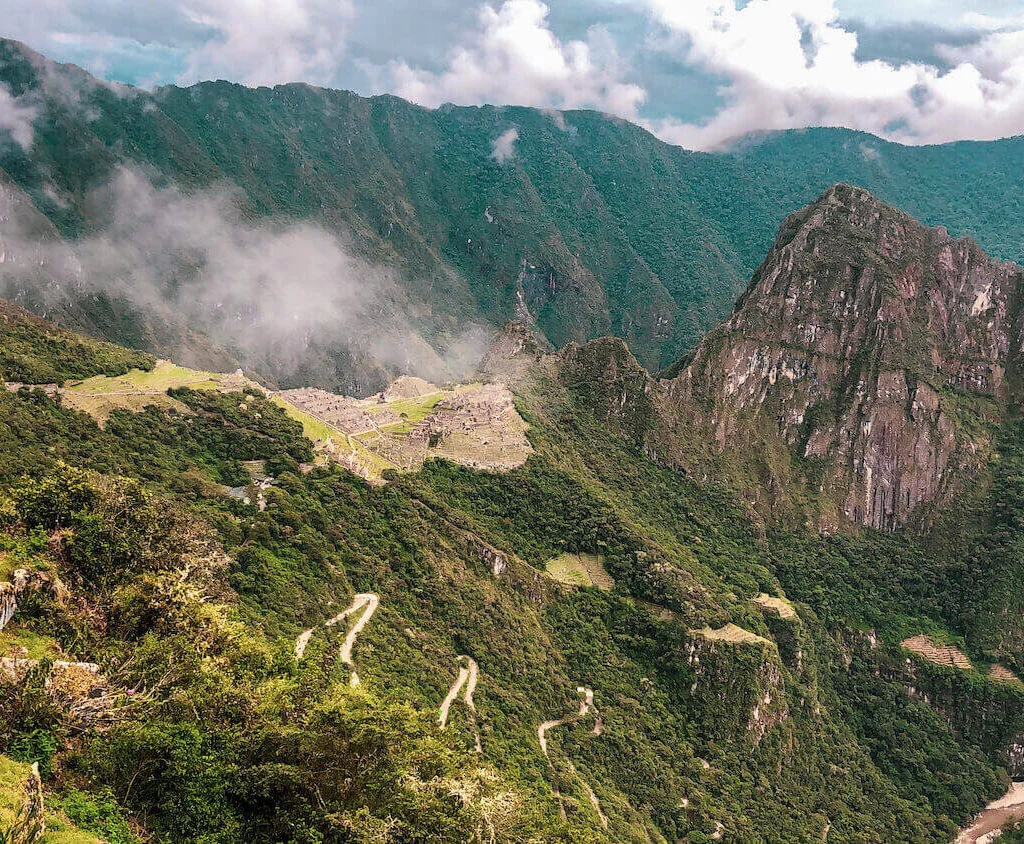
Machu Picchu in March – What to expect
- Crowds : Machu Picchu is a popular tourist destination and March is not yet the high season, so it is a good option to visit it.
- Weather : March is considered the beginning of the dry season in Machu Picchu, with temperatures ranging from the low 60s to the high 70s during the day and dropping to the low 40s at night. Expect sunny weather with occasional rain.
- Altitude Sickness : Machu Picchu is located at an altitude of 7,970 feet (2,430 meters) above sea level, so some visitors may experience symptoms of altitude sickness such as headaches, nausea, and shortness of breath.
- Hiking : The site of Machu Picchu can be explored by hiking on various trails, such as the Inca Trail , which offers stunning views of the surrounding Andean mountains.
- Cultural Experience : Machu Picchu is a UNESCO World Heritage Site and an important historical and cultural site for the Inca civilization. Visitors can learn about the history and culture of the Incas through guided tours.
- Limited Access : To preserve the site, the Peruvian government only allows a limited number of visitors per day, so it is important to book tickets in advance.
Weather & temperature at Machu Picchu in March
Machu Picchu is located in the Andes Mountains of Peru, and the weather can vary depending on the altitude. In general, March is considered to be part of the rainy season, so it is likely to be quite wet. The average high temperature during the day is around 68°F (20°C), and the average low temperature at night is around 44°F (7°C). However, it is also important to note that temperatures can drop significantly at night, especially at the higher elevations, so it is important to bring warm clothing.
What is the best time of day to visit Machu Picchu in March?
The best time of day to visit Machu Picchu in March would be in the morning, before the cloud cover and rain sets in. The morning is also the busiest time of day, but it can also be the most rewarding as the weather is usually clearer and the sunlight illuminates the ruins nicely. Additionally, the morning is also the best time for photography as the light is most favorable.
Pros of visiting Machu Picchu in March
- Fewer tourists : March is considered the shoulder season for Machu Picchu, which means there are fewer tourists compared to the peak seasons, allowing for a more peaceful and intimate experience.
- Good weather : Although March is part of the rainy season, it is also the end of the rainy season, which means there is a good chance that the weather will be clear and sunny.
- Affordable prices : Since March is considered a low season, prices for lodging, transportation, and tours are often lower than in the peak seasons.
- Good for photography : The morning light is ideal for photography, and the morning is also the best time to see Machu Picchu before the clouds roll in.
- Beautiful scenery : The Andes mountains are beautiful year-round and during the rainy season, the surrounding vegetation is lush and green.
- Special events : March is a month when Machu Picchu celebrates the Inti Raymi, a festival of the sun, which is a great opportunity to experience the local culture and traditions.
Cons of visiting Machu Picchu in March
- Rainy season : March is considered part of the rainy season, so there is a higher chance of rain, which can make hiking and exploring the ruins more difficult and less pleasant.
- Crowds : Although there are fewer tourists in March compared to the peak seasons, Machu Picchu still receives a significant number of visitors, which can make the experience less intimate and more crowded.
- Limited Visibility : The clouds and fog can obscure the views of the ruins, making it harder to fully appreciate the site.
- Cold temperatures : Nights can be chilly, especially at the higher elevations, so it’s important to pack warm clothing.
Things to do in Machu Picchu in March
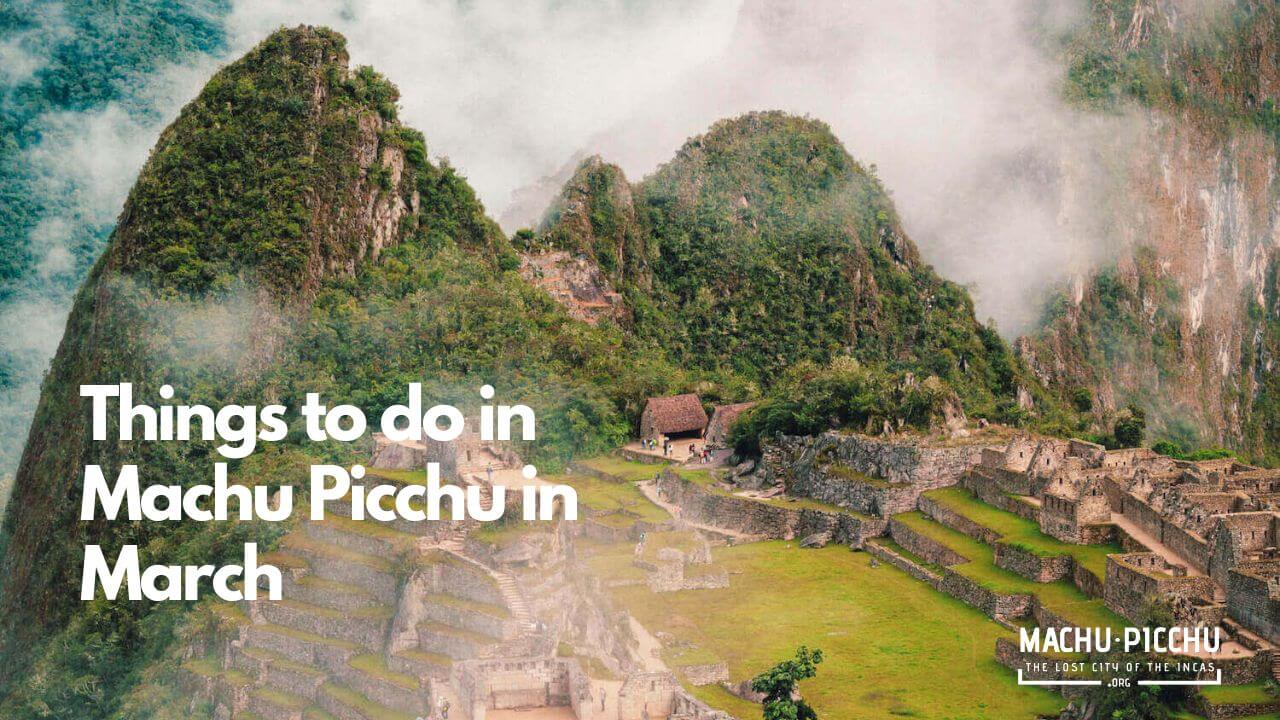
- Hike : The Inca Trail is open in March and is a great way to see the surrounding Andes and reach Machu Picchu.
- Take a guided tour : A guided tour can provide insight into the history and significance of Machu Picchu.
- Visit the local markets : The nearby town of Aguas Calientes has a variety of markets selling local crafts and souvenirs.
- Relax in the hot springs : The nearby town of Aguas Calientes is home to a variety of hot springs, which can be a great way to relax after a day of hiking.
Holiday Events in Machu Picchu during March
- Holy Week : During this festivity, 12 dishes are eaten in Cusco and no meat is consumed.
- Feast of the Lord of Temblores : This is a religious festival that takes place in the district of San Sebastian. It celebrates a statue of Jesus that is believed to have saved the area from an earthquake. The event includes a procession, mass, and other religious ceremonies.
- Feast of Saint Joseph : This is a Catholic religious festival that takes place on March 19th and is celebrated throughout Cusco. It honors the patron saint of the city and includes a mass and a procession with the image of Saint Joseph.
- Feast of the Lord of Huanca : This is a religious festival that takes place in the district of Huanca. It honors a statue of Jesus that is believed to have saved the area from an earthquake. The event includes a procession, mass, and other religious ceremonies.
- Feast of the Lord of Qoyllority : This is a religious festival that takes place in the district of Qoyllority. It honors a statue of the crucified Christ that is believed to have saved the area from an earthquake. The event includes a procession, mass, and other religious ceremonies.
Foods in season in Machu Picchu in March
- Quinoa : A staple grain of the Incas, quinoa is a nutritious and versatile grain that is in season in March.
- Potatoes : There are over 4,000 varieties of potatoes in Peru, many of which are grown in the region around Machu Picchu.
- Avocado : Avocado is in season in March and is often used in local dishes like guacamole.
- Citrus fruits : Lemons and oranges are in season in March, and are used to make marmalade and juice.
- Andean berries : March is a good time to find Andean berries such as strawberries, blackberries, and raspberries.
How to get to Machu Picchu in March?
The best way to get to Machu Picchu in March would depend on your specific travel plans and preferences. Here are a few options to consider:
Read our complete guide: How to get to Machu Picchu from Cusco .
- Train : The most popular and convenient way to get to Machu Picchu is by taking the train to Aguas Calientes , the town at the base of Machu Picchu. From there, you can take a bus or hike up to the site.
- Hiking : Another option is to hike the Inca Trail, a popular trek that takes you through beautiful Andean landscapes and ends at Machu Picchu. However, it’s important to note that the Inca Trail is closed for maintenance during the month of February, so it would be available to trek in March.
- Bus : If you’re looking for a more budget-friendly option, you can also take a bus from Cusco to Santa Maria, and then another bus to Santa Teresa, from there you can hike or take another bus to Hidroeléctrica, from there you can take a train or hike to Aguas Calientes, then take the bus to Machu Picchu.
It is important to note that Machu Picchu is a very popular tourist destination, and the number of visitors is limited. So it is advisable to book tickets and tours in advance, especially during high season like March.
What to pack and wear for Machu Picchu in March?
Here is a suggested packing list for a trip to Machu Picchu in March:
- Lightweight, quick-drying clothing : It can be warm during the day and chilly at night, so pack layers that can be easily added or removed.
- Hiking boots or sturdy shoes : The terrain around Machu Picchu can be rough, so you’ll want footwear that can handle it.
- A waterproof jacket and pants : Rain is always a possibility, especially in the rainy season.
- Sunscreen, sunglasses and a wide-brimmed hat : The sun can be intense at altitude, so protect yourself from UV rays.
- A daypack to carry water, snacks and other essentials while exploring the site.
- Camera and extra batteries : Machu Picchu is a beautiful place to take photographs.
- Insect repellent : to avoid bugs and mosquitoes.
- Personal hygiene items : toothbrush, toothpaste, and toilet paper, etc.
- Travel documents : Passport and Machu Picchu entrance tickets.
- Cash in local currency : Not all places in Machu Picchu accept credit card.
- A good book or a journal to enjoy the beautiful moments.
- Warm clothes : for night time, thermal underwear, a fleece, and a jacket are recommended.
- A first aid kit.
- A reusable water bottle.
Note: You should consider leaving some of your valuables in a safe place or in your hotel, as well as some unnecessary items to make your backpack lighter.
Recommendations
- Weather : March is considered the shoulder season for Machu Picchu, so the weather can be unpredictable. It can be warm and sunny during the day, but cool and rainy at night, so be prepared for all eventualities by bringing layers of clothing.
- Crowds : March is considered low season for Machu Picchu, so there will be fewer visitors than during peak season. This can be beneficial for those who want to avoid crowds and enjoy the site with fewer people around.
- Hiking : The Inca Trail, one of the most popular routes to Machu Picchu, is closed in February for maintenance, but it reopens in March. If you want to hike the Inca Trail, make sure to book your permit well in advance as they are limited and they tend to sell out quickly.
- Altitude : Machu Picchu is located at an altitude of 2,430 meters (7,970 feet) above sea level, so it’s important to acclimatize properly to avoid altitude sickness. Spend a few days in Cusco before heading to Machu Picchu to allow your body to adjust.
- Guided tours : A guided tour is a great way to learn about the history and significance of Machu Picchu and to get the most out of your visit. Guided tours are also mandatory for visiting some areas of the site such as Huayna Picchu or Machu Picchu mountain. Make sure to book your tour in advance.
- Be respectful : Machu Picchu is a sacred place for the Inca people, so be respectful of the site and its history. Follow the rules and regulations, and do not disturb the wildlife or damage any of the structures.
March is a good time to visit Machu Picchu. It’s open, weather can be variable, bring layers, waterproof gear, sturdy shoes
Yes, Machu Picchu is open in March.
The temperature at Machu Picchu in March can range from warm to chilly. It’s important to be prepared for variable weather conditions by bringing layers of clothing.
Lightweight, quick-drying clothing, hiking boots or sturdy shoes, waterproof jacket and pants, sunscreen, sunglasses and a wide-brimmed hat, warm clothes.
What are the alternative months to visit Machu Picchu?
- Visiting Machu Picchu in January
- Visiting Machu Picchu in February
- Visiting Machu Picchu in April
- Visiting Machu Picchu in May
Read This Next
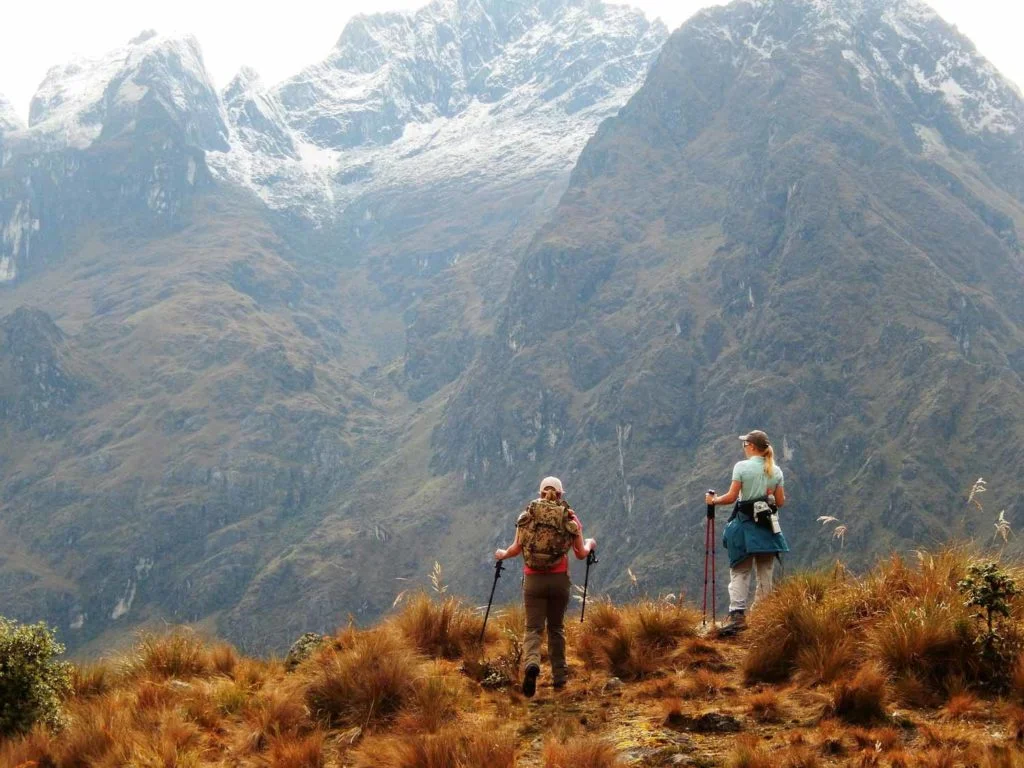
Best Time To Hike Inca Trail To Machu Picchu
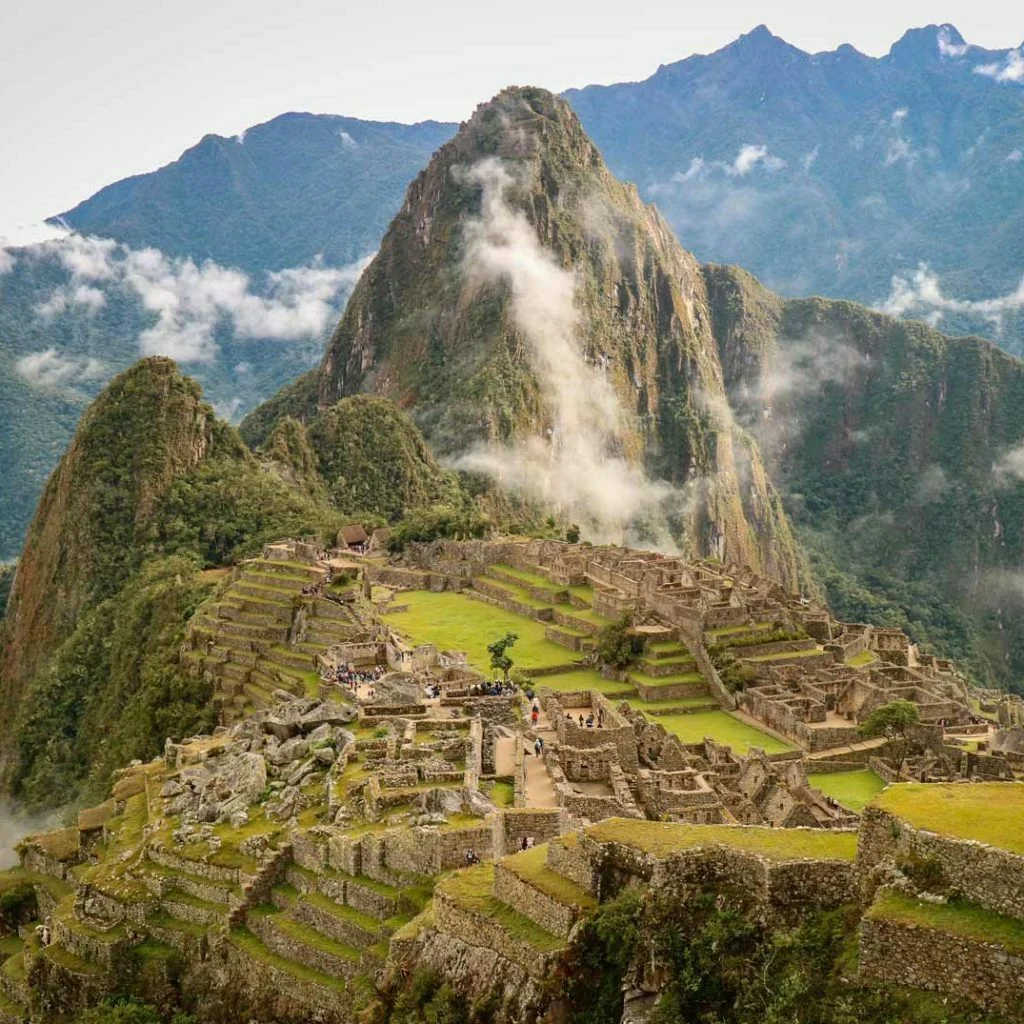
Machu Picchu 7th Wonder of the World
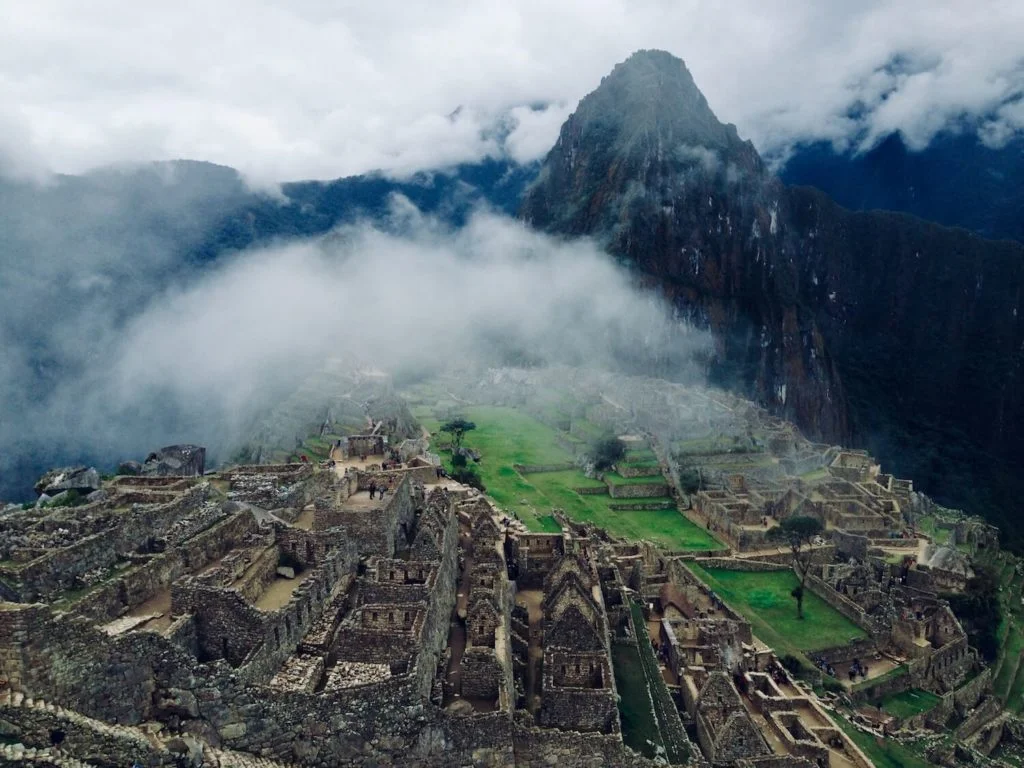
How To Get To Machu Picchu
Leave a comment cancel reply.
Your email address will not be published. Required fields are marked *

Experience the Magic of Machu Picchu in March

The ancient Inca citadel of Machu Picchu is one of the most awe-inspiring sites in the world. If you’ve ever dreamed of visiting this amazing place, March is the perfect time to do so. With its mild climate and beautiful views, March offers a unique opportunity to experience the magic of Machu Picchu. From the lush green hills to the ancient temples, there is something magical about this ancient city that can only be experienced during this time of year. In this article, we will explore the many reasons why March is the ideal time to visit Machu Picchu, and how you can make the most of your trip.
Reasons to Visit Machu Picchu in March
Machu Picchu is a renowned archaeological site that is located in the Cusco Region of Peru. Every year, tens of thousands of visitors flock to this magnificent site to witness its breathtaking beauty and grandeur. One of the best times to pay a visit to Machu Picchu is during the month of March, when the weather is at its mildest and the crowds are at their thinnest.

Ideal Weather Conditions
March is the ideal time to visit Machu Picchu as the weather is not too hot or too cold. The temperature range is between 15°C and 20°C, making it comfortable for sightseeing and trekking. The humidity is also relatively low, resulting in clear and sunny skies with breathtaking views of the surrounding mountains.
Less Crowds
Since Machu Picchu is one of the busiest tourist destinations in the world, it can often be quite crowded. However, in the month of March, the number of visitors decreases significantly, resulting in lesser crowds and shorter queues. This makes it the perfect time to explore the site and take in its beauty in peace.
Cheaper Accommodation
The prices of accommodation in Machu Picchu can be quite high, especially during peak season. However, in March, the prices drop significantly, allowing visitors to enjoy comfortable stays at more affordable rates. Additionally, the hotels and resorts in the area also offer various discounts and packages for visitors during this time, allowing them to save even more money.
Spectacular View Of The Sunrise
One of the most spectacular sights of Machu Picchu is the sunrise, which can be best viewed during the month of March. The clear sky and the picturesque landscape provide a breathtaking backdrop to the sunrise. Visitors can also witness the sun’s rays illuminating the ruins, making it an unforgettable experience.
Is good visit Machu Picchu in March?
March is an ideal time to visit Machu Picchu, due to the pleasant weather, lower crowds, affordable accommodation and spectacular views of the sunrise. With these reasons, it is easy to understand why so many people choose to visit this magnificent destination in the month of March.
Tips for visiting Machu Picchu in March
Whether you’re taking a business or pleasure trip, it’s always important to plan ahead. Vacations can be expensive and stressful, so it’s important to know the best tips to make your trip easier and more enjoyable. Here are some important tips to consider when planning your next trip:
Create a Budget
Creating a budget is the first step for a successful trip. This will help you determine how much to save, when to book flights and hotels, and what activities you can afford to do. You should also consider any extra expenses such as transportation, meals, and souvenirs. By having a budget in place, you’ll be able to enjoy your trip without worrying about going over budget.
Booking your flight and hotel well in advance can help you save money. Many airlines and hotels offer discounts for early bookings, so be sure to research and compare prices. You can also save money by booking a package deal that includes your flight, hotel, and any other activities you plan on doing.
Packing the right items is essential for a successful trip. Try to pack light, since you’ll be carrying your luggage with you and it can be difficult to manage bulky or heavy items. Bring only the essentials such as your passport, travel documents, clothing, and any medications you may need. You can also save space by packing items like shampoo and sunscreen in travel sizes.
Research the Area
Researching the area you’re visiting is important for a successful trip. You should research the best places to eat, visit, and explore. You can also find out about any events or festivals that may be happening during your stay. This will help you plan your days more efficiently and make sure you don’t miss out on any attractions.
Finally, it’s important to stay safe while you’re travelling. Be sure to research the local laws and customs before you leave. Be aware of your surroundings, avoid dark alleys, and never leave your belongings unattended. You should also keep your passport and other important documents in a safe place and make copies of them in case they get lost or stolen.
By following these tips, you’ll be able to plan a successful trip and make the most of your time away. With a little bit of planning and preparation, you’ll be able to have a great vacation without any worries
Getting Machu Picchu in March
There are several options for getting to Machu Picchu. Here are some of the most common ones:
- Inca Trail : This is the classic and most popular option for getting to Machu Picchu. The Inca Trail is a 4-day trek that takes you through the Andes mountains, passing through ancient Incan ruins and offering stunning views of the surrounding landscape. The trek requires a permit and it’s important to book in advance, as permits tend to sell out quickly.
- Salkantay Trek : This is a popular alternative to the Inca Trail, and takes you through diverse landscapes and offers stunning views of the Salkantay mountain range. The trek is a bit more challenging than the Inca Trail, but also less crowded.
- Lares Trek : This is another alternative trek to Machu Picchu that takes you through traditional Andean villages and offers a glimpse into local culture. The trek is less crowded than the Inca Trail and the Salkantay Trek.
- Train : Taking a train is a comfortable and easy way to get to Machu Picchu. The PeruRail and IncaRail services operate year-round from Cusco to Machu Picchu Pueblo, the closest town to Machu Picchu. From there, you can either take a bus or hike up to Machu Picchu.
- Bus : You can also take a bus from Cusco to Machu Picchu Pueblo, and then either take a bus or hike up to Machu Picchu.
No matter which option you choose, getting to Machu Picchu is an unforgettable experience that offers a glimpse into the rich history and culture of Peru.
Read more at: How to get to Machu Picchu .
Thank you for joining us on this journey to explore the wonders of Machu Picchu in March. We hope that you have enjoyed learning about the magical experience that awaits you. Until next time, farewell!
Visiting Machu Picchu in another months?
- Machu Picchu in February
- Machu Picchu in April
Related Posts

Ultimate Guide to Planning a Trip to Inca Trail in Peru

Planning a trip to Machu Picchu
Leave a comment cancel reply.
Your email address will not be published. Required fields are marked *
Save my name, email, and website in this browser for the next time I comment.

- Travel blog
Machu Picchu in March (Weather, Tips and More)
Home » Travel Information » Machu Picchu in March (Weather, Tips and More)

Visiting Machu Picchu in March
Considering a visit to Machu Picchu in March? March is the end of the rainy season, which means that rainfall is no longer constant and there is a high probability of clear skies during your visit. However, it should be noted that this is not guaranteed, as the weather in the Andes is unpredictable. On the other hand, March is the ideal month for those looking for a quieter visit, with less crowds.
What is the weather like in March?
March is considered the end of the rainy season in Machu Picchu. Here is an overview of the weather that you can consider before visiting Machu Picchu in March:
Precipitation: March is still part of the rainy season in the Machu Picchu region. While the intensity of rainfall may decrease compared to earlier in the season, there may still be occasional showers.
Temperatures: Temperatures in March can vary from mild to warm. Daytime temperatures may vary, with the possibility of warm and sunny periods, especially as the month progresses.
Crowds: March is a good time to visit if you want to avoid the peak tourist season, which tends to occur during the drier months from May to October. However, it should be noted that Machu Picchu can still attract a significant number of visitors during March.
Landscape: The vegetation around Machu Picchu is most likely to be lush and green in March due to the recent rains, providing a scenic backdrop for your visit.
Exploring Machu Picchu in March: (Pros and Cons)
Machu Picchu , located in the Peruvian Andes, is a famous archaeological wonder that attracts visitors year-round. However, March marks the transition from the rainy season to a drier period. Here are the pros and cons of visiting Machu Picchu during this month:
Pros of Visiting Machu Picchu in March:
1) Fewer crowds:
March offers visitors an exploration of Machu Picchu with fewer crowds. This creates a more serene and intimate experience amidst the ancient ruins.
2) Efficient transportation:
As the number of visitors decreases, it is easier to access transportation services. Boarding trains and buses is more convenient, and waiting times tend to be shorter compared to peak months.
3) Cost savings:
Travel agencies and hotels usually reduce their prices during the low season in March. This provides an excellent chance for travelers on a tight budget to explore Machu Picchu without going broke.
4) Unique natural phenomenon:
March offers the opportunity to witness the incredible phenomenon of rainbows. The combination of occasional showers and sunlight can create vivid rainbows that add a magical touch to the already breathtaking scenery.
5) Last minute admission opportunities:
There is the possibility of obtaining entrance tickets to Machu Picchu at the last minute. Some visitors have reported getting tickets a day before their visit or even upon arrival in Cusco. This flexibility can be advantageous for spontaneous travelers.
Cons of Visiting Machu Picchu in March:
1) Slippery trails:
The trails leading to Huayna Picchu or Machu Picchu Mountain can be slippery in March because of residual moisture from the rainy season. Be very careful if you are thinking of doing one of these 2 hikes
2) Mosquitoes and insects:
March could bring mosquitoes that can be annoying to visitors exploring the Machu Picchu site. Travelers are advised to carry insect repellent to avoid mosquitoes bites.
3) Misty and foggy mornings:
Early mornings in March tend to be foggy and misty, potentially blocking panoramic views of Machu Picchu. This weather condition can affect visibility, impacting the experience for those hoping to capture iconic photos of the site.
When is the best time of the day to visit Machu Picchu in March?
The best time to visit Machu Picchu in March is from 8 a.m. to 1 p.m., when the fog dissipates and reveals the site in all its splendor. Arriving at 6 a.m. increases the chances of encountering fog, while in the afternoon there is a risk of heavy rain. Planning the visit at the optimal time improves the visual experience and avoids unfavorable weather conditions.
How should I dress for Machu Picchu in March?
Dress in layers of light, moisture-wicking clothing for Machu Picchu in March. Wear a waterproof jacket, wear comfortable walking shoes with good traction and opt for long pants to protect you from insects. Don’t forget a sun hat, sunglasses and sunscreen to protect you from the sun.
Conclusions
Visiting Machu Picchu in March offers both advantages and challenges. The opportunity to experience the site with fewer crowds, lower rates and lush landscapes are significant attractions. However, it is essential to consider potential setbacks, such as slippery trails, aggressive mosquitoes and variable weather conditions. Carefully choosing the time of the visit, preferably between 8 a.m. and 1 p.m., maximizes the chances of enjoying Machu Picchu in optimal weather conditions. Caution and preparation are key to a satisfactory experience at this historical and cultural site.
NOTE: If you are planning a one-day tour to Machu Picchu in March, we invite you to get in touch with us for a distinctive and memorable experience at the best price available. Our team is dedicated to providing you with a smooth and enriching journey through this iconic archaeological site.
Get in Touch with “Come see Peru Tours”
Let us know how we can help and we’ll be in touch soon. If you are on tour and this is an emergency, call our 24/7 Emergency Support Team

Lorem ipsum dolor sit amet, consectetur adipiscing elit. Fusce non bibendum nunc. Duis a ipsum et risus tempor aliquet non non quam. Integer porta sed enim eget vulputate
Custom your Trip
Email Address
Phone or WhatsApp
Privacy Overview
The Best Times to Travel to Machu Picchu

Tucked high into the Andes, in Peru's Sacred Valley at 7,970 feet above sea level, the mysterious Inca citadel of Machu Picchu is an architecturally breathtaking UNESCO World Heritage Site and absolute South America bucket-list must. Constructed around 1450, this vital religious, political and administrative center was abandoned some 130 years later when the Inca empire collapsed. While local communities always knew it existed, this lost city was later 'discovered' by the American explorer Hiram Bingham in 1911.
Visitors fly into the city of Cuzco, the empire's former capital that's located at an even loftier 10,954 feet above sea level. It's worth spending a few days acclimatizing to the altitude while exploring its fusion of Inca heritage and colonial buildings before moving on toward the continent's most prominent archaeological site.
Take a bus to the town of Ollantaytambo, a two-and-a-half hour winding drive, and stay in this part of the Sacred Valley to enjoy other gems built by the Inca civilization, such as the Maras salt mines and Moray agricultural ruins. This can help minimize lengthy travel times, which can be exhausting to those unaccustomed to altitude.
Those in pursuit of real adventure hike the Inca Trail. The shortest expedition lasts one to two days and starts at a point known as Km 104, although departing from Km 82 for a four-to-five-day trek is the norm.
The Best Time To Visit Machu Picchu
Leaving directly from Cuzco involves an early, 5:30 a.m. start and a four-hour bus-and-train combo to Machu Picchu Pueblo (formerly known as Aguas Calientes), a small town located at the foot of the mountain ridge where the ruins lie. Those staying in Ollantaytambo take a 90-minute train ride to the same destination. From there, a zigzagging 30-minute bus ride (or walk), your driver's cheek bulging with coca leaves to cope with the altitude, takes you up to the park entrance.
May through September is the dry season and the best moment for stunning photographic memories with this New Wonder of the World, whose official name is Historic Sanctuary — National Archaeological Park of Machu Picchu . Few clouds will likely interfere with a most-wanted shot with Huayna Picchu, the peak at whose feet the citadel lies. May and September are the quietest months for visitors during this period.
The Busiest Time To Visit Machu Picchu
That said, June through August is the busiest period within this winter time frame, when visitors from around the world descend upon the ruins during the northern hemisphere's summer. It's likely that all 5,940 park visitor permits, granted on morning and afternoon schedules, are booked up well ahead of time, meaning you'll shuffle, rather than walk, around the sights such as Temple of the Sun and the Terrace of the Ceremonial Rock.
When to Visit Cuzco For Events
The largest city in Peru's Sacred Valley, Cuzco respects an array of festivals, religious or otherwise. Depending when Easter falls, the Andean version of Carnival is just as vibrant as its Brazilian neighbor's, while Quyllurit'i, held between May and June, is a local celebration of the stars. Inti Raymi honors the Inca sun god Inti, the most respected deity for that culture.
Pachamama Raymi is celebrated every August 1 throughout the Sacred Valley, when communities give thanks to Mother Earth for recent crop harvests and ask her to bless the forthcoming year.
The Best Time to See Wildlife in Machu Picchu
The February-to-April rainy season has its upside and flora fans will adore observing some of the 400 species of orchids that are in full bloom in February and March. Ask your guide to identify the enchantingly named Wakanki and Wiñaywayna, which translate as 'You Will Weep' and 'Forever Young' in the Quechua indigenous language. Guests staying at the Inkaterra Machu Picchu Pueblo Hotel can spot 372 different types within the lodge's own gardens. Another benefit to rainy season is that you'll be traveling through lush, green valleys.
Those hiking the Inca Trail should keep an eye out for Peru 's scarlet-hued national bird, the Andean Cock-of-the-Rock, which is one of around 370 bird species observed in the area. Others include the Andean condor and its impressive ten-foot wingspan, as well as an array of zippy hummingbirds. Park visitors will doubtless stumble across a herd of friendly and photogenic llamas.
The Cheapest Time To Visit Machu Picchu
Flights and hotels in Cuzco and the Sacred Valley are at their cheapest between January and March. Rainy season — which can mean anything from light showers to full-on floods — makes the region less attractive to visit and February is the rainiest month, making it more difficult to traverse the park; it's also when the Inca Trail closes for maintenance.
Carriers flying from Lima to Cuzco include Avianca, LATAM, and Star Perú; budget airlines include Sky and Viva. Plans are afoot to construct an airport closer to Machu Picchu in nearby Chinchero, despite the area being a no-fly zone, a decision that's currently causing uproar among local communities, archaeologists, and historians.
For more on Machu Picchu and Peru check out these articles:
- 19 Things to Know Before Your First Trip to Peru
- Travel to Machu Picchu on Points and Miles
- 11 Things to Know Before You Go To Machu Picchu
- How to See Machu Picchu on a Budget
- 6 Only-In-Peru Things to Do on Your Way to Machu Picchu
- How to Visit Machu Picchu With Kids
- 8 Places to Visit in Peru Besides Machu Picchu
For the latest travel news, deals and points and miles tips please subscribe to The Points Guy daily email newsletter .
The Best Time to Visit Machu Picchu
:max_bytes(150000):strip_icc():format(webp)/Becker1-5b734a56c9e77c0025caddbd.jpg)
Chris VR / TripSavvy
If you're traveling to Peru chances are your plans could include a visit to Machu Picchu. After all, the ancient archaeological site is the most visited tourist attraction in the entire country, drawing more than a million travelers each year. The best time to visit Machu Picchu is May to June or September to October, when the weather is nice and crowds are thin, but the site is well worth a visit any time of the year.
History of Machu Picchu
Dubbed one of the New Seven Wonders of the World , Machu Picchu is the rare tourist attraction that actually lives up to its massive hype. Located 50 miles northwest of the Peruvian city of Cusco , the ancient mountaintop citadel was originally built sometime around 1450 for the Incan emperor Pachacuti. A century later however, the site was abruptly abandoned for unknown reasons.
For centuries the fortress was unknown to the outside world until an American explorer by the name of Hiram Bingham discovered it in 1911. He spent the next several years excavating the site from the surrounding jungle and mapping its walls and buildings. Bingham's discovery fired the imagination of people across the globe, turning Machu Picchu into one of the best known archeological sites on the planet.
Later, Machu Picchu would be named a UNESCO World Heritage Site and would begin welcoming tourists. Most come via a train out of Cusco, although the more adventurous will hike the Inca Trail to arrive at the fortress via an old road that was used by the Inca themselves.
Visiting Machu Picchu
Nestled high in the Andes mountains, Machu Picchu is open to visitors all year round. That means you can make plans to visit the site no matter when you will be in Peru. Of course, what part of the year is best to accommodate your specific needs depends on several factors, including weather, size of the crowds you're willing to deal with, and how you want to get there.
Visiting During Rainy Season
The rainy season in Peru runs from November into April, bringing gray clouds, frequent rain showers, and the occasional storm with it. In fact, it rains nearly every day during this period, which keeps crowds to a minimum, but can also make a Machu Picchu visit a very soggy affair. On the other hand, the rainy season also brings the warmest weather too, which means that conditions are generally comfortable when the rain isn't falling.
While rain is an ever-present threat at this time of the year, the upside is that the number of visitors to the site is much lower. That makes it easier to explore Machu Picchu at your own pace, although you'll definitely want to pack a rain jacket .
Of special note, January through March are the absolute rainiest of all of the months, so keep that in mind as you make your travel plans.
Visiting During Dry Season
Peru's dry season tends to run from about mid-April to the end of October, with cooler air, bright blue skies, and plenty of sunshine dominating the forecast. The improved weather tends to usher in an influx of visitors to Machu Picchu as well, with more travelers arriving at the site on a daily basis. Cooler temperatures are also a part of the dry season however, particularly in the early morning and later evening. Rain showers aren't completely out of the question either and heavy afternoon mists occur on a regular basis too.
Travelers visiting during this time of the year have a better chance of enjoying a clear, sunny day, although they'll have to deal with larger crowds as well. If you don't mind sharing Machu Picchu with a few thousand of your closest friends, this might be a good time to go.
Visiting in High Season
The high season for Machu Picchu — which is to say its busiest period in terms of number of visitors — comes in July and August. Those months fall right in the middle of the dry season and generally have the most stable and predictable weather of the entire year. Of course, that is exactly why most people choose that time to visit the mountain fortress, leading to some of the largest crowds found at the site all year long.
If you absolutely don't want to deal with crowds, than avoid going during these months. However, if your primary goal is to have the best chance at good weather, than this is when you should book your trip. Just be prepared to wait in line and share the space with plenty of others.
Visiting in Shoulder Season
The so-called shoulder season is when travelers can expect the best mix of weather and crowds, with a good chance of dry conditions and a fewer people. For Machu Picchu the shoulder season takes place in May, June, September, and October. During those months, the chance of rain remains at a minimum and while the crowds remain large, they are not nearly as massive as those found during the high season.
Those looking to optimize their time in Machu Picchu, while still giving themselves the best chance at good weather, the shoulder season is a safe pick. There is a high likelihood that you'll avoid rain and the site won't be completely overrun with other travelers.
Hiking the Inca Trail
As already mentioned, Machu Picchu is open year round and travelers can make plans to visit during any month of the year. But if your goal is to hike the Inca Trail to Incan city you'll want to avoid visiting in February. The trail is actually shut down for the entire month to perform routine maintenance on the route to ensure that it stays safe, scenic, and sanitary. You'll just have to book your trek in one of the other months of the year based on the weather and the size of the crowd you want to contend with.
Best Time of Day
No matter what month of year you choose to visit Machu Picchu your experience can be altered substantially depending on what time of the day you go. The site is open from 6 a.m. to 5 p.m. each and every day, with the largest crowds arriving later in the morning and staying until mid-afternoon.
Savvy travelers can arrive there first thing in the morning and take advantage of the smaller crowds or plan to get there late in the day as other tourists begin to filter out. Taking advantage of this strategy may mean you have to book a night at one of the local hotels, but it could be totally worth it in order to spend time in such an iconic destination with fewer people around.
The best time to visit the ruins of Machu Picchu is in the shoulder season, either between May and June or between September and October.
Peru's rainy season lasts from November to April, which can make the hike to Machu Picchu wet and muddy. However, crowds tend to to be much thinner.
Machu Picchu experiences its busiest season in July and August, because these months fall right in the middle of the dry season and the weather is more predictable.
Peru Telegraph. "How many tourists visited Machu Picchu in 2018?" Retrieved February 12, 2021.
Ancient History Encyclopedia. "Machu Picchu." Retrieved February 12, 2021.
Weather Spark. "Average Weather in Cusco, Peru, Year Round." Retrieved February 12, 2021.
The Best Time to Visit Peru
The Best Time to Visit the Bahamas
Where to Go in 2021: 10 Future Trips You Can Start Planning Now
The Best Time to Visit the Great Barrier Reef
The Best Time to Visit the Maldives
The Best Time to Visit Japan
The Best Winter Getaways for Families
Weather in Cancun: Climate, Seasons, and Average Monthly Temperature
The Complete Guide to Peru's Sacred Valley
Advance Booking for the Inca Trail
Machu Picchu on a Budget
The Top 20 Things to Do in Peru
Tips for Picking a Machu Picchu Tour
Trekking the Two-Day Inca Trail to Machu Picchu
Machu Picchu, Peru: Mysterious Lost City of the Incas
How to Travel From Lima to Cusco, Peru, by Bus, Car, and Plane
- Search Please fill out this field.
- Manage Your Subscription
- Give a Gift Subscription
- Sweepstakes
- Adventure Travel
How to Travel to Machu Picchu
Don’t get lost when you visit the Lost City of the Incas.
:max_bytes(150000):strip_icc():format(webp)/Stefanie-Waldek-7eed18a8c9734cb28c5d887eb583f816.jpg)
Chris Marinaccio/Travel + Leisure
Every year, millions of people visit the imposing and mysterious Incan citadel of Machu Picchu in Peru. But getting to the massive agricultural terraces, intricate stone constructions, and epic hilltop views of this UNESCO World Heritage site isn't cheap, and it involves some trickier-than-usual logistics. Here's how to expertly navigate your way to Peru's most famous destination, plus our top tips for enjoying your visits to the nearby cities of Cusco and Aguas Calientes on your way.
Reasons to Visit
Machu Picchu is one of the world's most dreamed-about destinations . Mystery is at the center of Machu Picchu's appeal, as the city holds many secrets about the ancient Incan Empire. Knowledge-seekers will find plenty of interesting tidbits to mull over about the city's archaeological significance and the various scientific and religious practices of the Incans who built the magnificent site.
Alongside this adventure through time, a trip to Machu Picchu offers an opportunity to experience Peruvian culture and gastronomy . If you stay a while, you can even make trips to many of the country's other historical wonders, like the perplexing and enormous images etched into the hills of the Nazca Valley , the origins of which are not entirely understood. Throw in a few dishes of tangy ceviche, a rainbow-striped mountain , a desert oasis that looks more like a painting than a real place, and many pisco sours to wash it all down, and you've got a fantastic trip in one of the world's most naturally beautiful countries .
Best Time to Visit
Machu Picchu is open year-round. October through April is the official rainy season, but it can rain at any time. And while peak season is July and August, you should always expect crowds. Sundays can be the most crowded, because that's when people who live in the Cusco province are allowed into the site for free, in addition to the daily visitor limit.
Morning? Afternoon? There is no perfect time to visit Machu Picchu. These days, the site is crowded at all hours and the weather is unpredictable. However, during the rainy season, the mornings are most likely to be foggy. Depending on your disposition, fog ruins the view or adds a patina of mystery to it. Afternoons can be slightly less crowded as day-trippers return to the train station for their trip back to Cusco.
How to Get Acclimated to the Altitude
The last thing you need on your day in Machu Picchu is a case of altitude sickness . Wherever you're coming from is probably much, much lower than Cusco (over 11,000 feet) or Machu Picchu (just shy of 8,000 feet). Give yourself plenty of time to get to your destination, so you can adjust gradually and avoid common symptoms like nausea, headaches, dizziness, fatigue, and shortness of breath.
Unless you've booked a trip to Machu Picchu that requires an overnight stay in Cusco, we recommend immediately taking the train from Cusco to Aguas Calientes (officially called Machu Picchu Pueblo), the town nearest Machu Picchu. Spend a night or two getting used to the relatively low elevation of Aguas Calientes, at about 6,700 feet, then explore Machu Picchu before returning to Cusco. You can also spend time elsewhere in the Sacred Valley, which, by nature, is lower in elevation than the surrounding mountains. Avoid alcohol and physical exertion while acclimatizing and drink as much water or coca tea as you can stand to help your body slowly adjust to the thinner air.
How to Get There
If Machu Picchu is your goal, you will have to fly into the capital of Lima and then catch a connecting flight to Cusco. From there, the easiest way to get from Cusco to Machu Picchu is to take the train to Aguas Calientes, a scenic 3.5-hour trip each way along tracks that run right along the Urubamba River in the Sacred Valley, with dramatic canyon walls on either side. However, note that the so-called Cusco train station is actually in the nearby town of Poroy. It's a cheap taxi ride, but give yourself at least an hour to get from central Cusco to the train station. Traffic in Cusco can be brutal and seemingly never-ending road work makes things even more congested.
Taking the Train
Rory Fuller/Travel + Leisure
There are three train companies to choose from: Inca Rail , Peru Rail , and the Belmond Hiram Bingham train . The Hiram Bingham service is on a gorgeous train gleaming with brass and polished wood and includes a white tablecloth meal with wine during your journey. It's also much more expensive than Inca Rail or Peru Rail, both of which offer comfortable passage on different types of trains — including ones designed with panoramic windows for an additional fee. Whichever train you choose, book as far in advance as possible. Tickets sell out weeks ahead in some months.
If train tickets from Cusco are sold out, all is not lost. Try to buy another train ticket to Aguas Calientes that departs from the town of Ollantaytambo in the Sacred Valley, or vice versa. Taxis and minivans between Ollantaytambo and Cusco (just over an hour each way) are plentiful. If you have the time, plan an overnight in Ollantaytambo to check out the town, which still features many Incan-built streets and buildings, as well as the archaeological site of the same name. Arrive as early as possible at the site to enjoy the sunrise light and beat the tour buses.
You can also stay overnight in Urubamba, a 20-minute drive from Ollantaytambo, which has a bevy of luxury and boutique hotels such as Tambo del Inka, a Luxury Collection Resort & Spa ; Sol y Luna, Relais & Châteaux ; and Aranwa Sacred Valley Hotel & Wellness .
How to Get Tickets
Even when you buy your ticket in advance, guides are required at Machu Picchu, whether you're on an organized tour or traveling independently. Hire one outside the gates, or make a booking in Aguas Calientes.
To control overtourism at Machu Picchu, the Peruvian government has set up a ticketing system , split up into five different circuits. Tickets must be purchased in advance and cost approximately $42 for adults and $20 for students and minors. When you book online, you will be able to see exactly how many tickets are available for that day. On the day of your visit, you will choose between one of the five circuits. The stricter controls help to protect the site from the effects of too many visitors. Before you book, carefully look at the circuits and see which landmarks they include.
You'll need a separate ticket to climb Huayna Picchu (Circuit 4 + Wayna Picchu Mountain). The view looking down on the Incan ruins is a highlight for many but be aware that some sections of this strenuous trail are very narrow and steep. You'll have the choice of starting your climb between 7 a.m. and 10 a.m. Go at 10 a.m.; there's a better chance any clouds will have lifted by then.
You can also climb to the peak of Machu Picchu, but this too requires a separate ticket (Macchupicchu Mountain + Circuit 3) and good knees. The trail is almost entirely stairs. You'll have the choice of starting your climb between 7 a.m. and 9 a.m. Although it was open in the past, you will also need a separate ticket to make the short walk to the Inca Bridge (Circuit 1 or 2 + Inka Bridge). It's less than an hour round trip along a mostly flat trail to check out a precarious trail, now closed, which the Incas built along a rock face. The newest route, as of 2021, to Huchyu Picchu (Circuit 4 + Huchuypicchu Mountain) is also available with a separate ticket. It's shorter and easier than the other mountain hikes and you'll get a unique perspective of the ancient city.
The Inca Trail and Other Treks
Chris Marinaccio/Travel + Leisure
The other way to get from Cusco to Machu Picchu is to walk as part of an organized multiday Machu Picchu trek along the Inca Trail, a section of one of the hundreds of Incan roads built as the empire expanded. It might sound intimidating, but thousands of people make this trek every year. Dozens of tour operators offer Inca Trail hikes to Machu Picchu, with varying durations and levels of comfort (though all require camping). Note that the Inca Trail leading to Machu Picchu is closed for the entire month of February every year for maintenance.
For a different kind of Peru experience, some tour operators combine a visit to the iconic site with other activities or less-trodden routes to equally impressive sights in the Peruvian highlands. For example, the Inca Jungle Tour combines hiking, biking, rafting, and zip-lining on your way to Machu Picchu, and luxury tour operator andBeyond offers several Machu Picchu itineraries.
You can also drive (most of the way) to Machu Picchu from Cusco to the town of Hydroelectrica (there's a hydroelectric plant there). From there it's a three-hour hike up to Aguas Calientes and then on to Machu Picchu. Many tour companies in Cusco offer this route as a one- or two-day trip using private vans. Some of the most popular alternative routes include Salkantay Mountain, the second city of Choquequirao, and the Lares region.
Salkantay Mountain
For those who prefer a less crowded experience or want to see and experience other aspects of Peru on their way to Machu Picchu, there are many hiking alternatives: the second most popular way to hike to Machu Picchu is around massive Salkantay Mountain, one of the most imposing peaks in the Peruvian Andes at 20,569 feet. Many tour companies offer Salkantay Treks, but Apus Peru, an established and well-regarded Cusco tour company with a focus on sustainable and responsible tourism, offers an express trek , which shaves a day off the normal itinerary for those who want to push their physical limits on their way to Machu Picchu.
Choquequirao
Travelers interested in archaeology should consider the Choquequirao trek with a Machu Picchu extension. This itinerary includes spectacular (but very tough) hiking in the steep Apurimac Canyon and exploration of the Choquequirao archaeological site before arriving in Aguas Calientes and then exploring Machu Picchu.
The Lares Adventure from Mountain Lodges of Peru offers a great combination of Andean hiking and cultural encounters within Quechua communities before arriving in Aguas Calientes to explore the citadel. Other tour companies offer treks through the Lares region, but only this itinerary includes luxury accommodations in their own lodges and full service along the way.
Best Hotels and Resorts
Unfortunately, there are no ancient Incan hotels you can stay in when you arrive at Machu Picchu, and even those who arrive by the Inca Trail usually do so with camping tents. The closest you can get is the Belmond Sanctuary Lodge , which gives you easy access to the site, but you'll be far away from the dining and shopping of Aguas Calientes — either a strenuous 90-minute climb down the mountain or a harrowing 30-minute drive.
Where to Stay in Aguas Calientes
For a luxury stay in Aguas Calientes, you have two main options: the elegant Inkaterra Machu Picchu Pueblo , located near the train station, and design-forward Sumaq Machu Picchu Hotel , a boutique property near the foot of Machu Picchu Mountain. But there are dozens of mid-range options, too, plus super-affordable hostels for backpackers like Nativus Hostel , which also has private rooms.
Where to Stay in Cusco
Cusco has more than its share of large, full-service hotels including Inkaterra La Casona , an 11-suite hotel in a 16th-century mansion; Belmond Hotel Monasterio in a former Jesuit seminary; the museum-like JW Marriott El Convento Cusco ; and the stately Palacio del Inka, A Luxury Collection Hotel . If a contemporary boutique is more your style, try El Mercado or Atiq Boutique Hotel .
Best Restaurants
When you're in Machu Picchu, there's a casual cafe and bar with a lovely deck just outside the entrance gates, but the Belmond Sanctuary Lodge's buffet lunch is your only sit-down-restaurant option. It's very good, if pricey. You can always pack your own lunch to eat when you get to Machu Picchu, though, and look forward to a celebratory meal when you make it back to Aguas Calientes or Cusco.
Where to Eat and Drink in Aguas Calientes
As a whole, Aguas Calientes isn't exactly on the cutting edge of Peruvian cuisine. But walk down Av. Pachacutec and you'll find low-key eateries and bars, some serving a selection of Peru's growing crop of craft beers. There are also high-end restaurants inside the two luxury hotels, Inkaterra and Sumaq, which are open to non-guests. More low-key traveler favorites include Restaurante Indio Feliz , serving up French-Peruvian dishes, and Mapacho Craft Beer Restaurant , where you can pair local specialties with craft beer from all over the country.
Where to Eat and Drink in Cusco
Significantly larger than Aguas Calientes, Cusco is one place where you should have no problem finding great restaurants. Cicciolina is a classic tapas bar that feels like a local hangout, serving international and Andean dishes out of an open kitchen. Kion, from the growing Cusco Restaurants group , is a stylish place to enjoy Cantonese cuisine. The decor is Chinese vintage, the flavors are subtle, and the atmosphere is festive.
Chicha is the first restaurant in Cusco from Peruvian superstar chef Gaston Acurio of Astrid & Gastón fame. Located on the second floor of a Colonial building, the restaurant offers haute Andean cuisine (alpaca carpaccio, quinoa with duck) in an airy and well-lit space. After dinner, you can head to Cholos pub near the main plaza, which keeps around a dozen different Peruvian craft beers on tap. Peruvian owner Rodrigo Cardenas is passionate and knowledgeable about all of them.
Best Things to Do in Machu Picchu
When you arrive at the citadel, you'll have to follow the route outlined on your ticket so you may want to study up on some of the city's most exciting sites before you decide. Among the most important are the Sacred Stone, an astronomical clock that corresponds with the spring and autumnal equinoxes, and the Temple of the Sun, which is a great example of the Incans' impressive masonry skills.
During your visit, make sure you have some spare cash (small bills and coins) in your pocket because you will need them to access the only bathroom at the site entrance. You will also need your passport to get into Machu Picchu, which means that to use the bathroom or grab food you should have your passport ready. Hang onto your ticket because you'll need it to get back in. It may seem like a hassle, but you'll be glad you have it on you because just outside the entrance gates, there's a barely marked station where you can get the novelty Machu Picchu stamp in your passport.
On your way to Machu Picchu, you'll also find several interesting attractions in Aguas Calientes and Cusco.
Things to Do in Aguas Calientes
The town takes its name from the thermal springs, which are open to the public for a small fee. You'll also find plenty of souvenir shops at the major market near the train station. While Machu Picchu is the main attraction, of course, you can also visit the Mariposario de Machupicchu butterfly sanctuary .
Things to Do in Cusco
Cusco's pre-Columbian buildings have given this city UNESCO World Heritage status , and its cobblestoned streets, great hotels, museums, nearby archaeological sites, and relaxed atmosphere make it worth spending at least a couple of days here.
Cusco is filled with historic sites both from the Incan and colonial times: don't miss the impressive Coricancha (also spelled Koricancha or Qorikancha), an Incan temple-turned-Spanish church; the Sacsayhuaman Incan ruins; and the Cusco Cathedral. Wander through the streets of the hip San Blas neighborhood, people-watch on the Plazas de Armas, and shop at the San Pedro Market.
Accessibility
Travelers in wheelchairs can access the Peruvian world wonder with the help of tour companies like Wheel the World , which designed the first-ever wheelchair-accessible tour of Machu Picchu. You can contact the company to learn more about their services and their custom wheelchairs that are specially made to travel over the many steps and uneven terrain of the ancient city.
Listen to Travel + Leisure 's "Let's Go Together" podcast for more inspiring stories and adventures celebrating inclusivity in travel!
Packing Tips
Whether you're planning a multiday trek or a quick in-and-out day trip, you should be prepared to dress for mountain conditions . Bring water and a rain jacket, even if it looks like a beautiful sunny day. Speaking of the sun, remember that the ozone layer over Peru is compromised, and that, combined with the elevation, makes the sun extremely strong here, so wear a hat and use plenty of high SPF sunscreen. Keep insect repellant handy as well.
Don't bring drones, umbrellas, walking sticks, or trekking poles since they're all prohibited at Machu Picchu. Travelers who require sticks or poles for mobility can bring them in but only with protective rubber tips over the ends.
:max_bytes(150000):strip_icc():format(webp)/Karen-Catchpole-high-res-Karen-Catchpole-2000-96bc4a9557d44827be95624f221ea866.jpeg)

- Peru Tour Packages
- Customized Tours
- Destinations
- EN EN ES DE
- +51932671370
- Machu Picchu Tours
- Inca Trail Tours
- Salkantay Trek
- Amazon Jungle Tours
- Machu Picchu
- Sacred Valley
- Rainbow Mountain
- Humantay Lake
- Huacachina Oasis
- Huacachina & Paracas
- Lake Titicaca
- Amazon Jungle
- Machu Picchu Guide
- Peru Travel Tips
- Things to do in Cusco
- Things to do in Lima
- Peru Amazon Guide
Home » How Is the Weather at Machu Picchu in March?
How Is the Weather at Machu Picchu in March?
- 18 December, 2023
- by Konsti Sobon
- Reading time: 6 Minutes

Is it a good idea to visit Machu Picchu in March? There are a few things you have to think about, such as when is the best time to enter Machu Picchu for pictures, what to bring with you, Cusco’s rainy season and more.
We’ll cover each of these topics and more in depth so you have all the knowledge you need to travel to Machu Picchu in March.
Weather in March at Machu Picchu

The weather at Machu Picchu is still chilly and wet in March. This month’s average temperature is between 11 and 23°C (52 and 73°F). However, it’s still a good time to visit Machu Picchu if you want to escape the crowds.
Even though it is at the end of the rainy season, you won’t be facing long periods of rain. However, be ready for sporadic showers at the magical ruins.
Temperature Range
March is a mild month at Machu Picchu, with average daily temperatures of 17°C (62°F) and lows of 8°C (46°F). Some would describe it as cool, wet and somewhat chilly.
How Much Does It Rain in March?
Be ready for short and intense rain showers if you want to visit Machu Picchu in March. Even though it will rain nearly every day at the ruins, you may still have a great day visiting this amazing site if you have the right clothes and footwear.

Overview of monthly rain or snow at Machu Picchu. Source: Wanderlog
Humidity and Clouds
Machu Picchu has an average relative humidity of 100% in March, making it humid but chilly. You can expect a lot of cloudy weather, but compared to February the fog is a lot less and your chances of good views are higher.

In conclusion, the weather in March is still very humid and you need to be prepared for a lot of rain when visiting Machu Picchu. However, the clouds are not that intense as in the previous months which allows for better visibility.
To learn more about the various months and seasons, check out our blog post about the weather at Machu Picchu .
Pros and Cons of Visiting Machu Picchu in March
A trip to Machu Picchu in March has a special mix of pros and cons. Let’s have a closer look.
Pros of Visiting in March
- Less Crowds: March is regarded as an idle season since it occurs in between the most crowded travel periods of the year. Compared to the most popular months, you might experience less crowds and a more relaxed travel experience.
- Lower Prices: As it’s not the peak travel time, prices for travel, accommodation and activities can be cheaper. For those on a restricted budget, March travel can be a budget-friendly option.
- Mild Climate: March represents the start of spring and warmer weather in many parts of the region. For outdoor activities where it’s not too hot or cold, this can be perfect.

Cons of Visiting in March
- Rainy Season: In the Andes, March is regarded to be part of the rainy season, meaning that the probability of rain is high. Extended rainfall may lead routes to become slippery and wet, which could make trekking more difficult.
- Cloudy Visibility: Cloudier skies are also part of the rainy season. Although Machu Picchu is breathtaking regardless of the weather, clouds may hide some of the magnificent views and make it more challenging to take your unforgettable pictures.
- Insect Activity: Especially mosquito activity might increase during the wet season. Avoid insect bites by carrying insect repellent with you.
To match your preferences and comfort level, especially when confronted with uncertainty, you must find the best balance between both of these pros and cons.
Traveling to Machu Picchu in March is sure to provide a memorable and unique experience. The journey will be unforgettable, regardless of whether you choose to embrace the weather for a more immersive adventure or enjoy the peace, solitude and lack of other travelers.
General Recommendations for Visiting Machu Picchu in March
To fully enjoy Machu Picchu in March, you must properly plan your visit and time. The following five suggestions might be helpful to you during your trip.
1. Best Time to Enter Machu Picchu

In March, the best time of day to enter Machu Picchu is between 1pm and 2 pm. The clouds frequently break at this time of day, unveiling the amazing beauty of Machu Picchu. It is possible that Machu Picchu will be cloudy if you come early in the morning, and you should be aware that you cannot avoid the sporadic rain showers.
2. Use Layers of Clothing
Pack layers of breathable clothing in your suitcase along with a waterproof raincoat. Due to the fog and intense rainfalls, the environment has an appealing charm, but wearing appropriate clothing will guarantee comfort. More about this below.
3. Check the Weather Forecasts

Stay informed about Machu Picchu’s March weather forecasts. Even though it usually signals the end of the rainy season, it’s a good idea to be prepared because there might still be some rainfall.
4. Choose a Guided Tour
Choosing a guided tour offers the best way to learn more about Machu Picchu’s history. With the help of a knowledgeable guide who will lead you around and provide you with important background information about this sacred site, our top-rated Machu Picchu tour offers an unforgettable adventure.
5. Sun and Insect Protection
At high altitudes, the sun can be extremely strong. If you plan on spending a lot of time outside, don’t forget to protect yourself from the powerful UV rays by packing sunscreen, a hat, and sunglasses. Next to that, take bug repellent with you.
March Travel Packing List for Machu Picchu

For the best experience on a March trip to Machu Picchu, especially considering the unpredictable weather, it is essential to pack accordingly. Here is a short checklist of the things you should always have with you.
Clothing Recommendations
As previously mentioned, layering is essential for apparel adjustment to the changing weather. To protect yourself from the intense downpour, pack light, breathable base layers, a cozy mid-layer and a waterproof jacket. Always remember to wear sunglasses and a hat to protect your eyes from the sun and rain.
Recommended Footwear
Having solid, waterproof hiking shoes with plenty of traction is essential for a fun and safe trip. Trails can get slippery especially after rain, so it’s important to wear sturdy shoes for your excursion.
Having solid hiking footwear is much more important if you plan to climb either Machu Picchu or Huayna Picchu. Take the time to learn the differences between Huayna Picchu and Machu Picchu Mountain to see whether an additional hike would be a good choice for you.
Gear and Accessories
- Waterproof Backpack: To protect your food, camera and water bottle from heavy rainstorms, carry a waterproof backpack.
- Travel Umbrella: An umbrella that is small enough to travel with might offer extra protection from unforeseen rainfall.
- Snacks: Take energy-boosting snacks including trail mix, energy bars, or fruits to keep you going during your trip.
- Power Bank: If you use your mobile device for navigation or taking pictures, make sure it is always charged by carrying a portable power bank. Your battery might run out faster than expected due to the cloudy conditions.
Plan ahead while packing to take advantage of the beautiful scenery which adds to the amazing experience of being at Machu Picchu in March. Stay warm during this unforgettable trip!
Frequently Asked Questions

Is March a Good Time to Discover Machu Picchu?
March is a good time to visit Machu Picchu as you won’t face that many travelers and the prices for lodging and tours might be cheaper. However, you should be aware of the sporadic rainfalls and the increased amount of clouds at the ruins.
What Kind of Weather Can I Expect in March at Machu Picchu?
March is known for its sporadic rainfalls, and moderate temperatures ranging from 11°C to 23°C (52 and 73°F) and you need to be aware of an increased amount of clouds that are surrounding the ruins.
How Should I Dress for Machu Picchu in March?
In March you need to wear layers made of breathable materials and pack a waterproof jacket and strong, waterproof hiking shoes. Be ready for a variety of weather situations, such as the sporadic rainfall and remember to bring bug repellant.
Is March a Good Time to Hike the Inca Trail?
March is when the rainy season ends and the weather gets milder, making it a less busy time to trek the Inca Trail and see the green landscapes. During this transitional phase, be aware of any trail closures or constraints and be ready for possibly slick conditions.
What Is the Best Time to Visit Machu Picchu in March?
The best times to visit Machu Picchu in March are typically around 1 and 2pm as you will experience the ruins without that many clouds and fog.
Are Guided Tours Still Available in March?
Yes, we provide guided trips all year long. Having a guided tour will offer you valuable insights into the significance and history of Machu Picchu.
Is Machu Picchu Crowded in March?
March offers a more peaceful experience at Machu Picchu because it is typically less busy than other popular travel months. The site’s popularity could vary, so it’s a good idea to keep an eye out for any nearby celebrations or events that can have an impact.
Creating Memories at the Iconic Wonders of Machu Picchu in March

To wrap things up, there are a few pros and cons of traveling to Machu Picchu in March. The mysterious ruins are nicely matched by the sporadic rainfall and clouds, and the weather is mild.
You might benefit from lower prices, less travelers and easier access to tickets, all of which improve your overall Machu Picchu experience.
However, you should also be aware of the disadvantages, such as rainfall, poor visibility due to clouds and an increased number of mosquitoes.
Ultimately, you should consider all of the pros and cons as well as the amount of time you have available for your vacation to Peru. You are going to have an incredible experience at this special place, regardless of the weather.
Now as you know more about the weather in March, it’s time to explore the different trains to Machu Picchu .
Related Tour
The best of cusco in 4 days.
Ready for Cusco’s top sites?
- Visit Machu Picchu, Rainbow Mountain, Humantay Lake & the Sacred Valley.
- Travel with our destination expert guides.
From the booking, to the days leading to the trip until my whole time in Cusco, exploor was very professional and helpful. All the planning/communication/tours/itinerary were without any issues.
Razelle Orquiza
The Best of Cusco in 4 Days Tour
Leave a comment, related posts, why combining sacred valley and machu picchu is a must-do.
- 13 October, 2022
- by Oliver Eberlein
Customized Peru Tours with Exploor Peru
- 30 August, 2022
The Best Time to Visit Peru
- 20 March, 2022
- by Konsti Sobon

Let’s plan your dream trip to Peru
All of our tour itineraries are 100% customizable . Just let us know your preferences below and we’ll get back to you within 24-48 hours.
- First name* Last name*
- Starting Date* Number of travelers* 1 2 3 4 5 6 7 8 9 10
- Hotels (Optional, multiple choices possible) Luxury Superior Best Value
- Trip Length 3-5 Days 6-8 Days 9-11 Days 12-15 Days 16+ Days Not sure yet
- Comments* 2500 characters remaining

- Payment Methods
- Personal Data
- Terms & Conditions
- Legal Information
- Cusco City Tour (Half Day)
- Classic Sacred Valley Tour (Full Day)
- Maras Moray Tour (Half Day)
- Complete Sacred Valley Tour (Full Fay)
- Rainbow Mountain Trek (Vinicunca – Full Day)
- Rainbow Mountain Tour (Palccoyo – Full Day)
- Humantay Lake (Day Trip)
- South Valley Tour Cusco (Half Day)
- Qeswachaka Inca Bridge (Full Day)
- Waqrapukara Trek (Full Day)
- Machu Picchu Day Trip from Cusco (By Train)
- Sacred Valley Connection to Machu Picchu (2 Days)
- Manu Jungle Tour (4 Days)
- Manu Reserved Zone (6 Days)
- Manu Amazon Rainforest Expeditions (7 Days)
- Tambopata Jungle Tour (3 Days)
- Macaws Clay Lick and Lake Sandoval (4 Days)
- A Spiritual Journey with Traditional Andean Medicine in Cusco (8 Days)
- Cusco and Puno – Spiritual Retreat with Wachuma (San Pedro)
- Amazing Machu Picchu (4 Days)
- Marvellous Short Inca Trail (5 Days)
- Spectacular Inca Trail (7 Days)
- Nazca Lines and Machu Picchu (7 Days)
- Colca Canyon and Machu Picchu (9 Days)
- Machu Picchu and Lake Titicaca (8 Days)
- Incredible Inca Trail (9 Days)
- Amazon River and Machu Picchu Group Tour (10 Days)
- Inca Trail and Lake Titicaca (10 Days)
- Wonderful Peru – Group Tour (10 Days)
- Inca Trail & Amazon Rainforest Group Tour (12 Days)
- Short Inca Trail to Machu Picchu (2 Days)
- Classic Inca Trail to Machu Picchu
- Ausangate Trek (4 Days)
- Salkantay Trek to Machu Picchu (5 Days)
- Lares Trek (4 Days)
- Huchuy Qosqo Trek (3 Days)
- Inca Quarry Trail to Machu Picchu (4 Days)
- Choquequirao Trek (5 Days)
Machu Picchu in March: What to expect?
Greetings from Cusco, the gateway to the magical Machu Picchu! As your guide through this Andean wonder, let me unveil the secrets of experiencing Machupicchu in March – a month that weaves together the enchantment of the rainforest’s renewal and the vibrant celebrations of Semana Santa.
March is a unique chapter in Machu Picchu’s story, marking the transition from the rainy season to the onset of dry days. While the Sacred Valley retains its lush greenery, Machu Picchu itself emerges from the rainclouds more frequently. Pack for a versatile climate – hot, wet, and cold are all on the cards. Picture temperatures ranging from highs of 65°F (18°C) to lows of 42°F (6°C).
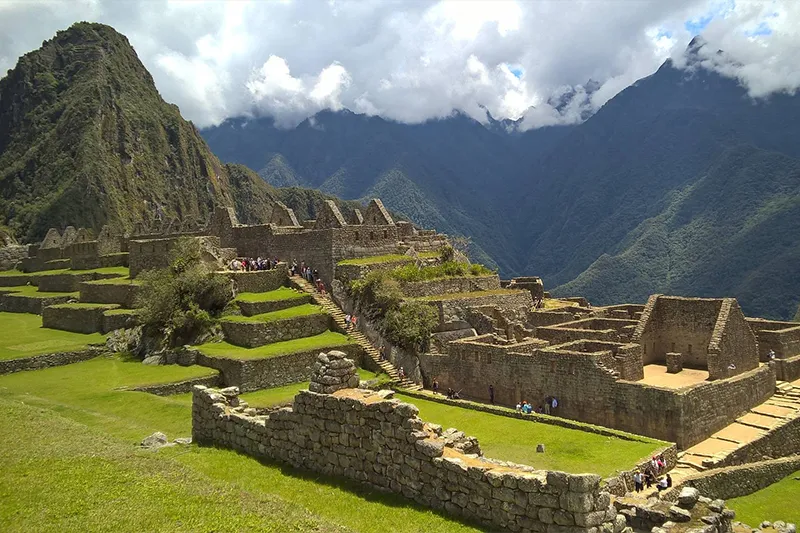
Crowds & Costs
Witness a shift in the atmosphere as March unfolds. The Inca Trail reawakens, beckoning trekkers to explore its ancient paths. However, with the improving weather and the anticipation of the dry season, Machu Picchu sees a notable increase in visitors. The month’s later days, coinciding with Semana Santa, bring about a festive spirit and a surge in prices. The early part of March, though, offers a golden window for savvy travelers to secure deals on accommodations and tours.
Trekking Opportunities
Embrace the reopening of the Inca Trail, signaling a renewed opportunity for hikers. Yet, be mindful – the trails retain a touch of mud and a potential for landslides, echoes of the preceding rainy season. If Semana Santa graces March with its presence, let the vibrant towns and villages in the Sacred Valley captivate you with their festive pageantry.
While the trails might not be at their prime, Machu Picchu in March offers distinct activities. Engage in the Inca Jungle Trek, a thrilling 4-day adventure involving cycling, zip-lining, and rafting. The rivers, swollen from March rains, transform into Class IV rapids, promising an exhilarating rafting experience. Nature enthusiasts will find joy in observing flourishing plants and flowers, reaching their peak after a season of rain.
Train service
For those journeying by train from Cusco to Machu Picchu in March, remember that services from Cusco’s Poroy station are not operational. Instead, a scenic bus ride will carry you for the Cusco-Ollantaytambo leg, followed by a train journey to Aguas Calientes.
If Easter graces March or early April, Semana Santa steals the spotlight. Dive into the week-long festivities, including the captivating Señor de Los Temblores celebration in Cusco. This event commemorates the earthquake of 1650, with a poignant effigy carried through the city on the Monday of Holy Week.
Here’s a table summarizing the pros and cons of visiting Machu Picchu in March:
March in Machu Picchu is a dynamic tale of nature’s renewal and cultural celebrations. Let Kawsay Peru Travel be your companion on this immersive journey. Book your March adventure today and discover the captivating allure of Machupicchu amidst raindrops and cultural fanfare.
- Inca Trail in March
- Machu Picchu in February
Leave a Reply Cancel Reply
You must be logged in to post a comment.
Recent Comments


Best Time to Visit Machu Picchu: A Complete Guide
Apr 22, 2023 | Tour , Travel , Travel Articles | 0 comments

When is the best time to visit Machu Picchu Peru? How long does it take to arrive in Peru from my location? North America. Is the dry season or wet season the best time to travel to Machu Picchu? What months are the dry season? We are going to answer all these questions and more in this informative Machu Picchu travel information. Reach out to us if you have any further questions. Contact Us. We hope you plan to visit Machu Picchu shortly. Machu Picchu is truly a world wonder and a bucket list destination.
Machu Picchu is a historical site located in Peru. It is one of the most popular tourist destinations in the world, and it can be visited at any time of year. Yet, there are some advantages to visiting during certain months of the year. Here in this travel advisory. We will explain everything about Machu Picchu’s best time to go month by month. and How to travel from the United States or other countries to this wonderful place. – PERU TRAVEL AND TOURS TO MACHU PICCHU HERE
Dry Season Wheater Which Runs From April to October.
This is the time of year when there is the least amount of rainfall, and the temperatures are more moderate. It is also the busiest time of year for tourism.
So it is important to book your Machu Picchu tickets official Site. And of course accommodations in advance.
If you are unable to visit during the dry season, the next time to visit Machu Picchu is during the shoulder season, which is the months of November and March. This is the time of year when there is rainfall, but it is still possible to enjoy clear days and moderate temperatures.
The shoulder season is also less crowded than the dry season. So it may be easier to find any Machu Picchu tours or entrance tickets and accommodations.
My friend no matter when the best time of year to visit Machu Picchu is, it is sure to be an unforgettable experience just be sure to read any other recommendations from the internet or you can keep reading about Machu Picchu’s travel articles below.
Related Post: 11 Places to Visit in Peru Besides Machu Picchu
Morning or Afternoon is The Best Time to Visit Peru Machu Picchu
Visiting Machu Picchu is a once-in-a-lifetime experience that few get to enjoy. When considering Machu Picchu best time to visit. Most people recommend catching the awe-inspiring sights at sunrise 6 am, or Sunset at 5 pm.
Personally, as an official Tour Guide, Both times provide incredible opportunities for unique photos and more chances to appreciate the ancient Inca ruins in serenity and peace.
You can visit Machu Picchu between its opening time at 6 a.m. and its closing time at 5:30 pm daily. For the best experience, visit either first thing in the morning or after 3 p.m. By arriving right at 6 am, you’ll be able to watch the sunrise and beat the mid-morning and afternoon crowds.
If you prefer more of a sleep-in after 3 pm is another great time. The majority of the crowds have already left, and depending on the time of year, you’ll get to watch the very much underrated sunset.
- How to Travel to Machu Picchu
- Best Time To Visit Galapagos Island
- Inca Trail to Machu Picchu Everything you need to know
- Galapagos Travel to See the Wildlife
- Best Time to Visit Machu Picchu Lonely Planet
How to Visit Machu Picchu From North America including Mexico, Canada, and the USA?
There are a few different ways to get to Machu Picchu from North America. The most direct route is to fly into Lima, the capital of Peru, and then take a connecting flight to Cusco. We HIGHLY recommend you take the flight and avoid the Bus.
From Cusco, you can take the train ( Vistadome Train or Belmond Hiram Bingham Luxury Class Train ) that takes you to the small town of Aguas Calientes, (Machu Picchu Pueblo) and take a 30-minute tourist bus where the Machu Picchu site is located.
The second option is to take a bus straight to the Hydroelectric town from Cusco, which takes a 4-hour drive to the hydroelectric train station and then a 30-minute train to Aguas Calientes town, The next day takes a tourist bus $24 round trip where Machu Picchu is located. Just make sure to buy your Machu Picchu Train Tickets ahead.
RELATED : Discover Machu Picchu With Adventures By Disney
Second Option
Another option is to fly into Santiago, Chile, and then take a bus or train to Arequipa, Peru. From Arequipa, you can take a bus or flight to Cusco and then follow the same route as above.
Third and The Last Option to Visit Machu Picchu
Finally, you can also fly into La Paz, Bolivia, and then take a bus or Andean Explorer Train – Inca Rail to Cusco. Again, from Cusco, you can take a train or bus to Machu Picchu. Whichever route you choose, be sure to allow plenty of time to explore all that Machu Picchu Travel and Tours has to offer.
Where is Cusco City and What To Do Visiting Machu Picchu?
Cusco is the former capital of the Inca Empire and is now the largest city in the Peruvian Andes. It is a popular tourist destination for its ancient ruins, colonial architecture, and vibrant culture.
Some of the things to do in Cusco include visiting the Plaza de Armas and touring the Sacred Valley of the Incas. By TripAdvisor. Visiting the Temple of Sacsayhuaman, and exploring Rainbow Mountain is an absolute must. Cusco is also home to a variety of festivals and cultural events throughout the year.
Keep in mind if you are planning to camp in Peru best time to travel to Cusco and Machu Picchu for hiking activities is during the dry season, which runs from April to October. This is the time of year when there is the least amount of rainfall, and the temperatures are more moderate. It is also the busiest time of year for tourism, so it is important to plan your Machu Picchu Vacation trips and Hotel accommodations.

When Is Machu Picchu The Most Crowded? (Holidays)
In the main season of June through August, you can assume every day will be busy at Machu Picchu. Outside of the dry season, other dates also see an influx of travelers, students, and families. These include:
- Thanksgiving Holiday – End of November
- Christmas Holiday & Winter break – December 23 to mid/late January
- Spring Break – One week in March or early April. This is a popular time for students to visit the Americas
- Summer Break – Early/mid-May to the day after Labour Day in early September
- Major federal and state holidays – Religious holidays also need to be considered
- Peru Independence Day (July 28 – 28), is a prevalent time for Peruvians to visit Machu Picchu
What Kind of Tour Activities Does Machu Picchu Offer?
Cusco city offers a variety of tour activities, including:.
CITY TOUR: This 1/2-day tour is great for acclimatization and perfect for those who intend to hike treks around Machu Picchu. HIKING & CAMPING: The most attractive and competitive Machu Picchu hike is the classic Inca trail to Machu Picchu 4 days, RIVER RAFTING: In the Urubamba River and Apurimac Rivers located 30 minutes away from the city. MOUNTAIN BIKING: Maras Moray, Sacred Valley HORSEBACK RIDING: All around Cusco CULINARY TOURS: Visit the most traditional restaurants in Cusco such as la Cusquenita which offers original Cusco dishes. CULTURAL TOURS: Walk with llamas and Alpacas in Chincheros Peru , and visit real Andean Communities around the Sacred Valley in Peru.
All these tours offer an exciting and unique way to experience the beauty of Cusco. Be sure to choose the tour that best suits your interests and needs.

Best Time To Hike The Inca Trail to Machu Picchu
Itinerary by tour leaders peru adventure peruvian tour operator.
The Inca Trail is a fascinating hike through the heart of Peru, leading you to one very special place. This ancient path was used by locals centuries ago and today it still tests your strength as an explorer with its many steps up steep hillsides or long stretches on level ground where views are everywhere!
You’ll pass stone temples that bridge centuries; lush forests filled with treetops showing off profuse vegetation; refreshing springs providing drinkable water throughout this challenging yet rewarding trek. The result? A day at Machu Picchu sacred city teeming with bewitching legends – is perfect for making those reservations before they sell out.
The Classic Inca Trail to Machu Picchu is a must-do adventure for any visitor looking to experience Peru’s magnificent mountain scenery and ancient cultures. With 26 miles (43km) worth of spectacular views, this route connects three different ecosystems that provide an interesting balance between cloud forests on high elevations while also containing ruins from before European contact occurred in South America–including Tiwanaku astronomical sites nearby which were once among Earth’s largest cities! The entire trail has a “mystical” feel as you make your way through mystical mountainscapes topped off by conquered stairs leading up towards sacred temples where there awaits…
Day 1: Training Day: Cusco – Ollantaytambo – Piscacucho – Yuncaypata Campsite.
Meals: B/L/D snacks, hot drinks, and popcorn Maximum Altitude: 3,300m/10,826ft Minimum Altitude: 2,700m/8,852ft Distance Travelled: 14 Km/8.5 miles Walking Time: approximately 8 hours
Day 2: Challenge Day: Ayapata – Warmi Wañuska (Dead Woman’s Pass) – Paqaymayu – Chaquicocha
Hiking miles of the inca trail to machu picchu.
Maximum Altitude: 4,200m/13,774ft Minimum Altitude: 3,600m/11,811ft Distance Travelled: 16 Km/ 9.94 miles Walking Time: approximately 10 hours
Day 3: Unforgettable Day: Chaquicocha – Phuyupatamarca – Intipata – Wiñayhuayna
Hiking miles.
Maximum Altitude: 3,600m/11,811 ft Minimum Altitude: 2,600m/8,530 ft Distance Travelled: 10 Km/ 6.2 miles Walking Time: approximately 6-7 hours
Day 4: The Lost City of the Incas: Wiñayhuayna – Intipunku – Machu Picchu – Aguas Calientes- Cusco
Tour to the city of machupicchu.
Maximum Altitude: 2,700m/8858 ft. Minimum Altitude: 2,100m/6889 ft. Distance Travelled: 8 km Walking Time: 5-6 hrs including Machu Picchu guided tour
Classic Inca Trail to Machu Picchu 4 Days Link Here
Inca Trail Best Weather
While the Inca trail has distinct wet and dry seasons, you always want to be prepared for any weather. The months of June, July, and August provide plenty of beautiful blue-sky days, but you’ll want rain gear just in case. You’ll also want plenty of layers, as temperatures can start chilly in the morning, and by the afternoon, you’ll be hiking in shorts and a t-shirt.
RELATED : Machu Picchu Tour 6 Days
When Is The Inca Trail Closed?
The Classic Inca Trail is closed each year in February. The wet season is at its peak between January and March, so with fewer hikers about, it’s a great time to keep the trail in world-class condition. During these months, you can still hike the Lares Inca Trail on your journey to Machu Picchu.
How Many Days Do You Need Visiting Machu Picchu?
We recommend spending at least 7-9 days in Peru visiting Machu Picchu and the surrounding Incan ruins, with time to explore Cuzco before or after. You may extend your journey by traveling a little farther to see the Peruvian Amazon River by cruise. Other options include Lake Titicaca, or the Colca Valley if you take extra travel time.
Machu Picchu Temperatures
Located at 2440 meters (8000 feet), you may be surprised to learn that Machu Picchu’s temperatures are relatively mild all year round. Temperatures stick between 50 to 80 degrees Fahrenheit (10 to 27 degrees Celcius) year-round on average, with only a few degrees difference between mid-summer and mid-winter. With Machu Picchu’s high altitude, you can expect the weather to change unexpectedly, so always be prepared for both rain and sun.
Machu Picchu Rainy Season
For many, the rainy season is not the ideal time to visit Machu Picchu. Between December and February, you’re much more likely to experience periods of heavy rainfall, which can cause the trail to be muddy and slippery. However, with the proper gear and an adventurous spirit, you can experience Machu Picchu in solitude.
Things to Do Into Machu Picchu Inca City and Nearby
Machu Picchu is a fascinating place with a lot of history and culture. There are several things to do in the city, including:
Sun Gate In Machu Picchu or Intipunku
The Sun Gate is a unique experience that allows you to hike up from Machu Picchu in just 1 hour and then return down. There is no need for permits or any other paperwork since it takes place on the last stage of the 4-day Classic Inca Trail Expedition.
Visitors to Machu Picchu often wonder where the Machu Picchu sun gate is located. The sun gate, also known as Inti Punku, is situated at the top of a long flight of stairs leading up to the ancient Inca site. From the sun gate, visitors can enjoy panoramic views of the ruins as well as the surrounding mountains and valleys.
The sun gate is believed to have served as an entranceway for important religious ceremonies. It is thought that the Incas would have used the gate to welcome the sun during the winter solstice. Today, the sun gate remains an important part of the Machu Picchu experience, and visitors can appreciate its beauty and significance while enjoying one of the most breathtaking views in all of Peru.
Inca Bridge
The Inca Bridge is located in Mach Picchu, which is a UNESCO World Heritage Site in Peru . The site is situated on a mountainside and overlooks the Urubamba River valley. The Inca Bridge is made up of three stone walls that are held together by mortarless joints. The bridge has a handrail and is believed to have been used by the Incas to transport goods across the river. Today, the Inca Bridge is a popular tourist destination. Visitors can walk across the bridge and enjoy views of the surrounding landscape.
The Inca bridge is in the opposite direction of the Sun gate. This amazing Inka bridge was one of the main access to Machu Picchu Citadel. You don’t need to pay extra to enter, but you must be able to walk through a narrow and steep path. It is better to avoid this bridge if you have vertigo!
Huayna Picchu Mountain
Huayna Picchu is an hour-long hike from Machu Picchu, but it’s worth every second. The views at the top are breathtaking and there’s no other way to see them than up close! A permit for this stunning short hike needs to be reserved months in advance so plan before you try going on your own or risk missing out completely Read: What is the difference between Huaynapicchu and Machu Picchu Mountain
Machu Picchu Mountain or (Montañ a Machu Picchu)
Machu Picchu Mountain or Montaña Machu Picchu is located on the opposite side of Huayna Picchu. It takes 1-2 hours to reach the top. With every step the view is stunning! Good luck booking your permits on short time notice, so make sure to book them far in advance!

Visit Machu Picchu Local Museum
The museum is near the bridge that leads to Machu Picchu. You can walk there in 20 minutes from Aguas Calientes. If you have already seen this amazing Machu Picchu ruins site before then ask one of those waiting for buses for directions. Leave yourself at the arrival point “Museo de la Coca.” A fee does apply (7 USD).
Butterfly Station
The Butterfly Station is a must-see for any visitor to the area. Located just outside of Aguascalientes, it’s easy enough to access and only takes about 10 minutes away from Aguas Calientes town on foot! You’ll learn many interesting facts about local butterflies while taking pictures with them. There’s also an entrance fee that varies depending upon the time spent there (10 soles) prices variate in the group.
Putucusi Mountain
You can also visit another mountain called Putusi. This hike takes about 3 hours and provides stunning views of Machu Picchu from its peak. Though it’s an extra fee for guides so we recommend going with one if possible!
Mandor Gardens
Hiking and exploring the world has never been so much fun! If you are looking for an adventure that will take your breath away, then head out on a hike. You can explore this beautiful place called Mandor Waterfalls which is only 1 hour from Aguas Calientes Town. Not bad if we’re talking about 3 hours worth of walking round trip (or more)!
Hot Springs
Located in the upper part of Machu Picchu Pueblo (also known as Aguas Calientes). You can access it by a 15-minute walk from your Hotel; these natural hot springs are perfect for visiting if you have an off day! There is something for everyone in Machu Picchu, so be sure to explore all the different options. You won’t regret it!
Is the Dry Season the Best Time to Visit Machu Picchu?
The dry season is the ideal time to visit Machu Picchu. Not only is there less chance of rainfall, but the temperatures are also more moderate. This makes it a great time to explore the ancient ruins and take in the stunning views. It is also the busiest time of year for tourism, so it is important to book your Machu Picchu tickets and accommodation in advance.
Despite the crowds, the dry season is still the best time to see Machu Picchu. The Inca citadel is located in the Andes Mountains, and the weather can be unpredictable. Rain showers are common, even during the dry season. So, if you want to avoid getting caught in the rain, it’s best to visit during the dry season.
Machu Picchu is one of the most popular tourist destinations in the world, and it can be visited any time of year. Yet, the dry season June – July is the best Moth to visit Machu Picchu. Not only will you have better weather, but you’ll also avoid crowds.
April to October is the Best Time to visit because of the Weather, hence, lots of tourists.
If you’re looking for the best weather, April to October is the ideal time to visit Machu Picchu. This is the dry season in Peru, and there is very little rainfall. The temperatures are also more moderate during this time of year. Yet, it is important to note that this is also the busiest time of year for tourism.
Best Month to Visit Machu Picchu
Visiting in shoulder season.
For Machu Picchu, the shoulder season takes place in May, June, September, and October . During those months, the chance of rain remains at a minimum and while the crowds remain large, they are not nearly as massive as those found during the high season.
Machu Picchu in April
It is the start of the dry season in Machu Picchu, and the weather is very pleasant. Temperatures hover around 20 degrees Celsius (68 degrees Fahrenheit), and there is little rainfall. This makes it a great time to explore the ancient ruins.
So visitors can enjoy clear views of the ruins. April is also a good time to visit because Machu Picchu is less crowded than during other times of the year. However, it is important to book tickets in advance, as April is the beginning of the high season for tourism in Peru.
Machu Picchu in May
It is another good month to visit Machu Picchu. The weather is still dry, and the temperatures are a bit warmer. This is a good time to visit if you want to avoid the crowds but still have nice weather.
In May, the weather in Machu Picchu can get as high as 20 degrees Celsius/70 degrees Fahrenheit. Which necessitates wearing extra layers such as long sleeves, sun hats, and a lot of sunscreens. Keep in mind that at night the temperatures drop to 13 degrees Celsius/55 degrees Fahrenheit, necessitating thicker clothing layers.
June – Winter Solstice in Peru
The beginning of the rainy season is here, but it’s still not enough rain. The weather remains warm and this makes for a great time to visit Machu Picchu! It’s also high season in Cusco as celebrations start for winter solstice begin with thousands visiting from all over Peru during June
There are festivals such as the Inti-Raimi Festival where people recreate ancient religious festivities using music performed by flute bands. The average temperatures range between 20°C/58°F and 11°C/52°F. Expect freezing temperatures -5°C/23°F during the nights and in the early mornings. Despite the lower temperature, the vistas of the mountains and valleys during the day are breathtaking, and at night, the magnificent Milky Way sights are breathtaking as well.
Is July a Good Time to visit Machu Picchu ?
Definitely yes! There might be some rainfall but the temperatures are still warm. This makes it a good time to visit Machu Picchu. By July, the cold winter air has been replaced by warm summer-blown winds and bright sunshine.
The landscape is covered in lush greenery while mountains loom large ahead of you on every side- it’s difficult to believe that this was once an ancient Incan citadel! Even at night when temperatures drop below freezing (20 degrees Celsiustars are shining overhead like diamonds against black velvet skies; they’ll make your heart sing just looking up from their endless depth…
Families will want to pack plenty of extra clothes for themselves as well: unless its planned accommodations have heaters inside them yours might get chilly walking around outside after dark if Fahrenheit ties aren’t enough anymore
August windy Season
It is the peak of the dry season. The temperatures are also warm, making it a good time to visit Machu Picchu. The temperature at Machu Picchu is fairly cold in August, so be prepared with winter gear. The crowds are just not letting up as many people from the Northern Hemisphere go on vacation during this time of year and expect long lines or even overcrowding on hiking trails if you want to avoid them!
To make sure your trip goes smoothly try climbing up into one of those mountains instead- they have amazing views that won’t disappoint ( promise). In August, the temperature on the Inca Trail and Machu Picchu is usually below 20°C/68°F during the day and above 12°C/54°F at night. Temperatures drop to near-freezing levels throughout the nights and early mornings. In contrast, temperatures reach into the high seventies during the day.
Visiting Machu Picchu in September
It is the end of the rainy season, and there is less rainfall. The temperatures are also warm, making it a good time to visit Machu Picchu. September is an ideal month to visit Machu Picchu. The weather is mild, with average temperatures ranging from the mid-60s to the low 80s. Although there can be some rain showers, they are typically short and don’t interfere with sightseeing.
This is also one of the least crowded times to visit, as many travelers wait until October or November to make the trip. As a result, you’ll have more opportunities to explore the ruins without large crowds. September is also a good time to visit if you’re interested in seeing the Inca Trail. This popular hiking route is usually closed in February due to heavy rains, but it reopens in March. If you’re planning a visit to Machu Picchu, September is an ideal time to go.
Visit Machu Picchu in October
It is the start of the dry season, and the weather is very pleasant. Temperatures hover around 20 degrees Celsius (68 degrees Fahrenheit), and there is little rainfall. This makes it a great time to explore the ancient ruins.
November is Still a Good time to visit Machu Picchu Beginning of the rainy season.
If you’re looking to avoid crowds, November is still a good time to visit Machu Picchu. Although it’s during the high season, the weather is moderate and there are fewer tourists than in the peak months of July and August.
December through March is the rainy season in Peru, so if you’re not keen on trekking in the rain, this is not the best time to go to Machu Picchu Peru.
December to March is the Rainy season with more Rainfall and cooler temperatures.
The rainy season runs from December to March, and this is when Machu Picchu sees the most rainfall. The temperatures are also colder during this time of year.
However, there are still plenty of tourists who visit Machu Picchu during the rainy season. If you don’t mind getting wet, then you can still enjoy all that the ancient site has to offer. Just be sure to bring an umbrella and wear comfortable rain shoes.

Machu Picchu in December
Marks the beginning of the rainy season, but there is still very little rainfall. The temperatures are also warm, making it a good time to visit Machu Picchu.
December is a month where you can enjoy the relative tranquility of Cusco, OR experience an exhilarating holiday season with its many festivities. December sees high visitor loads to Peru’s most famous city during Christmas and New Year celebrations which draw in people from all over Latin America as well as Europe!
What is The Warmest Month Visiting Machu Picchu?
The warmest month in Machu Picchu is December when the average temperature is 21°C. January and February are also warm months, with average temperatures of 20°C. The rainy season runs from November to March, so if you want to avoid the rain, it’s best to visit during the dry season.
Machu Picchu in January – Heavy Rain and Incidents of This Year
- The weather in Machu Picchu is unpredictable but it’s always best to prepare for anything. For instance, if you’re planning on hiking the Inca Trail be sure to do so during the off-season when there aren’t as many tourists around and avoid anytime between January and February because of recent heavy Rains dawning activity that caused an earlier closure due to large amounts of glacial ice melting at Salkantay mountain causing massive mudflows which destroyed parts of the trails.
- The famous Inca ruins of Machu Picchu were partially evacuated on Thursday 22 January 2022 after an overnight landslide knocked out about 400 meters (1,300 feet) worth of railway tracks, blocking the train route to and from this mountainous area.
The temperatures in Machu Picchu in January are warm ranging between 27˚C/80˚F during the day and 17˚C/63˚F at night.
Wors Time Visiting Machu Picchu – February
It is the peak of the rainy season, and there is more rainfall. The temperatures are also warm, making it risky to visit Machu Picchu.
Expecting wet conditions in February, which make this the worst time to visit Machu Picchu . During rainstorms, you’re at risk of getting stuck because no trains are running between Aguas Calientes and Ollantaytambo so if a landslide blocks either path then all options will be cut off. The Urubamba River also tends to get flooded easily during these months making it difficult when trying to return to Cusco city.
The Inca Trail is a popular hiking destination. But it’s important to remember that the National Sanctuary of Machu Picchu reserves all rights along this classic Inca Trail. In February they will close off part to clean and maintain its natural beauty for visitors who want to explore Peru’s most famous hike to Machu Pichu!
Bridges can get replaced due to too heavy rains which makes them slippery when wet; things also become dangerous especially if you plan on climbing either Huayna Picchu or Machu Picchu Mountain during these months because both mountains are high-risk areas according to tot the guidebooks. The temperatures in Machu Picchu in February range from 28˚C/82˚F during the day and 18˚C/65˚F at night.
Machu Pichcu in March
Is the end of the rainy season, and there is less rainfall. The temperatures are also warm, making it a good time to visit Machu Picchu.
But we highly recommend booking any Peru Travel Tours in Advance, including an Inca Trail trip. With rain decreasing and temperatures rising throughout this month, it is now optimal for visiting Peru’s most famous landmark!
The views will be beautiful as the mountainsides dry out after weeks under cloud cover; you can take some amazing photos with friends or family here at sunset (or sunrise) temperatures in Machu Picchu range between 27˚C/81˚F in the daytime and 17˚C/64˚F at night.

Best Time To Visit Machu Picchu and Galapagos
Visiting Machu Picchu and the Galapagos Islands is a once-in-a-lifetime experience for many travelers, and understanding the best time to visit can make all the difference. Planning your trip for the shoulder season months of April or October is best, especially if you plan on doing heavy sightseeing.
Weather conditions are more pleasant during these months and fewer tourists are crowding up the popular attractions. For wildlife enthusiasts looking to explore the Galapagos, you’ll also want to plan your travel around the rainy season—from December through June—as wildlife sightings can be best during this period. With careful planning, you can ensure top-notch viewing experiences!
Tips for visiting Machu Picchu
Make sure to pack appropriate clothing for the time of year you’ll be visiting..
No matter what time of year best time to travel to Machu Picchu, it’s important to pack appropriately. If you’re traveling during the rainy season, make sure to bring a rain jacket and waterproof shoes. If you’re visiting during the winter months, bring a warm coat, hat, and gloves.
And if you’re going during the summer, be sure to pack sunscreen, a hat, and sunglasses. With the right clothes, you’ll be prepared for whatever the weather throws your way! Consider reading the detailed Peru Packing List for Months
Book your Machu Picchu Tickets And Accommodation in Advance, as it Can Get very Busy During Peak Times.
If you’re planning on visiting Machu Picchu during the dry season, it’s necessary to book your tickets and Hotels in advance. This is the busiest time of year for tourism, so you’ll want to make sure you have a spot secured.
You can book your tickets online through the official Machu Picchu website. For accommodation, there are some options in the nearby town of Aguas Calientes.
Be Prepared for a lot of walking and Climbing, as the Site is quite Steep in Some places.
Machu Picchu is a historical site located in the Andes mountains, and there is a lot of walking and climbing involved. The site is quite steep in some places, so be prepared for a challenging hike. You’ll also need to be trained for the altitude, as Aguas Calientes is located at over 2,400 meters above sea level. Drink plenty of water and take it easy on your first day if you’re not used to the altitude.
Enjoy the stunning views and history!
Make sure to have plenty of water and snacks with you, as there are no food or drink outlets at Machu Picchu.
Machu Picchu is a beautiful site with stunning views, so make sure to take your time and enjoy the experience. There are also a lot of historical Machu Picchu Circuits to explore, so be sure to learn about the site’s history before you visit.
And don’t forget to bring plenty of water and snacks, there food and drink outlets at Machu Picchu are relatively expensive because of the location.
If You Can’t Go During the Dry Season, The Advantages of Going During The Shoulder Season.
The shoulder season in Peru is from November to March, and it’s a great time to visit Machu Picchu. This is because the temperatures are more moderate, and there is less rainfall than during the rainy season. It’s also not as busy as the dry season, so you’ll have more room to explore the site. Just be prepared for the possibility of rain.
No matter what time of year you visit Machu Picchu, it’s sure to be an unforgettable experience. With beautiful views and plenty of history to explore, you’ll be glad you made the trip. Make sure to pack appropriately for the weather and book your tickets and accommodation in advance to ensure a spot!
Home | Background Information | Article Corrections | About Us | Contact Us © 2023 – Blissful Travel Escapes LLC All rights reserved worldwide. No part of this website may be reproduced without our written permission. Please feel free to share our articles with others by providing a link back to the original article on our website. Other than links provided directly to this site, the information contained within is intended for personal use only and is neither endorsed nor approved by this website or its respective affiliates. Any unauthorized reproduction of any content, in part or full, is strictly prohibited.
Submit a Comment Cancel reply
Your email address will not be published. Required fields are marked *
Save my name, email, and website in this browser for the next time I comment.
Submit Comment
Dear Valued Customer
We use affiliate links on our website. This means we earn a commission from partner advertising or affiliate programs when you buy a product through these links. It won’t affect our product prices. Thank you for supporting our DM Marketing Program by purchasing through our website. Visit our website for more info on our terms and privacy policies.
Thank you for your loyalty.
Best regards,
- Inspiration
- Luxury Hotels
- New Products
Travel Articles
- U.S. National Parks
Alaska Alaska Cruises Alaska Travel amawaterways Amazon River Cruise Bora Bora California Cancun Packing List Caribbean Resorts Caribean Islands Costa Rica Cruises Disney Disney Cruises Disneyland Disney Travel Disney World Europe Galapagos hawaii Travel Islands Maldives Luxury Hotels Mexico national parks in usa National Parks USA Paul Gauguin Cruise Peru Rivera Maya River Cruise Shoes Tahiti Travel Turks & Caicos Travel
Recent Posts
Is it worth going on a disney cruise, when to visit alaska: finding the perfect time, exploring disney’s aulani resort: an honest review from oahu, hawaii island, disney destiny cruise is the new ship for 2025, the cost of a 7-day disney cruise: everything you need to know, related blogs.

If you’re looking for the best time to visit Alaska you’ll want to plan your trip with Blissful Travel Escape

Disney , Travel Articles

Cruises , Disney , Travel Articles

Do Kids pay full price on a Disney Cruise?

Is all food truly complimentary on a Disney Cruise?

Which passport is the most powerful with visa-free access to 194 countries?

Is Disney Cruise All-Inclusive? A Comprehensive Guide for Families
Protect Your Trip »
Machu picchu tours: how to get there and tips for visiting.
Here is everything you need to know to plan a trip to Machu Picchu.
How to Get to Machu Picchu

Getty Images
A hike around Machu Picchu is a must-do if you're visiting Cusco, Peru.
Note: Some of the below destinations may be affected by the civil unrest in Peru. Check with the U.S. Department of State before traveling.
Machu Picchu is thought to be one of the largest and most impressive Incan cities of its time. Today a UNESCO World Heritage Site with expansive ruins open to visitors, it sits high on a peak in the Peruvian Andes and is accessed via train or on foot. Here are some tips to help you navigate a visit to this incredible archeological site.
What is Machu Picchu? Machu Picchu is a 15th-century Incan city that was abandoned by the Incas after the Spanish conquest. The ruins feature about 200 structures that were used for religious, agricultural, astronomical and ceremonial purposes, though exactly how remains a mystery. It's believed that between 300 and 1,000 people inhabited the city and the area was devoted to the worship of the sun god.
Where is Machu Picchu? Machu Picchu is located in the Peruvian Andes within a tropical mountain forest at nearly 8,000 feet above sea level. Cusco , the nearest major city, is less than 50 miles southeast of Machu Picchu.
When was Machu Picchu built? Historians believe that Machu Picchu was built in the 15th century.
How do you get to Machu Picchu? Machu Picchu can be reached a variety of ways, including hiking the Inca Trail with a tour company, by train or by bus.
When is the best time to visit Machu Picchu? The site is located in the Amazon rainforest in Peru, where the rainy season runs from November to March. To avoid rain, travelers may want to visit during its dry season from April to October. Travelers say that June through August tends to be the busiest, so opting for shoulder months like May or October may help avoid crowds.
Know Before You Go
- What: Machu Picchu tours
- When: Machu Picchu is accessible daily with entrances from 6 a.m. to noon or noon to 5:30 p.m. During the month of February, the Inca Trail is closed for maintenance and is inaccessible to visitors.
- Cost: Entrance tickets cost approximately 152 Peruvian soles (about $45) for adults; 77 soles (around $23) for students.
- Must-know tip: To tour Machu Picchu, you must purchase your ticket online in advance and print it out as no tickets are sold at the site. Experts and fellow travelers recommend purchasing your ticket several months in advance as there only 2,500 visitors allowed per day. If you choose to visit with an organized tour company, the company will take care of reserving and purchasing the ticket for you.
- Website: https://www.machupicchu.gob.pe/inicio
When visiting Machu Picchu, you will be given a specific time you can enter the site. Key attractions include the Temple of the Sun, the Room of the Three Windows, the water irrigation system and the Royal Mausoleum. There is an additional fee to visit the mountains of Machu Picchu and Huayna Picchu, which surround the old city, should you want to hike trails there. After you purchase your ticket – either to Machu Picchu or the site with one of the mountains – be sure to print your ticket and bring it with you along with identification, such as a passport.
Restrooms are located outside the entrance and cost about 2 soles (around 60 cents) to use; there are no restrooms within Machu Picchu. There's no visitor center, but Peru's Ministry of Culture does have an office in Aguas Calientes, a town that acts as the gateway to Machu Picchu. There are also a variety of restaurants in Aguas Calienties to refuel after your trip. Be aware, you also may not be allowed to bring single-use plastics (like sandwich bags) or large bags into the site. If you do bring a large bag, there is a bag storage facility near the site's entrance where you can leave your bag for a small fee as you explore the site.
Machu Picchu is located less than 50 miles northwest of Cusco, a Peruvian city which is also a UNESCO World Heritage Site. Cusco can make a great base for your visit to Machu Picchu as many organized tours to the site begin here.
Since Machu Picchu and Cusco sit at high elevations, almost 8,000 feet above sea level, travelers should prepare for altitude sickness. Talk to your doctor before your trip to make sure your body can handle the altitude change. When you arrive, help your body adjust by getting plenty of rest for the first few days, avoiding alcoholic beverages and drinking lots of water to remain hydrated. You should also plan to wear insect repellent and plenty of sunscreen for the trek. Travelers also recommend dressing in layers and wearing pants and long sleeves, even if the weather is warm, as the mosquitos are known to be relentless.
Tour Options
Though you can opt to visit Machu Picchu (and make the necessary travel arrangements) by yourself, a guided tour can help streamline the process. Multiple tour operators offer daytrips to Machu Picchu. The majority of these tours originate in Cusco and leave early in the morning (at or before 5 a.m.). You'll be taken via bus to the town of Ollantaytambo, where groups board trains to Aguas Calientes. From Aguas Calientes, groups board a bus to Machu Picchu. Travelers generally spend approximately two hours at the site before they begin the trip back to Cusco. Exact tour prices vary, though you can expect to spend approximately $300 per person (including train tickets, bus fare and a guided tour of the site). Travelers generally enjoy the tours, extolling the knowledgeable guides, and appreciate the ease by which they could see Machu Picchu. Others caution selecting your tour company carefully as experiences can vary wildly from company to company.
Travelers can also opt to hike from Aguas Calientes to Machu Picchu on their own via the Carretera Hiram Bingham. The approximately 4-mile journey is a steep climb and can be completed in around 90 minutes. Though an option, most travelers say the walk is long, difficult and lacking in scenery.
Tourists who have ample time, or have a true adventure streak, can hike the Inca Trail to Machu Picchu. The approximately 25-mile trail takes about four days to hike and ends at Machu Picchu. To hike the Inca Trail, you must go with a tour company or hire a guide, as it is no longer permitted to hike the trail on your own. Keep in mind that the trail closes each February for maintenance. Tours can last as little as two days (for an abbreviated journey along the trail) or more than a week to experience additional Peruvian sites.
There are a variety of other attractions and ancient sites nearby Machu Picchu that you may want to add to your itinerary. Titicaca Lake, located at more than 12,000 feet above sea level, is the largest lake by volume in South America. The town of Cusco also has much to see, including cathedrals , temples and a plaza used in Incan times , along with many archeological sites. Take advantage of the Cusco Tourist Ticket (also known as Boleto Turistico del Cusco), which grants access to many of Cusco's attractions for one fee.
Getting There
You can reach Machu Picchu by foot, train or bus, though if arriving by train, your ride will end in Aguas Calientes and you will need to ride a bus or hike approximately 4 miles to access the site. You can take a train from one of several stations near Cusco to the city of Aguas Calientes and then ride a bus to Machu Picchu. (Note: Since these train stations are outside Cusco city proper, you'll need to take a bus to get to them). The train ride via Peru Rail takes about four hours and you can choose from a variety of train types, each with a different price point to accommodate any travel budget. Tickets for Peru Rail are available at PeruRail.com.
You can buy bus tickets from Aguas Calientes to Machu Picchu in advance in Cusco at the Consettur offices, which helps you avoid lines at the actual bus stop. Buses depart from Aguas Calientes approximately every 15 minutes beginning at 5:30 a.m. daily until 3:30 p.m. Visitors recommend getting in line for the bus several hours before your scheduled entrance time at Machu Picchu as lines can be extremely long. Some travelers report getting in line three hours before their scheduled entrance time. You'll also likely encounter lines to take the bus from Machu Picchu back to Aguas Calientes.
Additional tour options:
- CuscoPeru : Full-Day Private Machu Picchu Guided Tour from Cusco. View & Book Tickets »
- Viajes Pacifico : Machu Picchu Day Trip. View & Book Tickets »
- Viajes Peru : Day Tour to Machu Picchu The Inca City. View & Book Tickets »
- Machupicchu Latin America : 2-Day Tour: Sacred Valley and Machu Picchu by Train. View & Book Tickets »
- Inkayni Peru Tours : Full day. View & Book Tickets »
Looking for more information on Machu Picchu? Check out the U.S. News Travel Cusco guide .
Tags: Tours , Travel , Vacations , Peru
World's Best Places To Visit
- # 1 South Island, New Zealand
- # 4 Bora Bora
If you make a purchase from our site, we may earn a commission. This does not affect the quality or independence of our editorial content.
You May Also Like
Flight canceled or delayed what to do.
Amanda Norcross April 26, 2024

The Best Beach Hats
Megan Johnson and Sharael Kolberg April 26, 2024

The Best Florence Tours
John Rodwan April 25, 2024

The 9 Best Louisiana Swamp Tours of 2024
John Rodwan April 24, 2024

How Much Does a Cruise Cost?
Gwen Pratesi April 24, 2024

The Best Whale Watching in Cape Cod
Lyn Mettler April 24, 2024

Best Whale Watching Tours in Maine
Marisa Méndez April 23, 2024

The Best Wineries in Napa Valley
April 23, 2024

The Best East Coast Beaches
April 19, 2024

The Best Luggage Brands
Rachael Hood April 17, 2024

- Destinations
BEST TIME to VISIT MACHU PICCHU (Top #1 Month for Ultimate Adventure)
This site uses affiliate links, meaning that if you make a purchase through our links, we may earn an affiliate commission.
Machu Picchu, the ancient Incan city situated high in the Andes Mountains of Peru, is a popular tourist destination that draws millions of visitors from all over the world every year. However, choosing the right time to visit this iconic site can make a significant difference in your experience. Factors like weather, crowds, and availability of tickets can affect your trip, so it’s crucial to plan accordingly.
In this blog post, we’ll explore the best time to visit Machu Picchu based on different factors that can impact your travel experience. We’ll cover the weather patterns, peak tourist seasons, ticket availability , and other essential factors to help you make an informed decision about when to visit this iconic site. Whether you’re a history buff, an adventure seeker, or a casual traveler, we’ll provide you with all the information you need to plan your perfect trip to Machu Picchu. So, let’s dive in and discover the best time to visit this wonder of the world!
GOOD TO KNOW: If you are starting your Peru adventure in Lima, then make sure to read 22 Expert Lima Tips for First-Time Visitors (Unlock Lima’s Treasures)
You Might Also Like:
9 Top THINGS to DO at MACHU PICCHU (Unveiling the Enchanted City of the Incas)
7 fun and cool things to do in aguas calientes (besides machu picchu), how to reach machu picchu without hiking (2 easy steps).
Cusco to Ollantaytambo: 15 Fascinating Things to Discover at Peru’s Ancient Fortress
- 1. Dry Season in Machu Picchu
- 2. Rainy Season in Machu Picchu
- 3. Best Time to Visit Machu Picchu (Month-By-Month Guide)
- 3.1. Machu Picchu January Weather
- 3.2. Visiting Machu Picchu in February
- 3.3. Weather in Machu Picchu in March
- 3.4. Machu Picchu April Weather
- 3.5. Machu Picchu May Weather (#1 Month to Visit Machu Picchu)
- 3.6. Visiting Machu Picchu in June, July, or August
- 3.7. Machu Picchu Weather in September
- 3.8. Machu Picchu Weather in October
- 3.9. Visiting Machu Picchu in November
- 3.10. Visiting Machu Picchu in December
- 4. Best Time of the Day to Visit Machu Picchu
- 5. Intrepid Scout's Tips for the Best Time to Visit Machu Picchu
Dry Season in Machu Picchu
The dry season in Machu Picchu typically runs from May to October , with June, July, and August being the busiest months for tourism.
The weather is generally clear and sunny during this time, with very little rain. This makes it a great time to visit Machu Picchu, as the clear weather allows for stunning views of the surrounding mountains and ruins. However, a word of caution, even during the dry season, which is the best time to visit Machu Picchu, you need to be prepared for some heavy mists or fog (usually during early morning hours) that can obscure the views.
Traveling during the dry season also means that you are less likely to encounter muddy and slippery trails that can be common during the wet season. Additionally, the dry season tends to have fewer mosquitoes and other insects, making your visit more pleasant.
It’s worth noting, however, that because the dry season is the most popular time to visit Machu Picchu, the site can get very crowded , particularly during peak months. It will be impossible to find any solitude at Machu Picchu Inca ruins. Actually, you will have some difficulty moving through the Sanctuary. You need to have a lot of patience and reserve additional time for your visit.
If you’re looking for a quieter experience, you may want to consider visiting during the shoulder season (April or November) when the weather is still relatively dry but there are fewer tourists.
Rainy Season in Machu Picchu
The rainy season in Machu Picchu typically runs from November to April, with the heaviest rainfall occurring in January and February.
During the rainy season, the weather can be quite unpredictable, with sudden bursts of heavy rain interspersed with sunny spells. This can make hiking and exploring the ruins at Machu Picchu more challenging, as trails can become muddy and slippery.
On the other hand, the rainy season can also be a beautiful time to visit Machu Picchu, as the surrounding mountains and forests come to life with vibrant green foliage and cascading waterfalls. Additionally, the rainy season tends to be less crowded than the peak tourist season in the dry months of June to August.
If you do plan to visit Machu Picchu during the rainy season, it’s important to come prepared with waterproof clothing and sturdy hiking shoes.
The rainy season is from November through March . There will be rain pretty much during that time. So, be prepared to battle some constant drizzle to very heavy downpours.
The heaviest rain is in February. The Inca Trail path is closed for maintenance during that time.
Best Time to Visit Machu Picchu (Month-By-Month Guide)
Machu picchu january weather.
January is typically one of the wettest months in Machu Picchu, as it falls within the rainy season which runs from November to April. During this time, the weather can be quite unpredictable, with heavy rain showers often occurring in the afternoon or evening.
Temperatures in Machu Picchu during January usually range from a low of around 11°C (52°F) to a high of around 20°C (68°F), although it can feel cooler or warmer depending on the humidity and precipitation. The humidity levels can also be high, making the air feel muggy.
The combination of high humidity and heavy rain can make hiking and exploring Machu Picchu more challenging, as the trails can become muddy and slippery. However, the rain also brings lush greenery to the surrounding mountains and forests, creating a beautiful and serene atmosphere.
To sum up, expect rain almost every day. However, if you are ok with the rain, the good news is that the hordes of tourists are gone , and you will have the place to yourself. You will be able to find some solitude.
Hopefully, the weather cooperates, and you might even get a break in the rain and fog and be able to capture some awesome views (weather permitting) without anyone obstructing them.
- Average High Temperature – 24°C (75.2°F)
- Average Low Temperature – 13°C (55.4°F)
- Average Rainfall – 138mm (5.4″)
- Average Rainfall Days – 15 days
- Average Daylight – 12.8h
- Average Sunshine – 5h
- Average UV Index – 12
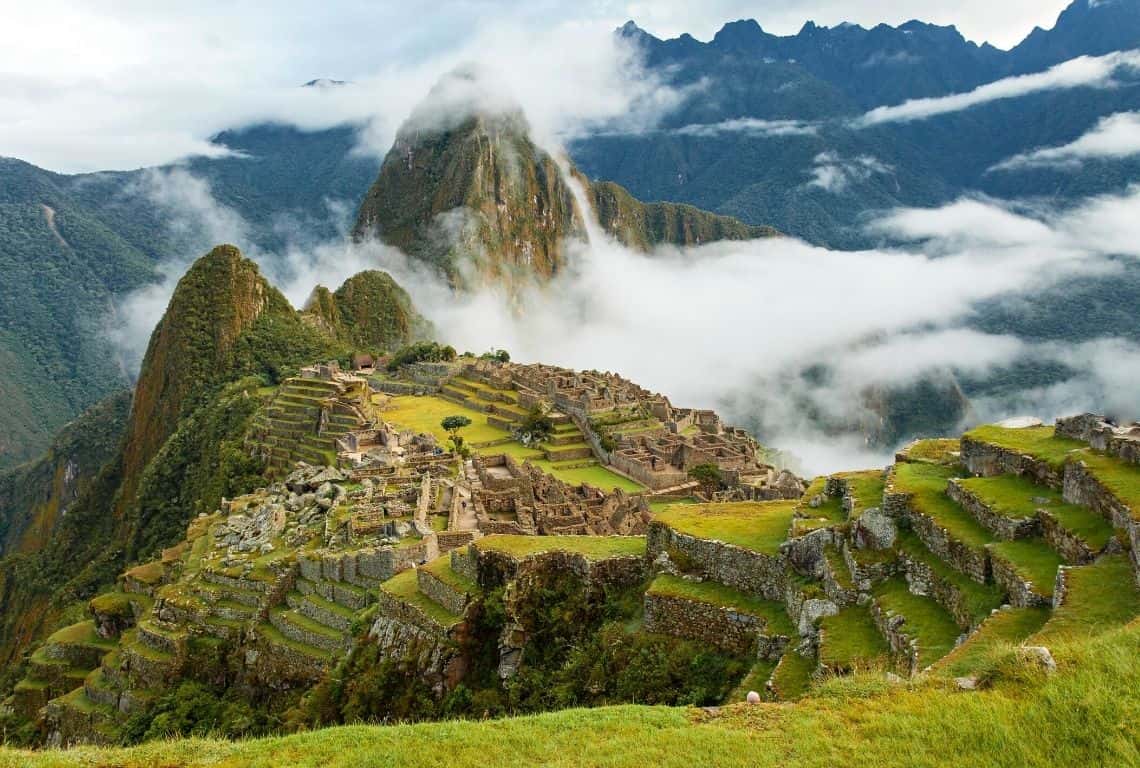
January Weather in Machu Picchu / Best Time to Visit Machu Picchu
Visiting Machu Picchu in February
February is the official rainy season month. It is typically one of the wettest months, along with January. However, the rain tends to taper off towards the end of February, with drier weather becoming more common in March and April.
Temperatures in Machu Picchu during February usually range from a low of around 11°C (52°F) to a high of around 21°C (70°F), although it can feel cooler or warmer depending on the humidity and precipitation. The humidity levels can also be high, making the air feel muggy.
Despite the risk of rain, February can be a great time to visit Machu Picchu. The surrounding mountains and forests are lush and green, and there tend to be fewer crowds than during the peak tourist season from June to August.
Additionally, February is the time of the Inti Raymi festival , which celebrates the winter solstice and the start of the Incan new year. This festival includes colorful parades and traditional Incan ceremonies, adding an extra layer of cultural significance to your visit.
If you do plan to visit Machu Picchu in February, it’s important to come prepared with waterproof clothing and sturdy hiking shoes. It’s also a good idea to book your accommodations and tours in advance, as availability can be limited during this time.
Moreover, the I nca Trail is closed during the entire month of February.
- Average High Temperature – 25°C (77°)
- Average Rainfall – 141mm (5.6″)
- Average Rainfall Days – 20 days
- Average Daylight – 12.5h
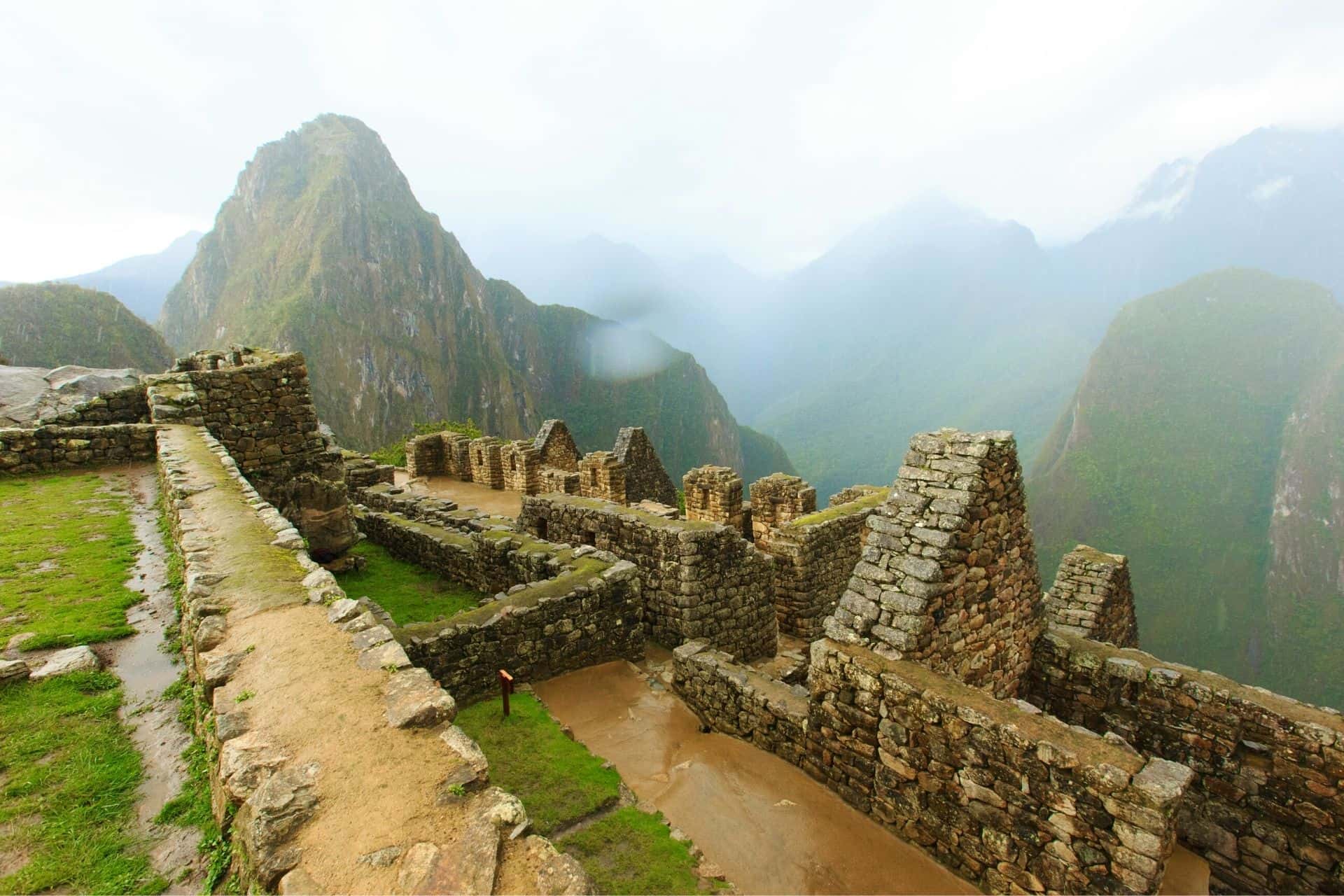
Visiting Machu Picchu in February / Best Time to Visit Machu Picchu
Weather in Machu Picchu in March
March is still within the rainy season in Machu Picchu. However, the rain tends to taper off towards the end of March, with drier weather becoming more common in April.
Temperatures in Machu Picchu during March usually range from a low of around 11°C (52°F) to a high of around 22°C (72°F), although it can feel cooler or warmer depending on the humidity and precipitation. The humidity levels can also be high.
March can be a great time to visit Machu Picchu, as the rainy season is coming to a close and the surrounding mountains and forests are still lush and green. Additionally, there tend to be fewer crowds than during the peak tourist season from June to August.
If you do plan to visit Machu Picchu in March, it’s still important to come prepared with waterproof clothing and sturdy hiking shoes, as there can still be occasional rain showers. However, you may also want to bring sunscreen and a hat, as the sun can be strong and the UV index can be high.
- Average High Temperature – 25°C (77°F)
- Average Rainfall – 151mm (5.9″)
- Average Rainfall Days – 13 days
- Average Daylight – 12.2h
- Average Sunshine – 6h
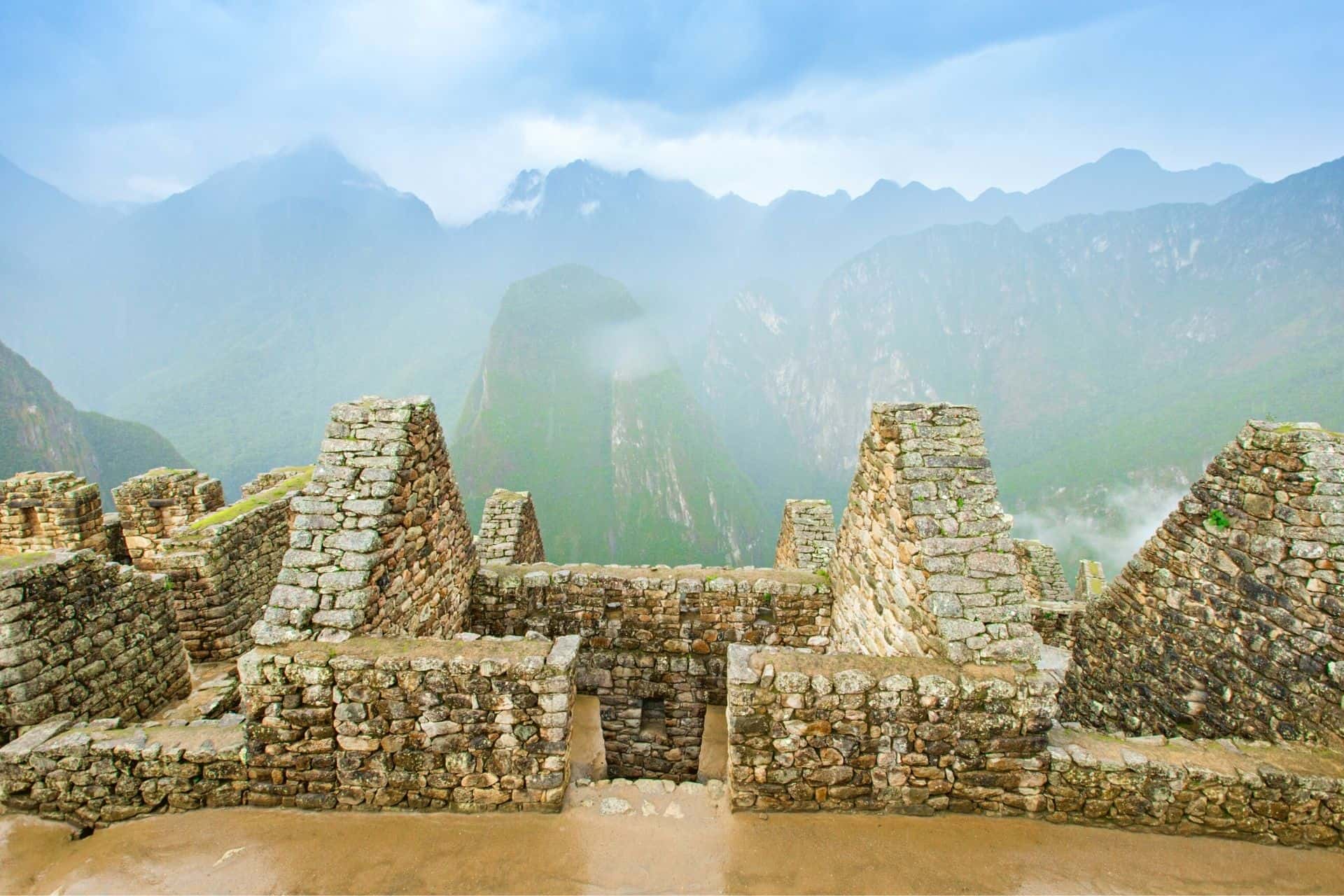
Visiting Machu Picchu in March / Best Time to Visit Machu Picchu
Machu Picchu April Weather
Machu Picchu in April will offer you a unique experience with its dry and mild weather conditions, making it an ideal time to explore the Inca ruins and the surrounding area. With the rainy season coming to an end, you will be able to enjoy clearer skies, longer days, and stunning views of the surrounding Andes Mountains.
The dry season also means that the trails and paths leading to Machu Picchu are generally easier to navigate, with fewer muddy or slippery areas. This makes for a more comfortable and enjoyable hiking experience.
During the day, temperatures in Machu Picchu can range from the mid-60s to the mid-70s Fahrenheit (high teens to mid-20s Celsius). At night, temperatures can drop significantly, reaching as low as the mid-40s Fahrenheit (around 7-8 degrees Celsius).
In terms of crowds, April is considered a shoulder season, meaning that while there will still be plenty of people heading to Machu Picchu, it is generally less crowded than the peak season of June to August. This will allow you to explore the site more leisurely and take in the breathtaking views without feeling rushed.
One thing to keep in mind is that April is still a popular time to visit Machu Picchu, so it’s important to plan ahead and book accommodations and tours well in advance. This will help ensure that you get the most out of your visit to this incredible site.
- Average Low Temperature – 12°C (53.6°F)
- Average Rainfall – 62mm (2.4″)
- Average Rainfall Days – 9 days
- Average Daylight – 11.8h
- Average Sunshine – 7h
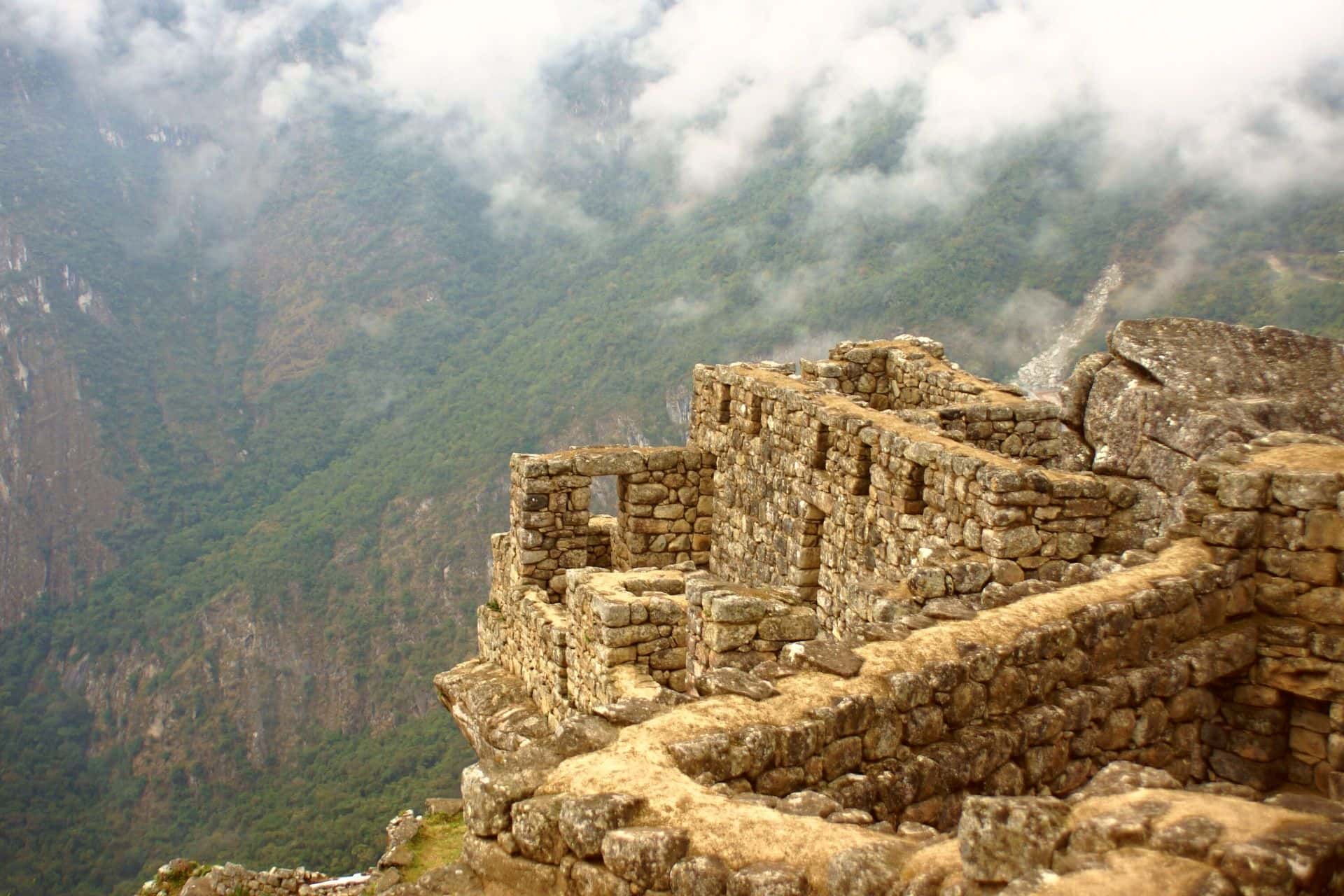
Visiting Machu Picchu in April / Best Time to Visit Machu Picchu
Machu Picchu May Weather (#1 Month to Visit Machu Picchu)
May is still considered the end of the rainy season in Machu Picchu, and the weather is generally mild and pleasant during this time. However, there is a slightly higher chance of rain compared to the rest in the dry season. You can expect mostly clear skies and sunny days. It’s always a good idea to bring a waterproof jacket or poncho just in case of a brief afternoon shower.
During the day, temperatures in May can range from the mid-60s to the low 70s Fahrenheit (high teens to low 20s Celsius). At night, temperatures can drop to the mid-40s to low 50s Fahrenheit (around 7-10 degrees Celsius). As with any time of year in Machu Picchu, it is always a good idea to dress in layers.
In terms of crowds, May is generally a quieter time to visit Machu Picchu compared to the peak season of June to August, which means you can expect shorter lines and fewer crowds at the site.
Overall, May is a great time to visit Machu Picchu, with mild weather conditions and fewer crowds compared to the peak season. In my opinion, it is the best time to visit Machu Picchu!
- Average Low Temperature – 11°C (51.8°F)
- Average Rainfall – 23mm (0.9″)
- Average Rainfall Days – 6
- Average Daylight – 11.5h
- Average Sunshine – 8h
- Average UV Index – 11
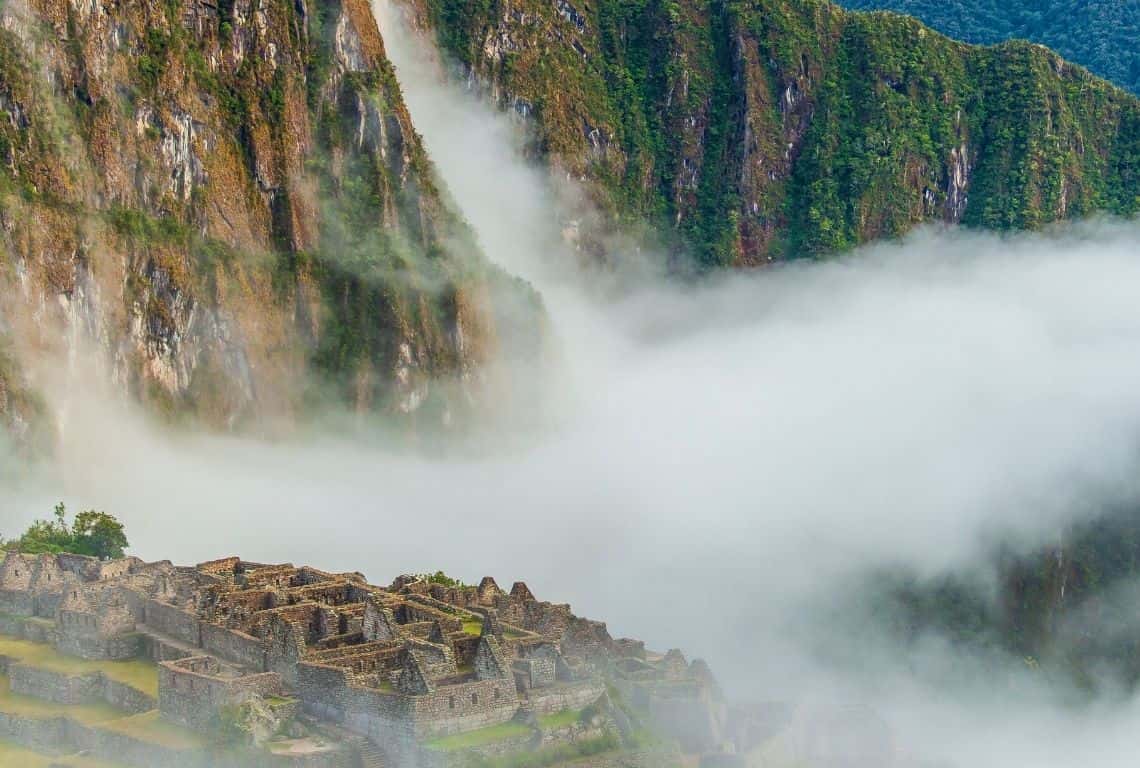
Visiting Machu Picchu in May / Best Time to Visit Machu Picchu
Visiting Machu Picchu in June, July, or August
June, July, and August are the peak months for tourism in Machu Picchu, as they fall within the dry season and offer the most favorable weather conditions.
During these months, you can expect clear skies, sunny days, and mild temperatures, with daytime temperatures ranging from the mid-60s to low 70s Fahrenheit (high teens to low 20s Celsius), and nighttime temperatures ranging from the mid-40s to low 50s Fahrenheit (around 7-10 degrees Celsius).
However, it is important to keep in mind that these months are also the busiest time to visit Machu Picchu, which means longer lines, more crowded buses and trains, and busier trails. This can make it more difficult to secure permits for popular hikes such as the Inca Trail, and it is important to book accommodations and tours well in advance.
Despite the crowds, visiting Machu Picchu during the peak season has its benefits. With clear skies and dry conditions, you will enjoy stunning panoramic views of the surrounding mountains and landscapes, and the site itself is at its most photogenic. Additionally, the peak season offers the most extensive schedule for buses and trains to and from Machu Picchu, making transportation more convenient.
In summary, visiting Machu Picchu during the peak season of June to August offers ideal weather conditions and beautiful views, but it also means more crowds and higher prices.
- Average Low Temperature – 9°C (48.2°F)
- Average Rainfall – 17mm (0.7″)
- Average Rainfall Days – 2
- Average Daylight – 11.4h
- Average UV Index – 10
Machu Picchu Weather in September
September pretty much marks the end of the dry season in Machu Picchu, however, it is a great time to visit as the weather is mild and pleasant, with fewer crowds compared to the peak season.
During the day, temperatures in September can range from the mid-60s to low 70s Fahrenheit (high teens to low 20s Celsius), and at night, temperatures can drop to the mid-40s to low 50s Fahrenheit (around 7-10 degrees Celsius). However, as the month progresses, temperatures can start to drop a bit, and you should be prepared for cooler temperatures, especially at higher altitudes.
Rainfall is generally low in September, but there is a slightly higher chance of rain compared to earlier in the dry season. It’s always a good idea to bring a waterproof jacket or poncho just in case of a brief afternoon shower.
One of the advantages of visiting Machu Picchu in September is that it is considered part of the shoulder season, which means there are fewer crowds compared to the peak season of June to August. This will allow you to enjoy the site more leisurely and take in the breathtaking views without feeling rushed. Additionally, accommodation and tour prices may be lower compared to the peak season.
- Average High Temperature – 26°C (78.8°F)
- Average Rainfall – 44mm (1.7″)
- Average Rainfall Days – 7
- Average Daylight – 12h
Machu Picchu Weather in October
October marks the end of the dry season in Machu Picchu, but it is still a good time to visit the site, although you should be prepared for a higher chance of rain compared to earlier in the dry season. However, despite the higher chance of rain, there are still plenty of clear days, and you can still enjoy stunning views of the surrounding landscapes.
During the day, temperatures can range from the mid-60s to low 70s Fahrenheit (high teens to low 20s Celsius), and at night, temperatures can drop to the mid-40s to low 50s Fahrenheit (around 7-10 degrees Celsius).
October is also considered part of the shoulder season in Machu Picchu, which means there are fewer crowds compared to the peak season of June to August. This will allow you to enjoy the site more leisurely and take in the breathtaking views without feeling rushed. Additionally, accommodation and tour prices may be lower compared to the peak season.
One of the advantages of visiting Machu Picchu in October is the opportunity to see the surrounding landscapes in bloom. The rainy season brings lush greenery and blooming flowers, which can add an extra touch of beauty to the already stunning scenery.
Overall, October is a good time to visit Machu Picchu, although you should be prepared for occasional showers and cooler temperatures. The site is less crowded compared to the peak season, which will allow you to enjoy the site more leisurely, and the lush landscapes add an extra touch of beauty to the already stunning scenery.
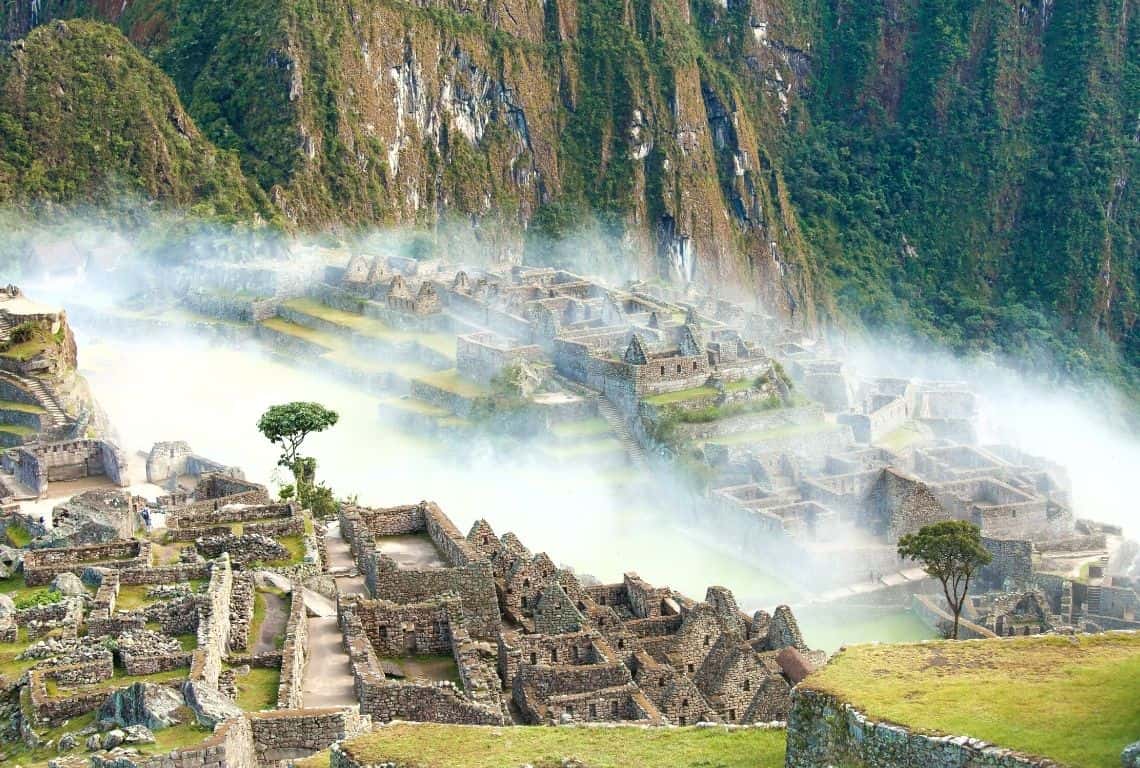
Machu Picchu Weather in October / Best Time to Visit Machu Picchu
Visiting Machu Picchu in November
November falls within the rainy season in Machu Picchu, so you can expect some rain during your visit. However, the amount of rainfall varies from year to year and can be unpredictable. On average, November receives around 9 rainy days, with an average precipitation of 86 mm (3.4 inches).
It’s important to pack appropriate rain gear such as a waterproof jacket, pants, and shoes to stay dry during your visit. Even if it’s not raining, the clouds and mist can create a damp environment, so it’s a good idea to bring layers to stay warm.
While the rain can be a bit of a nuisance, it can also add to the mystical atmosphere of Machu Picchu and create some beautiful photo opportunities. Just be prepared and enjoy the experience!
In November, Machu Picchu experiences its spring season. This means that the weather is mild and comfortable during the day, with average temperatures ranging from 10°C to 23°C (50°F to 73°F). However, it can get quite chilly in the mornings and evenings, so make sure to bring layers.
You can expect fewer crowds compared to the peak season (June to August). However, Machu Picchu is a popular tourist destination, so there will still be a significant number of visitors. To avoid crowds, try to visit early in the morning or later in the afternoon.
Most tourist services, such as restaurants, hotels, and tour operators, are available year-round in Machu Picchu. However, some may have reduced hours or limited availability during the shoulder season, so it’s best to book in advance.
- Average Rainfall – 86mm (3.4″)
- Average Rainfall Days – 9
- Average Daylight – 12.7h
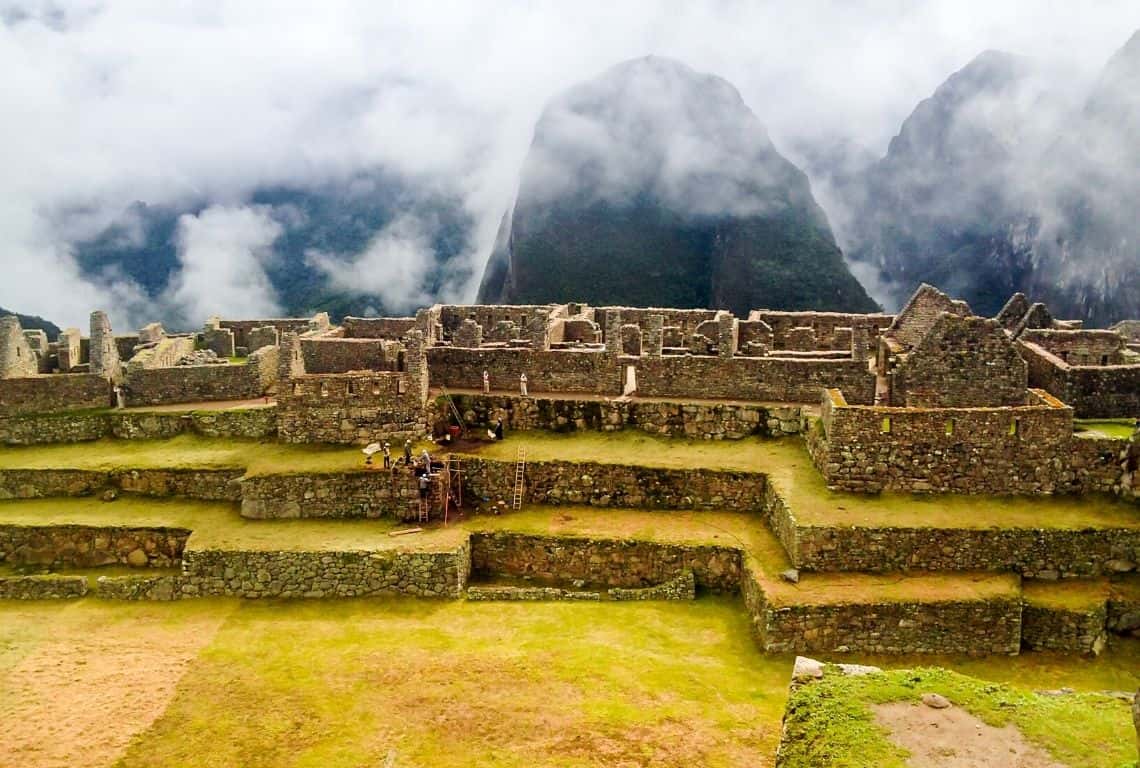
Visiting Machu Picchu in November / Best Time to Visit Machu Picchu
Visiting Machu Picchu in December
December is part of the rainy season in Machu Picchu. December receives around 13 rainy days, with an average precipitation of 121 mm (4.8″).
In terms of temperatures, December is still part of Machu Picchu’s summer season, with average temperatures ranging from 12°C to 24°C (54°F to 75°F) during the day. However, temperatures can drop significantly at night, especially if there is rain, so it’s important to bring warm layers as well.
Crowds in December can vary depending on the specific dates of your visit. The Christmas and New Year holidays can be a popular time for travel, so you may experience larger crowds during that time. However, overall, December is still considered a shoulder season, so you may experience fewer crowds compared to the peak season from June to August.
- Average Rainfall – 121mm (4.8″)
- Average Daylight – 12.9h
Best Time of the Day to Visit Machu Picchu
The best time of the day to visit Machu Picchu is either early morning or late afternoon. The hordes of tourists start arriving at about 11 am and hang out at Machu Picchu till about 3 pm.
My recommendation is to plan for being at Machu Picchu at sunrise . It is a bucket-list-worthy experience!
Intrepid Scout’s Tip:
READ: How to See Sunrise at Machu Picchu (5 Practical Tips)
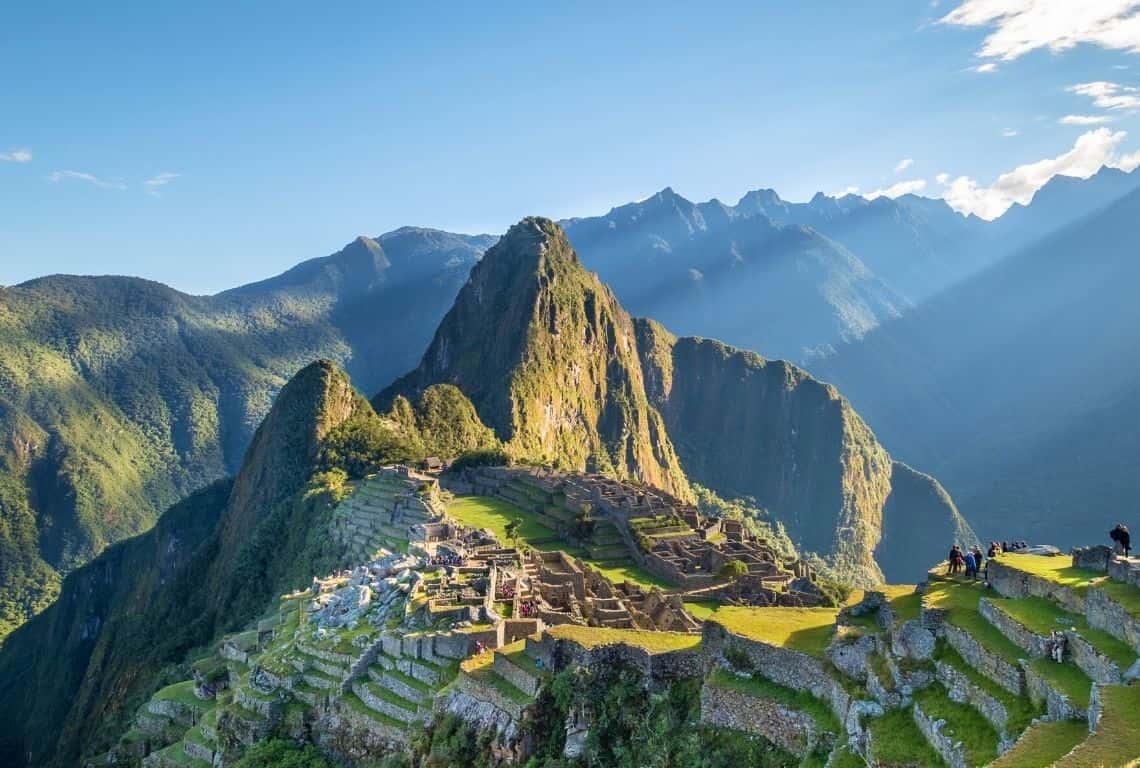
To see the sunrise at Machu Picchu is a bucket-list-worthy experience! / Best Time to Visit Machu Picchu
Intrepid Scout's Tips for the Best Time to Visit Machu Picchu
- Plan your trip to Machu Picchu during the dry season .
- The shoulder season months of May and September are the best for visiting Machu Picchu. You will be able to have some solitude.
- Protect yourself from the sun! The average UV index is 12 in Machu Picchu. Wear a wide-brim hat to shade your face, head, ears, and neck. Wear wraparound sunglasses that block both UVA and UVB rays. Use sunscreen with a sun protection factor (SPF) of 15 or higher, for both UVA and UVB protection.
- Pack some warm clothing and always dress in layers.
- Finally, to help you with the planning process of your trip to Peru, make sure to check out my post: 1-Week Peru Itinerary (+BONUS: 3-Day Extension Itinerary to Peruvian Amazon Rainforest .
More Helpful Posts About Peru:
What to Pack for Peru: 14 Detailed Essentials for an Adventure-Filled Exploration
HIKING to Machu Picchu from Aguas Calientes, Peru (Step-by-Step Guide)
7 Coolest Day Trips from Cusco, Peru (with Maps and Photos)
15 Terrific Things to Do in Lima, Peru (+ BONUS: Complete Guide to Lima)
10 Best Things to Do in Cusco, Peru (FOR EVERY BUDGET)
Read All Peru Posts in:
Peru Travel Guide
Read All the Posts About South America in:
South America Travel Guide
Now, It Is Your Turn, I Would Like to Hear Back from You!
Are you planning your trip to Machu Picchu?
Please let me know! Drop me a quick comment right below!
Click on any of the images below to get inspired and to help you with the planning process for your trip to Peru!
- alert('URL copied to clipboard.')).catch(err => console.error('Unable to copy to clipboard.', err))">
Share via Email
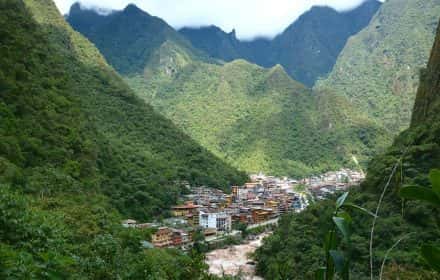
How to See the Mesmerizing SUNRISE at MACHU PICCHU (9 Steps to Witness the Magic)
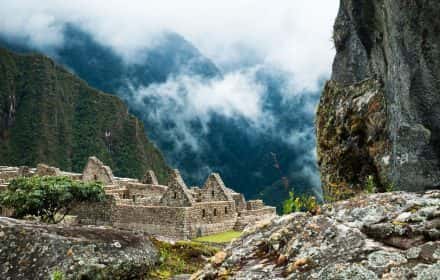
Hiking to MACHU PICCHU from AGUAS CALIENTES in 4 Easy Steps
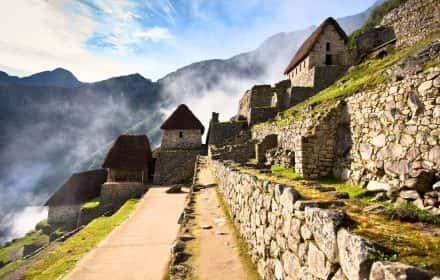
Best SELF-GUIDED MACHU PICCHU TOUR (Explore 11 Marvels of Inca Citadel)
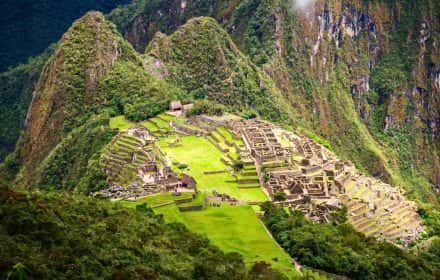
@intrepid.scout
Leave an answer Cancel reply
Your email address will not be published. Required fields are marked *
The company processes your data to facilitate the publication and management of comments. You can exercise your rights of access, rectification, deletion and objection, among others, according to our Privacy policy .

Machu Picchu is located on the eastern side of the Andes Mountains and is frequently covered in mist and clouds, which makes it even more mysterious and charming. When you visit Machu Picchu, you will be amazed by the diverse ecosystem that supports a wide range of plants and animals. This adds to the excitement and enjoyment of exploring the Lost City of the Incas.
The best time to visit Machu Picchu depends mainly on what you like in terms of weather , how many people are there, and the beauty of nature . The weather in the region is typically split into two main seasons : the dry season , which occurs from May to September, and the rainy season , which occurs from October to April .
When is the best time of the year to visit Machu Picchu?
When planning to visit Machu Picchu, many factors need to be taken into consideration, including weather conditions, crowd levels, and personal preference. Here are a few pointers for selecting an optimal time:
- The weather: The weather changes a lot throughout the year. The best time to visit Machu Picchu is usually from May to September . During this time, you can expect warm and sunny days. However, from October to April , there are often rainfall and high humidity levels. This can make sightseeing difficult at times.
- The crowds: Machu Picchu is a very popular tourist destination, so it can get really crowded during peak season, which includes June, July, and August, as well as Christmas and New Year's. To avoid large crowds, it can be helpful to visit during shoulder seasons. These seasons typically occur in April-May, September to October, and sometimes even November.
- Availability : Tickets to visit Machu Picchu are limited to 4044. This means that they can sell out fast during busy times if not booked ahead of time.
- Festivals : When you visit Peru, you can enjoy many festivals and events that will enrich your cultural experience. However, it's important to note that these festivities can also impact the number of people and the availability of hotels and tours.
A lot of tourists prefer to go to Machu Picchu when it's dry, thinking it won't rain. The weather in the Andes can be very unpredictable. Even during the months that are supposed to be dry, like June and July, unexpected rainfall can happen. Every season has its pros and cons, so it's important to consider your personal preferences when deciding the best time to visit Machu Picchu .
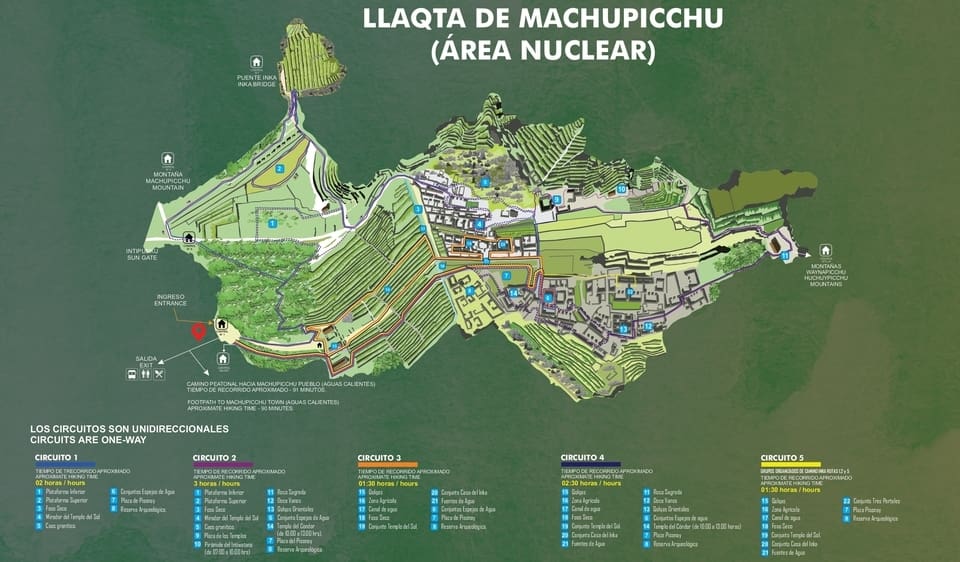
Machu Picchu during the rainy season
Machu Picchu during the rainy season ( December to March ) is a different experience than visiting during the dry season. The weather is cooler, and the landscape is lush and green. The best time to visit Machu Picchu is during the early rainy season, from late September to early December .
Here are some things to keep in mind:
- Weather: Expect frequent rain showers and high humidity. This can make hiking and exploring Machu Picchu more challenging, but it also means that the surrounding landscape is lush and green.
- Crowds: The rainy season is generally less crowded than the dry season, which means you can explore the ruins and surrounding areas with fewer tourists.
- Safety: The rain can make the trails and ruins slippery and more challenging for hiking. It's important to wear appropriate footwear and clothing.
- Photography : The rain can make for stunning photography, with the mist and clouds adding a mystical quality to the ruins.
- Flexibility: Be prepared to adjust your plans based on the weather conditions. Some areas may be affected by flooding or landslides.
The heavy rainy season starts in mid or late December and ends in late March ; rain is expected more often during the early mornings or late afternoons. The sun will always be out, and you will have great photos of Machu Pichu with the mist of the clouds. For this season, fewer visitors are expected, and it's a good time for travelers who prefer solitude . Finding great deals with flights and hotels in the low season is possible.
Machu Picchu during the shoulder season
The shoulder seasons are the transition months between the rainy and dry seasons, or vice-versa. The weather is lovely; it's not too cold, too sunny, or too rainy. Also, places like Machu Picchu still get fewer visitors than during peak season. This group includes April to May, September, and even October .
- Weather: The weather is generally pleasant, with mild temperatures and lower humidity. However, be prepared for some rainfall, especially in the earlier part of the shoulder season.
- Crowds: The shoulder season is generally less crowded than the high season.
- Availability: The shoulder season can be a good time to visit if you want to book accommodations or tours with more flexibility.
If you want to experience Machu Picchu without the crowds, the shoulder season is the perfect time to visit. The weather is still warm and sunny from April to May and September to November , with fewer tourists.
Machu Picchu during the dry season
Machu Picchu during the dry season is an experience not to be missed. The dry season runs from May to September, and the weather is hot and dry. However, the heat is less intense than in other parts of Peru, with little rainfall. This makes Machu Picchu during the dry season an ideal time to visit.
The dry season starts in May when little rain is expected, and it's also the winter season in Peru. Thousands of travelers are expected to visit Machu Picchu during their summer vacations in the US, Canada, Europe, and other countries in the northern hemisphere.
Here's what you can expect during this time:
- Weather: The dry season generally brings clear skies, sunny days, and cold nights. This makes for ideal hiking and exploring conditions, as well as great opportunities for photography. However, keep in mind that the weather can still be unpredictable, especially at higher elevations.
- Crowds: The dry season is also high season, which means that Machu Picchu and surrounding areas can be very crowded. It's important to book your accommodations, transportation, and tours well in advance to ensure availability.
- Availability: During the dry season, all Inca sites, including the Inca Trail, are usually open to visitors. However, keep in mind that permits for the Inca Trail can sell out quickly, so it's important to book well in advance.
- Festivals: The dry season is also a time for cultural festivals and events in Peru, such as the Inti Raymi festival in June . This can add to your visit experience, but remember that these events can also mean higher prices and more tourists.
The days are sunny, offering great views, and the nights are cold, with a clear sky for stargazing. During this season, snow is expected on the high mountain treks. June, July, August, and September are in this group.
Machu Picchu Weather Overview
Even though we only have 2 seasons, the dry and wet seasons, you must always be prepared for sunny, cloudy, and rainy days. The weather in the Andes is challenging to predict since Machu Picchu is located in the Cloud Forest region.
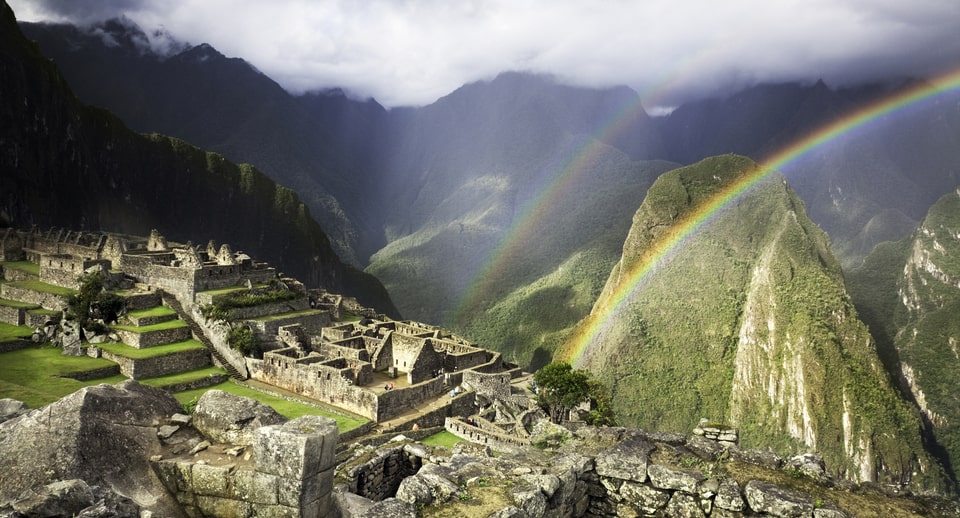
Machu Picchu In January
January is the rainiest month of the year (with an average of 150 mm of rainfall); you must always have good rain gear when visiting Machu Picchu. If you're traveling this month, you must be prepared for possible itinerary changes, trail closures due to landslides, train delays, and flight cancellations.
The temperatures in Machu Picchu will vary from highs of around 71°F (21°C) and lows of around 45°F (7°C). This month is suitable for those travelers who want to visit Machu Picchu in solitude and get good deals on hotels, flights, and tours.
- Machu Picchu and Inca Trail tours are available daily; we recommend avoiding the Salkantay Trek and Choquequirao Trek. The Lares Trek is the best tour to hike Machu Picchu this month.
Machu Picchu in February
Even though there are fewer rainy days than in January, February is expected to have heavy rains (with an average of 200 mm of rainfall). The number of visitors to Machu Picchu has reached its lowest point.
The temperatures in Machu Picchu will vary from highs of around 72°F (22°C) and lows of around 46°F (8°C). Travelers must be prepared for rain, schedule changes due to landslides, or bad weather.
Machu Picchu in March
In March, the weather improves with more sunny days and fewer hours of rain daily, with an average of 170 mm of rainfall. The second half of the month is the preferred time for travelers.
The temperatures in Machu Picchu will vary from highs of around 71°F (21°C) and lows of around 42°F (6°C). Most trekking tours, including the Inca Trail Tours , will be open after February.
- We recommend avoiding tours like Salkantay Trek as they are located in the Amazon area, and the rains are still weighty.
Machu Picchu in April
April starts with more travelers arriving in Machu Picchu. The shoulder season (transitional month between the rainy and dry seasons) begins with great weather and a few rainy days, and travelers will see the sunrise more often in Machu Picchu.
The temperatures in Machu Picchu will vary from highs of around 73°F (22°C) and lows of around 39°F (4°C).
- This is the perfect time to take a hiking tour to Machu Picchu and travel by train . Tours will sell out fast, and you need to book in advance.
Machu Picchu in May
The dry season starts. However, it would be best if you still were prepared for rainy days. May is usually busy on the Classic Inca Trail to Machu Picchu and other hiking tours. The weather in May makes it perfect for visitors, with a clear sky and amazing views of the mountains.
The temperatures in Machu Picchu will vary from highs of around 86°F (30°C) to lows of around 42°F (6°C).
- May is arguably one of the best months to visit Machu Picchu, hike the Inca Trail , Salkantay trek, Lares trek, and other alternative hikes.
Machu Picchu in June
June starts the high season for tourism in Peru; thousands of travelers will arrive in Peru, especially from the northern hemisphere, where they have summer vacations. Little rain is expected during these months.
The temperatures in Machu Picchu will vary from highs of around 83°F (28°C) to lows of around 44°F (7°C).
- Like the Inca Trail, Salkantay, and Lares trek, most tours will be crowded; you must book in advance.
Machu Picchu in July
July is the heart of Peru's dry and winter seasons. Due to Machu Picchu's location, the temperature will have few variations. However, the mountain temperature will drop below freezing, especially at night and early morning.
The temperatures in Machu Picchu will vary from highs of around 82°F (27°C) to lows of around 44°F (7°C).
- There are long lines to get the buses and trains to Machu Picchu this month. You must book hotels and tours far in advance.
Machu Picchu in August
Historically, August is when we get the highest number of visitors. You must be prepared to see many visitors everywhere and wait in line to board the buses and enter Machu Picchu.
- Temperatures in Machu Picchu will range from around 78°F (26°C) to around 42°F (6°C). All trails are available; we recommend alternative treks to Machu Pichu .
Machu Picchu in September
The rains are back in September, and the dry season will end; the cold winter is also replaced by cooler mountain weather.
The temperatures in Machu Picchu will vary from highs of around 73°F (22°C) to lows of around 44°F (7°C). All trails are available; we recommend alternative treks.
- With the drop in the number of visitors to Peru, Machu Picchu's long lines are over, making it perfect for hiking in the mountains.
Machu Picchu in October
October is one of the best months to visit Machu Picchu . As it's the transition month between the dry and wet seasons, little rain is expected, and we're away from the cold weather of the winter season.
The temperatures in Machu Picchu will vary from highs of around 72°F (22°C) and lows of around 41°F (5°C).
- October is the perfect month to travel to Machu Picchu, as we have a lot of availability and fewer visitors.
Machu Picchu in November
November starts the rainy season officially. However, we will have weeks of sun and pleasant weather.
The temperatures in Machu Picchu will vary from highs of around 78°F (25°C) and lows of around 45°F (7°C).
- Machu Picchu will decrease the number of visitors, and the hiking tours will have fewer visitors.
Machu Picchu in December
The rains will occur more often. However, the number of travelers will increase in the last weeks for the end-of-year holidays.
The temperatures in Machu Picchu will vary from highs of around 71°F (21°C) and lows of around 44°F (6°C).
- December is one of the last months to have good weather before entering the heavy rainy season.
Places to visit in and around Machu Picchu
When visiting Machu Picchu, you can explore several sites, markets, and waterfalls and take extra hikes; below is a list of all the places you can visit in Machu Picchu and Aguas Calientes.
Places to see inside Machu Picchu archaeological site.
Citadel of machu picchu.
Machu Pichu Inca citadel refers to the main archeological sites in the regular tour. The ticket will allow you to visit this place for around 2 hours. The places to visit are the Guard House, farming terraces, the temple of the sun, the temple of the water, the main temple, the sundial, the urban area, the industrial area, the temple of the condor, and many other places that your tour guide will take you and explain their uses.
Book Circuit 1 or 2 of Machu Picchu . to explore Machu Picchu citadel.
Sun Gate or Intipunku
Located 5 kilometers from Machu Picchu, the Sun Gate is situated on a mountaintop, the arrival point for the Inca Trail tours . No permits are required to pay or book. You will be hiking the last part of the original 4-day Classic Inca Trail that arrives at Machu Picchu after four days of hiking.
Since the pandemic, hiking to Sungate from Machu Picchu is not allowed. You will be able to access only from the Inca Trail tours .
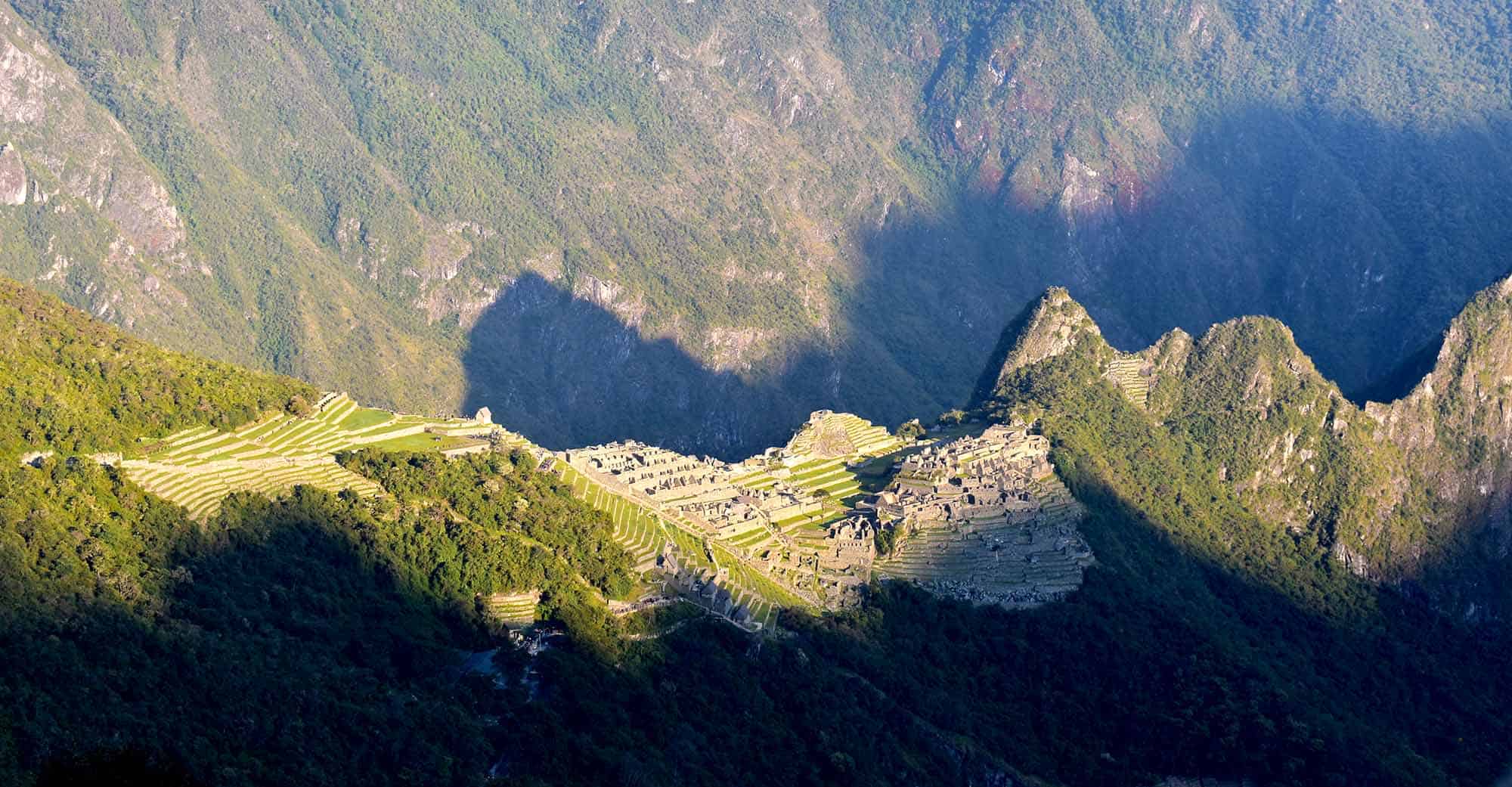
Inca Bridge
The Inca Bridge is opposite the Sungate, just 30 minutes from the upper part of Machu Picchu. The Inca Bridge is an ancient rope bridge that served as a secret entrance to the citadel during the time of the Incas. The bridge was made of wooden planks and ropes and suspended across a narrow chasm. The bridge is not accessible to visitors, but you can view it from a safe distance.
The Inca Bridge is believed to have been constructed for defensive purposes, as it provided a way to access the citadel that was difficult for outsiders to navigate. The bridge was likely removed and hidden when not in use to prevent enemies from discovering it.
To be able to visit this place, you need to book the Circuit 1 + Inca Bridge ticket.
Huayna Picchu Mountain
Huayna Picchu is the steep mountain behind Machu Picchu in every postal picture. It takes one hour to reach the top and another hour to come down the same way. You need to book the permits far in advance to hike this mountain.
Huayna Picchu stands at a height of 2,720 meters (8,920 feet) above sea level, towering over the Machu Picchu citadel. The hike to the summit is challenging and involves steep staircases, narrow paths, and exposed cliffs, but the effort is rewarded with stunning views of the surrounding landscape.
The hike to the summit of Huayna Picchu takes about 2-3 hours, depending on your fitness level and pace. The trail is steep and can be slippery, so it's important to wear appropriate footwear and bring plenty of water.
The cost of the permits is $75 per person. You need to book Circuit 4 + Huayna Picchu to hike this mountain.
Montaña or Machu Picchu Mountain
Located on the opposite side of Huayna Picchu, Machu Picchu Mountain, or Montaña, is the highest mountain area. It takes 1.5 to 2 hours to reach the top, and other similar things come down the same way; you must book the permits in advance.
The cost of the permits is $75. To Hike this mountain, book the Montaña Machu Picchu + Circuit 3 ticket.
Huchuy Picchu Mountain
Huchuy Picchu is one of the smallest mountains, and it takes only 15 to 20 minutes to reach the top. To be able to hike this mountain, you need to book the Circuit 4 + Huchuy Picchu ticket.
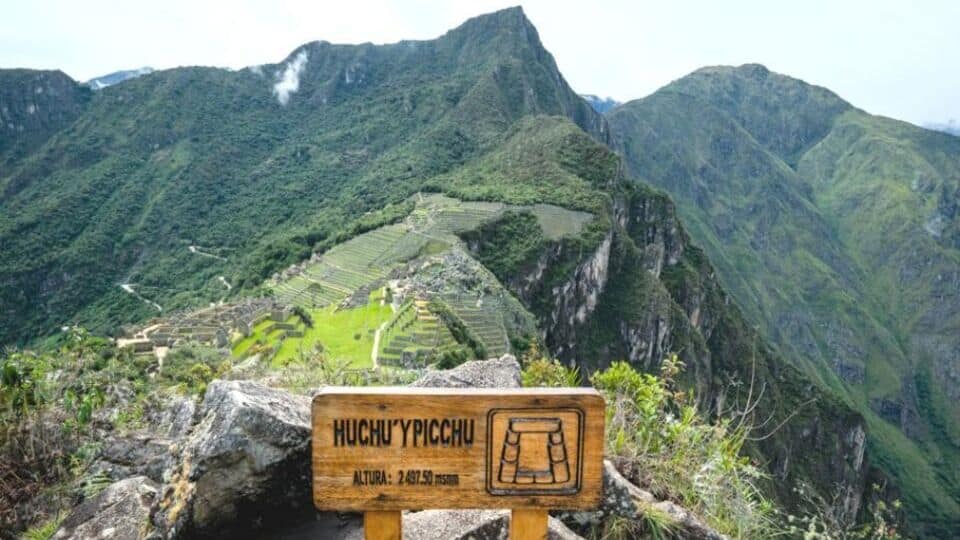
Places to visit near Aguas Calientes (Machu Picchu Pueblo)
Machu picchu local museum.
Located near Puente Ruinas (the bridge to Machu Picchu), you can walk to this place for 20 minutes from Aguas Calientes, or if you have completed Machu Picchu, you can ask the bus driver to get to the bridge. There is a fee to enter the museum (7 USD).
Butterfly Station
It is located on the road from Aguas Calientes to Machu Picchu. The Butterfly Station is only 10 minutes away from the town. You will learn many interesting facts about local butterflies and take pictures. There is a fee of 10 soles to enter this place.
Putucusi Mountain
In addition to Huayna Picchu and Machu Picchu Mountain, there is also a steeper mountain called Putucusi Mountain. You don't need an admission ticket for Putucusi, but you should be in good physical condition, as climbing is the only way to access it. It takes at least 3 hours to complete this mountain and enjoy the magnificent view of Machu Picchu from the top. Keep in mind that this mountain may sometimes be closed or inaccessible to the public.
Mandor Gardens
This beautiful place is only a 1-hour hike from Aguas Calientes; you can see birds, orchids, waterfalls, and Machu Picchu from below. It would be best to visit Mandor, preferably accompanied by a guide.
Hot springs
Located in the upper part of Machu Picchu Pueblo (also known as Aguas Calientes), you can access it by a 15-minute walk from the city; these natural hot springs are perfect for visiting if you have a day off in Aguas Calientes.
Best time to hike the Classic Inca Trail to Machu Picchu
The best time to hike the Classic Inca Trail to Machu Picchu is during the dry season. This is because the weather is drier and there is less chance of rain. The trail can be pretty challenging, so it is essential to make sure that you are prepared for the hike. Many tour companies offer group tours, making the experience much more enjoyable and meeting new friends.
Inca Trail during the Dry Season
The dry season starts in May and continues until the end of September; during this time are expected to be fewer rainy days. However, the Inca Trail is located in the cloud forest, and down can occur anywhere. We recommend always traveling prepared for all types of weather.
During the dry season, the temperatures can be very hot during the day; you need to protect yourself from the sun, and at night the temperature can drop below 0°celcius.
Inca Trail during the Rainy season
The Inca wet season starts from November until March; some years, rains might begin as late as December. During this time is expected to have more rainy days, and travelers must have good hiking equipment.
Peru's rainy season is also slow, with fewer visitors in places like Machu Picchu. Temperatures are cooler during the day and night; the variation is not as extreme as in the dry season.
Inca Trail during the shoulder season
The shoulder season is the transition months between the dry and rainy seasons. These months are the best time of the year to hike the Inca Trail; these dates include the months of April and October, and in some years, this can be extended up to May and November.
Machu Picchu Frequently Asked Questions
When is the least crowded time of the year in machu picchu.
If you want to see Machu Picchu when it is empty, January and February are the best months to visit; you will find reasonable hotel prices, the best train schedules, and incredible prices for everything.
These months are the heart of the rainy season, and you must always be prepared with rain gear and delays due to bad weather.
When is the busiest time of the year in Machu Picchu?
June , July , and August are the busiest months of the year. To travel to Machu Picchu , you must book your tour in advance to get the best schedules and prices. There are long lines to take the bus and enter Machu Picchu during these months.
What is the best time of the day to visit Machu Picchu?
The best time of the day to visit Machu Picchu will be early in the morning or late afternoon. This is when we have fewer travelers visiting Machu Picchu.
Machu Picchu early in the morning
The main gate to Machu Picchu opens at 6 a.m. You must take the early buses from Aguas Calientes town to enter at this time. The first bus departs at 5.30 a.m.
By arriving at 6:00 a.m. at Machu Picchu's gate, you will enter with the first few and enjoy the fantastic sunrise in Machu Picchu . Of course, the sunrise is not guaranteed, but you will have a great time visiting the citadel with fewer early visitors. The people in this schedule must stay overnight in Aguas Calientes; hikers from the Short Inca Trail , Salkantay Trek, Lares Trek, and other trekking tours will have this schedule.
Machu Picchu during the day
After 9:00 a.m., the trains from Cusco and Ollantaytambo will arrive in Aguas Calientes town, and all one-day travelers will visit the marvelous Inca Citadel. That is the busiest time; several trains from Cusco and Ollantaytambo will take travelers to Machu Picchu in one day .
By visiting Machu Picchu during this time, there are more chances of getting good weather and incredible pictures. The visitors during this time usually travel by train on the same day, and they will return to Cusco on the same afternoon.
Machu Picchu late in the afternoon
Many visitors will enter Machu Picchu until 1:00 p.m. and leave by 3 p.m. Machu Picchu after 2:00 p.m. is an excellent opportunity to enjoy the citadel in solitude.
To visit Machu Picchu with the last ones, you must book the last shift at 2 pm; you can enter Machu Picchu from 2 pm to 4 pm and leave before 5.30 pm. The last shift is recommended for people with late trains to come to Cusco or those who are staying overnight in Machu Picchu Pueblo (Also known as Aguas Calientes).
Machu Picchu on Sundays
Machu Picchu is open all week; Sundays are free for locals and are expected to be crowded. Try to avoid Sundays if possible.
Best Machu Picchu Tours
- Classic Inca Trail Hike
- Short Inca Trail 2 days
- Luxury Inca Trail 4 days
- Sacred Valley & Machu Picchu tour
Related blogs
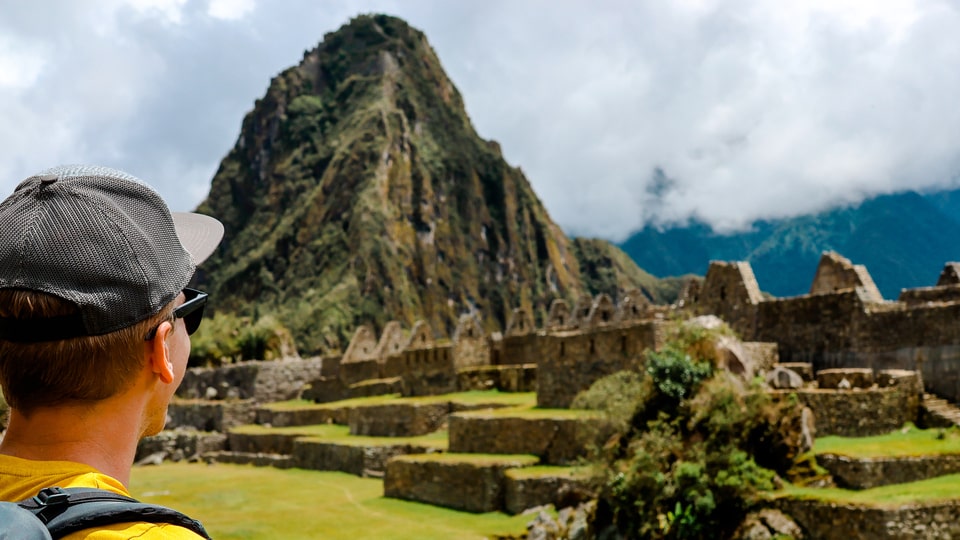
Machu Picchu tours
Thanks, very useful information.
Add new comment
- No HTML tags allowed.
- Lines and paragraphs break automatically.
- Web page addresses and email addresses turn into links automatically.

Juan Coronel - Author
Change location
- UK / International
- Call toll-free until 8pm EDT
- 617-223-4521 617-223-4920 or
- REQUEST A QUOTE
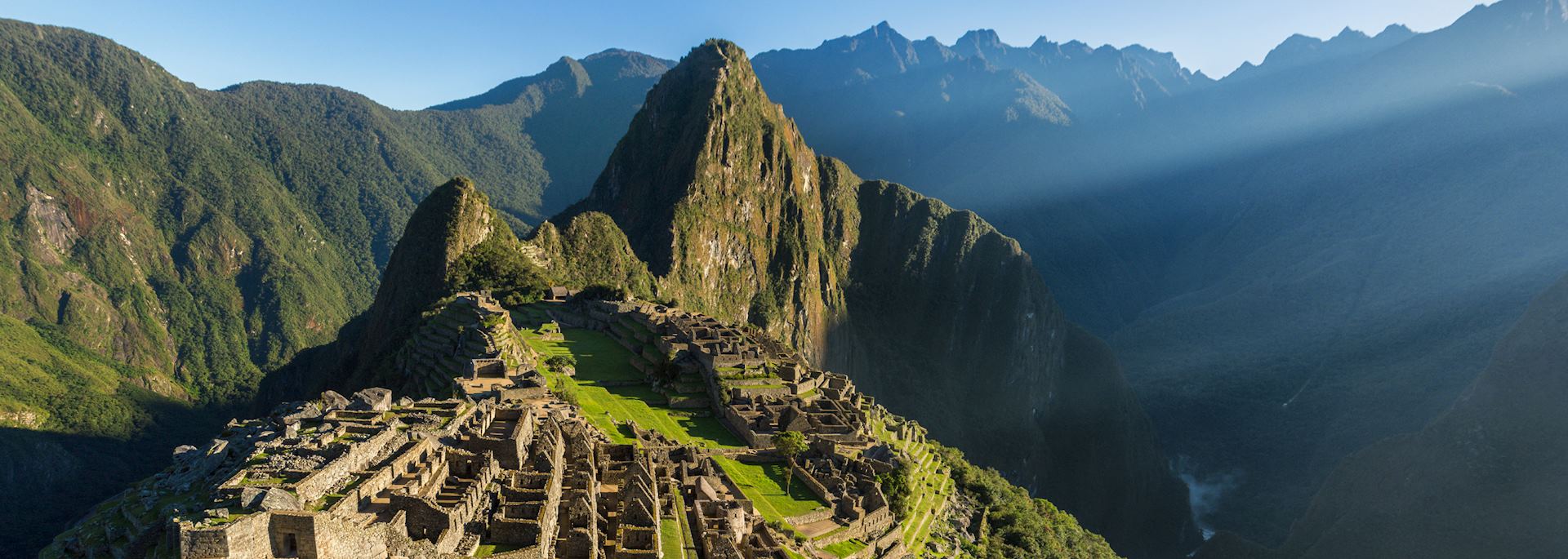
Visit Machu Picchu: A first timer's guide
- Machu Picchu
By Peru specialist Nik
Just shy of 600 years ago, a small plateau between two lushly forested peaks high in the Andes became a building site for the Inca Empire’s greatest city.
This citadel in the clouds was abandoned only 100 years later but Spanish invaders never found Machu Picchu. It was left to nature before explorer Hiram Bingham caught wind of it on an expedition in 1911 and decided to investigate. A hidden city protected by the mountains, and still wonderfully inaccessible other than by foot or train, Machu Picchu is now a New Seven Wonders of the World .
My Machu Picchu highlights
I’m often asked if Machu Picchu really lives up to its name. The emphatic answer is yes, and for two reasons.
Firstly, its buildings — the temples, palaces and houses — are in a remarkable preserved state. The Spanish never ventured up the mountains and so left it untouched.
Moreover, each time I visit Machu Picchu I’m bowled over by the setting. Out of view from the valley, you hear the roar and churn of the Urubamba River 500 m below. A protective wall of mountains surrounds you, which fades in and out of view as the mist falls and lifts. You have the distinct feeling of being high up in the world and part of a very well-kept secret.
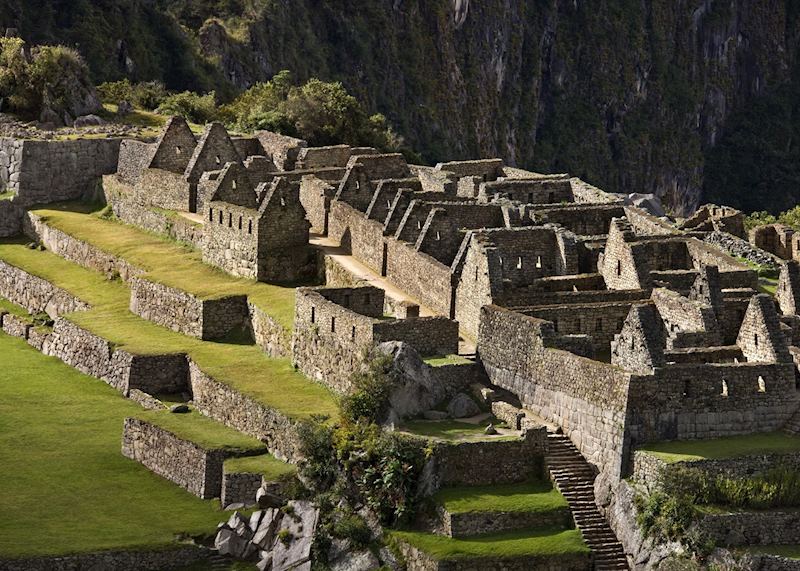
Three of my stand-out highlights
The intihuatana stone.
This carved pillar on a square stone base remains a testament to the Incas ’ knowledge and skill as astronomers. The name translates to the 'hitching post of the sun'. The corners point to the four cardinal points, and the stone still accurately indicates the positioning of the sun. If you happen to be watching at noon on either equinox, you’ll notice the stone’s shadow disappear for just a moment, as designed by its creators.
The Royal Tomb
This cave-like building is thought to be where sacrificial or burial rituals were performed, and there have been more than 100 skeletons excavated here. Just to the left of the tomb lies a series of ceremonial baths fed by a sophisticated aqueduct system — another reminder of the impressive masonry skill of the Incas.
Climb Huayna Picchu
You can climb Huayna Picchu, the witch’s hat of a mountain that stands guard behind Machu Picchu, as long as you book it well in advance as part of your admission ticket. Your ticket will show your allocated time slot to start the walk, and it takes about an hour to reach the top.
I wouldn’t recommend it if you don’t like heights — the last stretch of path narrows with no barrier to separate you from the edge. The reward comes from the view at the top, which our guides generally agree is the best place to see Machu Picchu from above. You could opt to climb part of the way to still get the knock-out view, albeit from a lower level.
Video: Our expert tips for visiting Machu Picchu

Machu Picchu: a first timer's guide
A first timer's guide to Machu Picchu.
Where to stay in Machu Picchu
I’d highly recommend an overnight stay at Machu Picchu or Aguas Calientes if you want to get up to experience the ruins early the next morning.
The Machu Picchu Sanctuary Lodge is the only hotel close to the entrance of Machu Picchu, a mere stroll away. Staying here ensures you’re best placed to avoid traveling time at the start and the end of the day, though this convenience comes at a considerable price tag.
Aguas Calientes has a good range of hotels. The buses start to roll out of town up to Machu Picchu early enough for you to arrive just after the gates open, and well ahead of visitors coming by train. Staying locally also is helpful if you want to visit the site more than once. Mist clinging to the peaks can be completely bewitching, but visibility can be changeable 2,450 m above sea level. A second visit can give you a completely different set of conditions to enjoy as you explore the architecture, and time to climb Huayna Picchu.
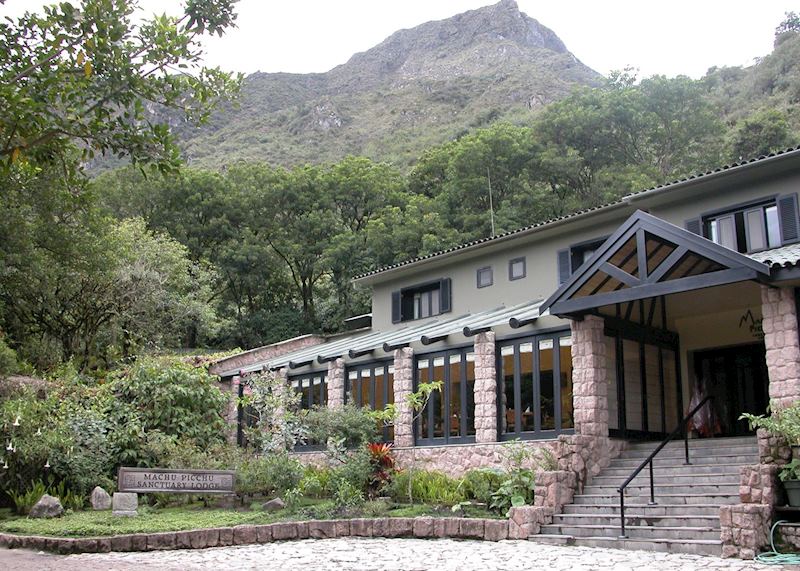
How to get to Machu Picchu
Your most common route to Machu Picchu is flying into Peru’s capital city, Lima , before transferring to an internal 1h 15m flight to Cuzco .
Cuzco sits at the base of the Andes in the southeast of Peru. It was the capital of the Incas and is the leaping-off point for Machu Picchu and the Sacred Valley , the one-time heartland of the Inca Empire. You can reach Machu Picchu from Cuzco on the train or by trekking.
A small town, Aguas Calientes, has sprung up in the valley below Machu Picchu. It serves as the disembarking point for the train or a gathering place after you’ve completed the Inca Trail and descended from Machu Picchu.
From as early as 5am buses leave here to travel up the windy road cut into the mountainside to the entry gates of Machu Picchu.
When is the best time of day to visit?
Machu Picchu is often busiest between 11am and 3pm when most train and bus visitors arrive, so the opportunity to see the site in the morning or at dusk could allow you to have a more meditative experience and better light for photography.
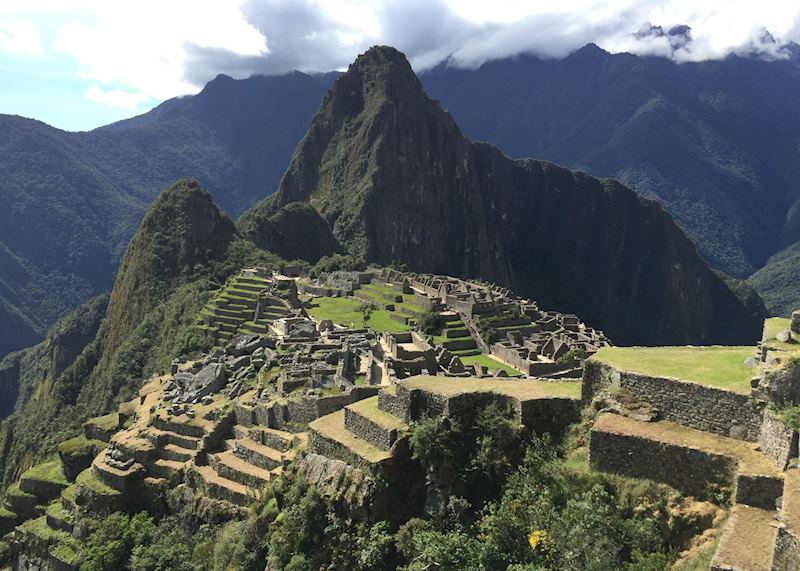
Machu Picchu by rail
The train journey from Cuzco to Aguas Calientes offers you the chance to see dramatic, natural scenery as you make your way through lush valleys and past rugged peaks, following the course of the Urubamba River.
There’s a variety of rail services, from regular carriages with comfortable seating, Vistadome services with panoramic windows through to the luxury Hiram Bingham train with fine dining and entertainment.
You can break up your journey mid-point by stopping or staying overnight at Ollantaytambo in the Sacred Valley, once an important administrative center for the Incas. The remnants of a sturdy fortress, complete with terraces, dominates the town. You would travel into the valley by road and then take the train from Ollantaytambo to Machu Picchu.
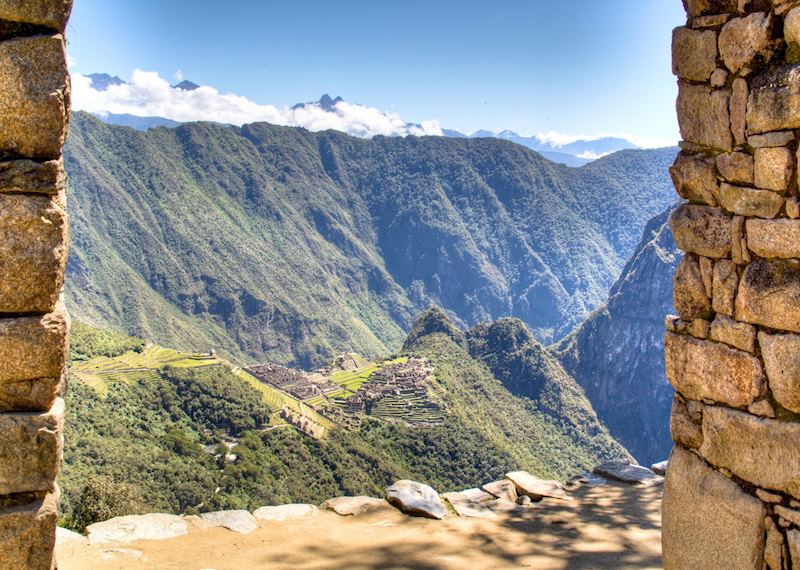
Machu Picchu by foot
Trekking vacations to Machu Picchu are ideal if you want to immerse yourself fully in the hugely varied landscape of snow-capped mountains, sapphire lakes, terraced fields and emerald-forested slopes.
Our guide on trekking vacations in Peru introduces a range of routes and distances so you can find a trip that’s tailored to your fitness level, the number of days you have available to explore and your preferred accommodation.
With group and private treks ranging from 1 to 12 days, you can cover the Inca Trail, Salkantay (known as the ‘alternative Inca Trail') or the Mountain Lodges of Peru route at a pace that suits you once you’ve had time to acclimatize to the altitude.
There are regulations restricting the number of walkers allowed on the Inca Trail. Only 500 people are allowed to start the Inca Trail trek to Machu Picchu each day, and this includes the porters. Permits sell out notoriously far in advance, so it’s essential to plan your trip as early as possible if you want to walk the Inca Trail.
A little note on altitude
Machu Picchu stands at around 2,450 m above sea level, and Cuzco at 3,400 m. At these heights, there’s 20 per cent less oxygen in the air. In the vast majority of cases, symptoms of altitude sickness are very mild (a little sleepiness or a slight fuggy head) and wear off after a day or two, but it can make doing anything energetic feel like a struggle.
Our Peru specialists can give you personalized recommendations about how to acclimatize ahead of your trek and combat any altitude sickness during it.
Travel insurance for Machu Picchu treks
It’s important to check whether your travel insurance will cover you for treks at altitude, especially if you’ve previously bought a policy to cover you for a number of trips throughout the year. It’s possible to buy specialist trekking travel insurance, and this tends to fall into pricing categories based on the altitude and length of the trek you wish to take on.
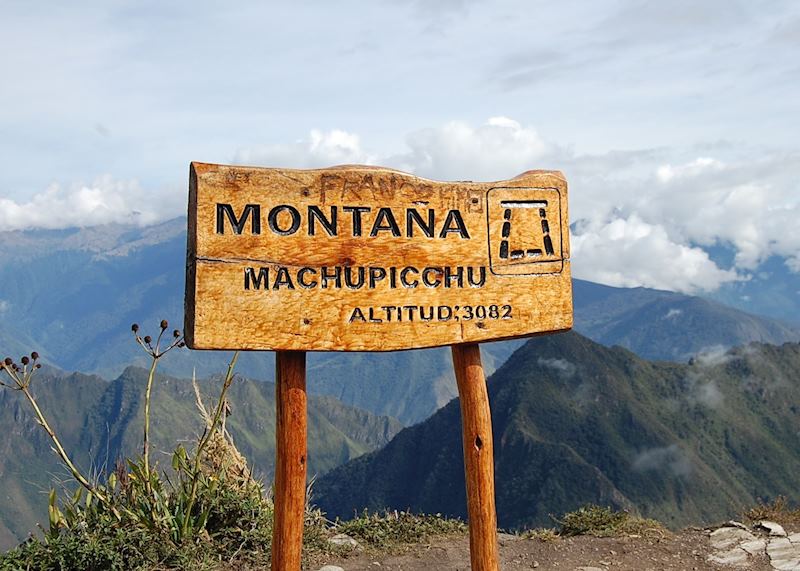
Where to eat at Machu Picchu
Aguas Calientes has a plentiful selection of restaurants to suit your tastes and wallet. One of our current favorites is Indio Feliz, an award-winning restaurant serving Peruvian dishes with a French twist tucked away in a side street.
You can also try Peruvian street food if you time it right. Every Sunday, slow cooked chicharrones (hog roast) is sold until it’s all gone. I tried it on a recent trip and the meat was amazingly succulent, with the best crackling I’ve ever tasted.
The best time to visit Machu Picchu
July and August is peak season, when the highest number of visitors are taking on the Inca Trail or wandering around Machu Picchu.
The Andean foothills are at their driest at this time of year too, with the rainy season taking place between November and March.
We favor visiting throughout the dry months of April to October, but it’s worth avoiding the July and August peak period if you’re not tied to traveling at this time.
It should be noted that the Inca Trail is closed to walkers during the month of February so restoration work can take place.
Trips to Machu Picchu
We’ve created a selection of itineraries that visit Machu Picchu as well as some of Peru's other highlights.
I’d suggest you need at least 9 days in Peru to take in Machu Picchu and the surrounding Incan ruins, with time to explore Cuzco before or after.
With a little extra traveling time you can extend your journey to cover time in the Peruvian Amazon , Lake Titicaca or the Colca Valley.
Tailor-make your trip to Peru
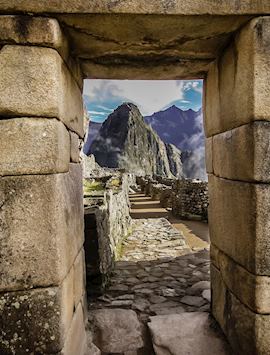
Discover Machu Picchu
8 days from $7,500pp

Luxury Peru tour
13 days from $12,750pp

Icons of South America: Cuzco, Machu Picchu, Iguaçu Falls & Rio
11 days from $13,450pp
Start thinking about your experience. These itineraries are simply suggestions for how you could enjoy some of the same experiences as our specialists. They’re just for inspiration, because your trip will be created around your particular tastes.
Further reading
- Trekking to and around Machu Picchu
- Peru’s Inca wonders beyond Machu Picchu
- Machu Picchu plus one: tried-and-tested South American combinations
- Video: Helen's travels in Peru
- Trekking vacations in Peru: the best hikes (that aren’t the Inca Trail)
Plan your trip
Tell us about your plans and one of our specialists will plan a unique trip for you...
Request our brochure, The World Your Way

Order your digital copy via email.
What’s the best time of the day to visit Machu Picchu? Morning or afternoon?
- Travel Inspiration
- Travel Guides & Tips
- Responsible Travel
- Papanoel Trekero
Embarking on a journey to the ancient wonder of Machu Picchu is an experience like no other. It’s no surprise that this site, considered one of the World’s New Seven Wonders, draws hundreds of people daily. Whether you’re an adventurer seeking stunning views or a history buff in awe of ancient architecture, Machu Picchu promises to be a once-in-a-lifetime experience. However, there is one question that our travelers often ask us: when is the best time to visit Machu Picchu? Morning or afternoon? Let’s find out!
Machu Picchu, the lost Citadel
Before we dive into the pros and cons of visiting Machu Picchu in the morning versus the afternoon, let’s talk about Machu Picchu Citadel. Machu Picchu, meaning “Old Mountain” in the Quechua language, holds a special place in history. This archaeological gem, hidden from the world until 1911, captivates with its beautiful architecture and isolated location. It is believed to be a winter retreat for Inca royalty during the reign of Pachacutec, one of the empire’s most significant rulers, but there is no certainty about it.
What we are sure about is its huge popularity. All the people that travel to Peru know about the site and, of course, want to visit every nook and cranny of it. That’s why, to protect this UNESCO World Heritage site, the Peruvian government regulates the number of daily visitors. Although the specific figures may vary, it’s essential to book your entry tickets well in advance, ensuring a smooth and memorable journey.
Now, many people get up very early in the morning to be the first ones to enter and visit Machu Picchu, while others prefer to take their time and go in the afternoon. Ah, the timeless debate – visiting Machu Picchu in the morning or in the afternoon? Let’s unravel this mystery together and discover which option suits you best!
Visiting Machu Picchu in the Morning
Rise with the Sun – Early bird catches the magic: If you’re a morning person, this option is right for you! Entering Machu Picchu in the morning allows you to witness the citadel awaken with the first rays of sunlight, creating an ethereal ambiance. The tranquility and peace during this time provide an unmatched experience, giving you a sense of solitude with the ancient ruins. But keep in mind that it’s not possible to see the sunrise at Machu Picchu since the site opens at 6:00 am.
Weather Advantage – Chase away the fog: Mornings tend to have clearer skies, reducing the chances of fog obscuring the iconic panoramic views. Imagine standing atop Machu Picchu and gazing at the surrounding peaks and valleys with absolute clarity.
Early Morning Trek – Going for an Adventure: If you’re up for a little adventure, you should consider visiting Huayna Picchu or Machu Picchu Montaña. The only way to include those interesting hikes is by visiting the site in the morning.
Visiting Machu Picchu in the Afternoon
Magical Afternoon Light – Painting the Landscape: Machu Picchu glows in the golden hues of the afternoon sun, creating a mesmerizing and picturesque scene. The warm light accentuates the stonework and adds a unique charm to your photographs.
The Relaxed Pace – More Time to Explore: By choosing the afternoon, you have the luxury of taking your time during the visit. Leisurely wander through the ruins, read up on the history, and enjoy the serene beauty without feeling rushed.
Fewer Crowds – The Path Less Traveled: Visiting in the afternoon means fewer tourists meandering through the citadel, granting you unobstructed views and better photo opportunities as the majority of the travelers are already leaving the place. You’ll have more space to explore and connect with the spirit of this awe-inspiring place.
Season & Machu Picchu Weather
An important note to consider while you’re debating whether visiting Machu Picchu in the morning or afternoon is the season. During the rainy season (December to March), you might encounter showers, especially in the afternoons. However, the days remain mild with frequent sunny intervals. On the other hand, the dry season (April to October) offers clearer skies, making it ideal for those who wish to explore the site under the bright Andean sun until later in the day.
Ultimately, whether you choose to visit Machu Picchu in the morning or the afternoon, the experience will undoubtedly be awe-inspiring. If you crave a serene and uncrowded experience, the afternoon entry is your ticket. On the other hand, if you want to make sure of a clearer sky or wish to hike to Huayna Picchu or Machu Picchu Montaña, opt for the morning entry. Just remember, booking your tickets in advance is essential to ensure you secure your spot. You can check our Machu Picchu: All you need to know blog to know more about this impressive site.
Morning or afternoon, visiting Machu Picchu will undoubtedly leave you spellbound. I’m confident you’ll be left with unforgettable memories and a deep appreciation for this mesmerizing site. So, let’s embark on this extraordinary journey, shall we? Machu Picchu awaits your exploration!
Keep reading
Travel guides & tips, 5 reasons to travel to peru…, peru travel packing list for traveling…, amazon rainforest: iquitos or tambopata, peru in june, what’s the best time of the…, is it safe to travel to…, machu picchu: all you need to…, inca trail to machu picchu: all…, travel to peru during covid-19: can…, food & drink, peruvian food and what to order…, peru in july, booking domestic flights in peru all…, discover the soul of peru.
Thousand of kilometers traveled, countless cities visited, always new discoveries right at your fingertips. Be the first to know all about our trips and the latest news.
- Amazon Rainforest
- Arequipa & Colca Canyon
- Ayacucho & Central Highlands
- Bolivia & Uyuni Salt Flats
- Cusco & Machu Picchu
- Ecuador & Galapagos
- Kuelap & Chachapoyas
- Paracas & Nazca Lines
- Puno & Lake Titicaca
- Trujillo & Chiclayo
- Piura & Tumbes
- Peru Family Tours
- Peru Highlights
- Peru Honeymoon Tours
- Peru Luxury Tours
- Nature & Wildlife
- Peru Off The Beaten Path
- Trip Finder
- Start planning here
- Get in touch
- Sign up for e-mail

The Best Time to Visit Peru and Machu Picchu According to the Weather
By Author Steph Dyson
Posted on Last updated: 17th March 2024
Home to Machu Picchu (one of the new seven wonders of the world), the Amazon rainforest, Andes mountains and vast stretches of beaches, Peru plays host to a diverse and magnificent range of landscapes and ecosystems.
Because of this, weather conditions vary wildly across the country, which is why working out the best time to visit Peru and Machu Picchu can feel complicated.
I’ve identified key places you’ve probably got on your itinerary and outlined what weather you can expect and when, plus other things to consider including how busy they’re likely to be with other tourists. Hate to experience a destination alongside all the other crowds?
No worries: I’ve indicated high season for tourists and the months when you’ll find not only fewer visitors but cheaper prices, too.

Click to navigate this article:
FAQs about the best time to visit Peru
The best months to go to Peru depends on what you plan on seeing during your visit. If you hope to hike to Machu Picchu, the best months are between May and September, when the weather is dry. These months are also a good time to visit other highland regions, including Arequipa, Puno, and Huaraz.
If you want to hit the beach and visit Machu Picchu, the best time to visit Peru is October or November, when the weather is still mostly dry in highland areas, but the temperatures are still hot – and beaches empty of crowds – along Peru’s Pacific Coast.
The best months to go to Machu Picchu are between May and September, when dry weather and cooler temperatures make hiking adventures, such as the Inca Trail and the Salkantay , far more pleasant to undertake, while your chances of seeing Machu Picchu without a ring of cloud increases.
However, June through August is officially the peak season for hiking in Peru, so avoid these if you don’t want to be surrounded by crowds. May and September are quieter but still with good weather for hiking in Peru’s highlands, with the latter month an excellent time to visit the Amazon thanks to drier conditions allowing for hiking through the jungle, plus reduced numbers of mosquitos.
For beach time along Peru’s Pacific Coast, December through March see the hottest temperatures, although you’ll want to avoid January when crowds are at their biggest.
Peru’s rainy season takes place between December and April in Peru’s highland areas, which include Arequipa, Cusco, Puno, Huaraz, and Chachapoyas. Heavy rainfall makes these months not ideal for trekking, with the Inca Trail actually closed during February for maintenance.
The rainy season also affects the Amazon Basin, where the rivers swell and you’ve got a high chance of seeing wildlife up in the jungle canopy from your boat.
If you want to hike to Machu Picchu, as well as head over to Arequipa for the Colca Canyon, and Puno to visit the Uros Islands, you’ll want at least ten days to two weeks to travel around Peru. Bear in mind you’ll need at least two days to acclimatize in Cusco before hiking the Inca Trail or Salkantay trek, which will mean you’ll need seven days minimum in and around Cusco and the Sacred Valley. Luckily, there some of Peru’s most luxurious hotels are located in this part of the country, making for an excellent pre- or post-hiking place for relaxation.
If you’re looking for a truly off-the-beaten-path adventure and fancy heading up to the north of Peru and its glut of lesser-visited archeological sites, plan for at least two weeks if not three.
Peru month-by-month
- January: Soak up the sunshine along the coast north of Lima, when the weather’s hot, although prices – and crowds – are at their highest. Alternatively, if you don’t mind rain showers here and then, head to Peru’s highland areas for trekking and sightseeing without the crowds; these are the wettest months to travel in Peru, however.
- February: It’s carnival season in Peru, so head to Cajamarca for one of the country’s biggest and most exuberant carnival celebrations, or to Puno for a traditional carnival with dancing and folkloric music. Big swells reaching the coast marks this month as a great time to take your board and surf Peru’s waves in Mancora, Huanchaco and locations around Lima. Beware: the Inca Trail is closed for maintenance.
- March: The best month to visit Peru’s coast, March is when you can expect dry weather and clear skies along the coast and inland towards Trujillo, Arequipa and Cajamarca. The tail end of the rainy season in the highlands is also the perfect time to visit Chachapoyas to see the Gocta and Yumbilla waterfalls at their most full and spectacular.
- April: The Andes are lush and green, making it a great time to explore mountain regions of Peru, including Lake Titicaca and Cusco – although rain showers are still likely during this period. Depending on the year, Easter may fall in March or April; visit to see the traditional and colourful carnival celebrations kick off all over Peru.
- May: With the dry season kicking off, May is an excellent month for a trekking holiday, with spring-like temperatures in Cusco, Arequipa and Huaraz. Fewer trekkers along the Inca Trail and other routes to Machu Picchu and Choquequirao make this one of the best months to visit Peru’s most famous archaeological site .
- June: Trekking season is in full force, with June known for its cooler temperatures and clear skies, as well as the Inti Raymi festival, held to celebrate the Winter Solstice in Cusco. To escape the crowds in Cusco, head instead to the mountains of Huaraz for high-elevation trekking adventures. Rain begins to ease in the jungle, making Puerto Maldonado, Iquitos and other parts of the Amazon attractive during this month.
- July: Peak season in the Andes makes the visit to Machu Picchu extremely popular. Alternatively, head to Chachapoyas to explore Kuélap and the north’s other spellbinding archaeological sites .
- August: August is the coldest and driest month in the entire year, and another popular month to trek in highland areas such as Arequipa, Cusco, Lake Titicaca and Huaraz. With low rainfall and low water levels, the Amazon Basin is ideal during this month, with access to jungle trails and decent chances of sighting wildlife.
- September: As the high season comes to an end, September is the perfect time to visit the highlands. The Sacred Valley, Cusco and the main treks to Machu Picchu, such as the Salkantay and the Inca trail are quieter than in the previous months, while dry weather makes hiking in the Cordillera Blanca near Huaraz similarly possible. Dry weather continues in the Amazon, with fewer mosquitos and warmer temperatures, too.
- October: Head north of Lima to Trujillo, Huanchaco , Cajamarca and the northern beaches where temperatures are still pleasant but prices and crowds are lower than during the peak tourist season of December through January. Alternatively, make the most of the final month of dry weather before the rainy season commences by trekking the Inca Trail to Machu Picchu.
- November: Head to Puno on November 5th to see Incan leaders Manco Capac and Mama Ocllo emerge from Lake Titicaca and lay claim to the new lands of their empire. The Amazon Basin is empty of tourists but full of wildlife during this month, making Iquitos and Puerto Maldonado a good bet.
- December: Peru’s coasts are starting to warm – and fill up with tourists – for the festive season, so avoid these regions if you want a quieter trip. As the rainy season begins in the highlands and interior, this month is a great one to see the Amazon by boat. The rivers have swollen due to rain and offer the best opportunities for seeing wildlife.
Planning Your Trip to Peru?
Save time, stress & money with a customized travel itinerary planned for you by a Peru expert
What previous clients have said:
Steph did a great job! I have never used such a service before and I wish there were more of them!Getting off the beaten track was important to us and with Steph’s knowledge we were away from the crowds. The information is very detailed and she knows some great places to stay! Thank you Steph!
Understanding Peru’s weather: the dry season and wet season
Due to its close proximity to the equator, Peru is a tropical country with a wet season and a dry season. The best time to visit is complicated by both high rainfall and the regional differences in weather experienced across the country.
Peru can be divided into three distinct regions: the desert coast, Andean highlands and the Amazon rainforest.
Both the highlands (Cusco, Arequipa, Huaraz, Puno) and the rainforest receive a lot of rain between December and March , in a period known as the wet season , where temperatures are at their warmest, and which roughly correlates with the southern hemisphere’s summer.
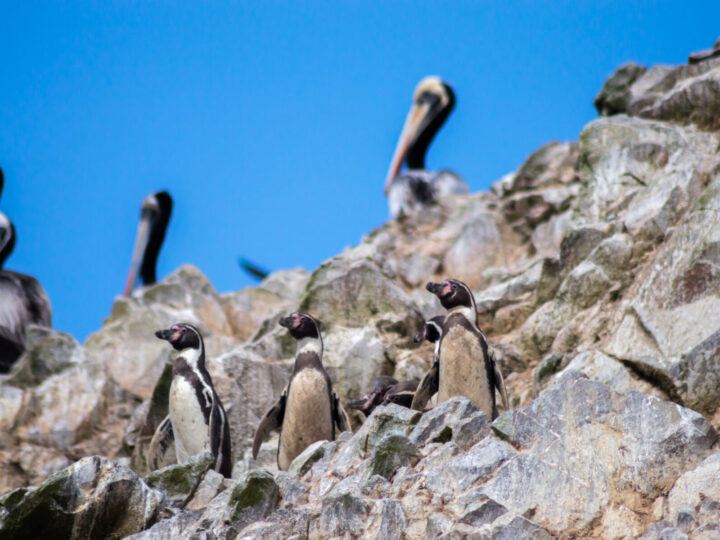
From May to September , these regions experience the dry season , as well as cooler temperatures. These months match with the southern hemisphere’s winter.
The months of April, October and November are viewed as the shoulder seasons and the weather can be a little unpredictable, with a mix of rain and sun.
The coast – home to Lima and towns such as Nazca, Lima, Trujillo, Chiclayo and Mancora – tends to be dry all year round , with much hotter temperatures from December through March.
As a result, it’s likely that your Peru itinerary will combine various different destinations and climates.
Machu Picchu and the Inca Trail
Machu Picchu, the site of one of the greatest South American archeological sites, is found in the Cordillera de Vilcabamba. It’s open every day of the year, however, some treks around this area are closed in the rainy season.
Machu Picchu and the Inca Trail during the rainy season: from December to March
During the rainy season, showers are common in the afternoon and temperatures range from 12-24°C (54-75°F). While the archeological site is open during these months, it’s worth noting that February is the wettest month of the year in the Andes.
Want to support a sustainable, Peruvian-run company when you hike the Inca trail? Alpaca Expeditions are my go-to suggestion thanks to their incredible work supporting indigenous communities across the Cusco region and the exceptionally high-quality nature of their tours. They’re also now offering Worldly Adventurer readers a 5% discount on all of their hikes – just use the code Worldly Adventurer when you enquire! Check out their Inca trail tour .
Because of this, the Inca Trail is closed both due to unsafe weather conditions and for repairs to take place along the path. However, alternative treks to Machu Picchu such as the Salkantay , are still open.
Visiting during wet season? You’ll want to wear a waterproof outer shell as well as plenty of layers due to the unpredictable temperatures and weather conditions.
Machu Picchu and the Inca Trail during the dry season: from May to September
The dry season is the best time to visit Machu Picchu, as trail conditions are easier and you’re also less likely to have an overcast day when you reach the site. Temperatures range between 17°C (62°F) and 19°C (66°F) and, because the wet season has nourished the ground, the landscapes are vibrant green.
Most people tend to visit the Inca city in the mornings, so if you’re wanting less of a crowd, opt to visit in the afternoon!
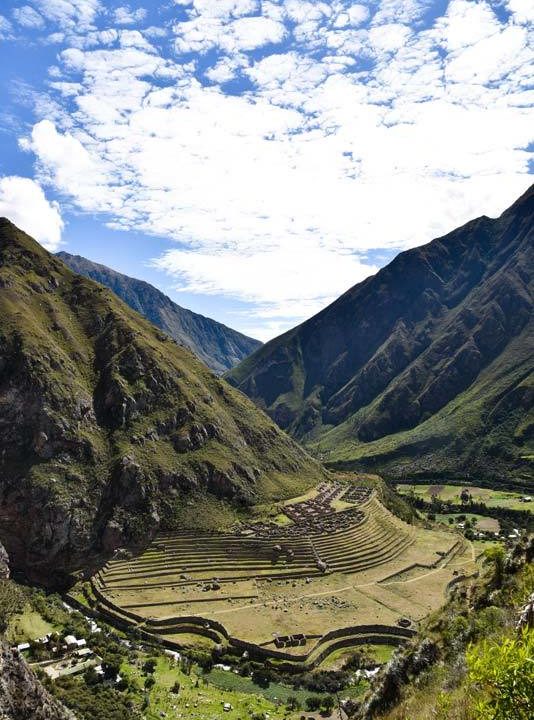
June and July are some of the best months to hike the Inca trail and visit Machu Picchu because of the settled, dry weather. However, these months are when the region sees the most crowds, so consider the shoulder months of May and September for a quieter trek, as crowds are a fraction of what they are in June and July.
Be aware that nights are cold and temperatures can drop below freezing, so if you’re hiking or staying over in Aguas Calientes, you’ll want to bring plenty of warm layers.
Curious about the cost of visiting this incredible archaeological site? We’ve compiled a guide to how much it costs to go to Machu Picchu .
Cusco and the Sacred Valley
Situated at 3,399 meters above sea level, Cusco has mild year-round temperatures, with heavy rainfall during the rainy season and more settled – but still cool – weather during the dry season.
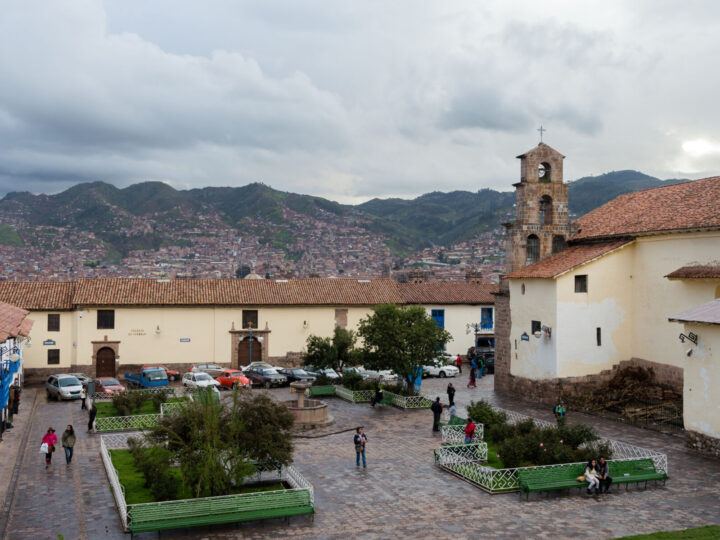
Visiting Cusco during the dry season: from May to September
The former capital of the Inca Empire, Cusco is a city located high up in the Andes. Like the Inca Trail, the dry season, especially June to August, is considered the best time to travel here.
Night-time temperatures are much lower in the dry season and many cheaper hotels don’t tend to have heating. As a result, you’ll want to bring thick clothing for overnight (and be prepared to bed down with plenty of blankets).
This is also the high season for travel, which can add to the cost of staying in Cusco. Learn more in our guide to the cost of visiting Peru .
The Sacred Valley, due to being just 50 km away from Cusco, tends to have the same weather patterns as the city. If you want to visit the Sacred Valley’s archaeological sites or stay overnight here, it’s best to travel between the months of April and October and there are some great hotels and guesthouses in the Sacred Valley for all budgets .
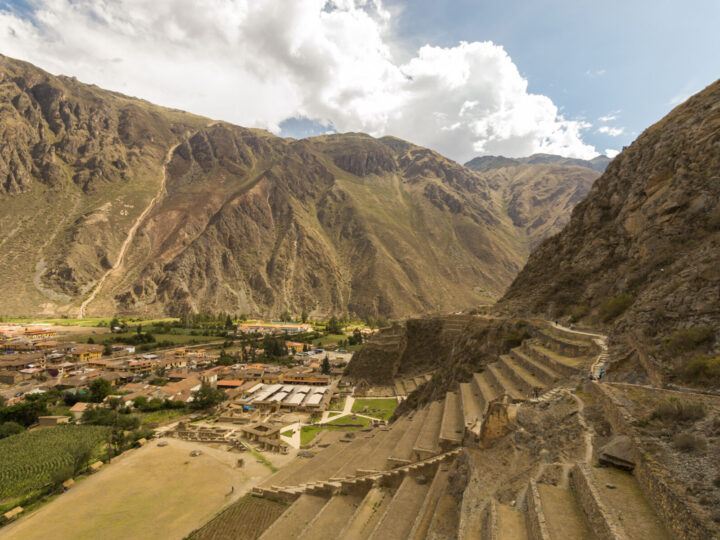
Another reason to visit Cusco and the Sacred Valley during the dry season is to experience The Inti Raymi festival, an ancient Inca religious celebration in honor of Inti, the Inca god of the sun
It takes place in Cusco every June 24th and sees over 25,000 people gather to celebrate with parades as actors pretending to be the Inca are carried up to the Sacsayhuamán archaeological site above the city.
Visiting Cusco during the rainy season: from December to March
Visiting Cusco in the rainy season isn’t the end of the world, as long as you’re prepared to get a little wet. Weather can be unpredictable, but there’s no guarantee that it’ll rain all day, every day.
In actual fact, this can be a good time to visit, as the mountains surrounding the city are verdant and the city is quieter without the hordes of tourists that flock here during the dry season.
Lake Titicaca and Puno
Lake Titicaca is the largest lake in South America and is located on the border between Peru and Bolivia in the Andes, with Puno lying on its shores.
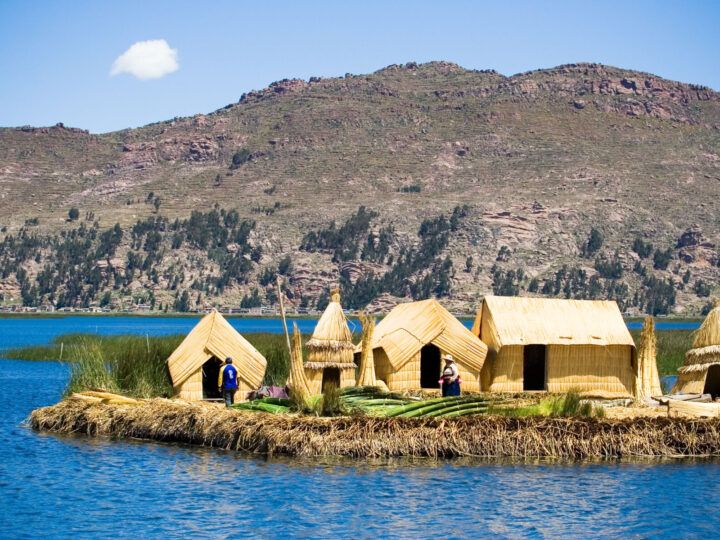
As boat tours to the floating Uros Islands are some of the main reasons to visit the region, it’s best to explore Lake Titicaca and Puno in the drier months of the year. January tends to see the most rainfall with July being the driest. Temperatures are relatively cool all year round, however, nights in the dry season drop below freezing due to the fact that the lake is located at 3,812 meters above sea level.
April to October is when Lake Titicaca sees the most tourists, who flock to the region for blue skies and the best conditions for exploring the lake.
If you can’t visit during this period, plan to arrive in February when Puno celebrates La Candelaria. The country’s biggest cultural event, it sees tens of thousands of musicians and dancers paying homage to the Virgin of Candlemas, the town’s patron saint.
Arequipa and Colca Canyon
Peru’s white city, Arequipa, is an extremely popular location for tourists to spend a few days on their way t o hike or merely admire the Colca Canyon, the second deepest canyon in the world . If you want to visit Arequipa and the Colca Canyon for the hiking trails, condor sightings, or hot springs then, as with other places found in the Andes, they are best visited in the dry season .
Situated at 2,335 meters above sea level and surrounded by volcanoes, Arequipa experiences relatively mild day temperatures year-round, which hover around 21°C (70°F).
At night, temperatures can drop below freezing, so bring plenty of warm clothing, particularly if you plan on spending your evenings enjoying the outdoor terraces of the city’s bars and restaurants – one of the many unmissable things to do on a visit to Arequipa .
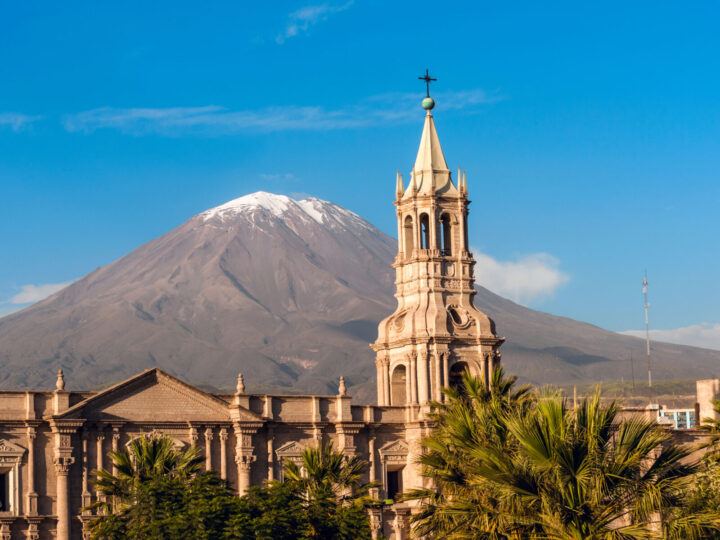
Chivay, a small town in the Colca Valley and a gateway to the Colca Canyon, holds a traditional carnival in the rainiest month of the year, February , making this a good time to visit if you want to learn about the culture and traditions of the people of the Peruvian Andes.
Puerto Maldonado, Iquitos and the Amazon Basin
Unlike the Andes, the Amazon Rainforest is hot, rainy, and humid for most of the year. The dry and shoulder seasons have shorter showers whereas, during the wet season, you can expect heavy rainfall.
If you want to trek on foot through the jungle from Puerto Maldonado or Iquitos, then the dry season is the best time to visit these areas due to the lower chance of rain and better trekking conditions.
You’ll also experience fewer mosquitos making your trip much more pleasant and, because the trails aren’t as muddy, there is a lesser chance of trips and activities being postponed during these months.
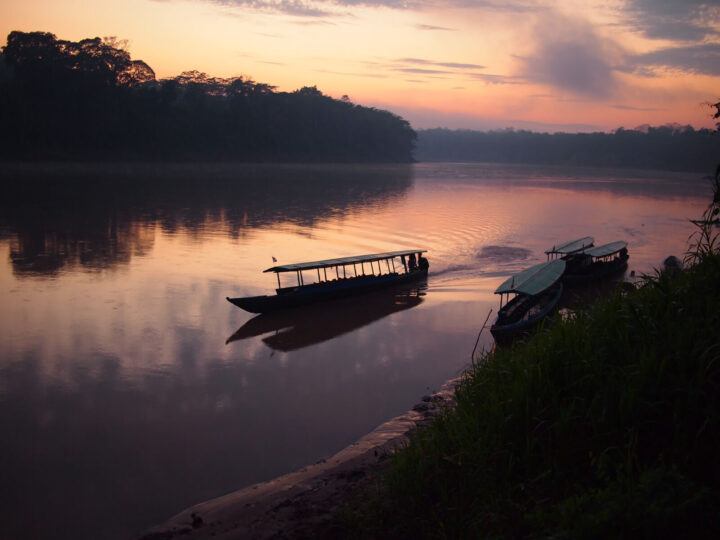
Between September and November , you can also expect fewer crowds than in the peak months of June through August, as well as fantastic conditions for land explorations.
If you have plans of exploring the Amazon by boat, visiting during the wet season is advised. The rainfall causes rivers to swell, making them easier to navigate and allowing you to get in closer contact with wildlife.
Iquitos, another popular gateway into the Amazon jungle in Peru, is popular from June through to October because of the drier, warmer weather. The festival of San Juan also happens from June 22nd to June 25th when locals pack food and drink and head to the river banks to celebrate.
Huaraz and the Central Highlands
Located in the Andean Highlands, Huaraz is Peru’s hiking hub and is the perfect location for 5,000-metre-plus trekking adventures in its magnificent mountainous landscapes.
Huaraz is a great destination if you’re into outdoor sports such as hiking, rock climbing, snowboarding, and mountain biking, with Huascarán National Park and the whole Cordillera Blanca mountain range offering incredible adventure opportunities – they’re the highest range in the tropical world, after all.
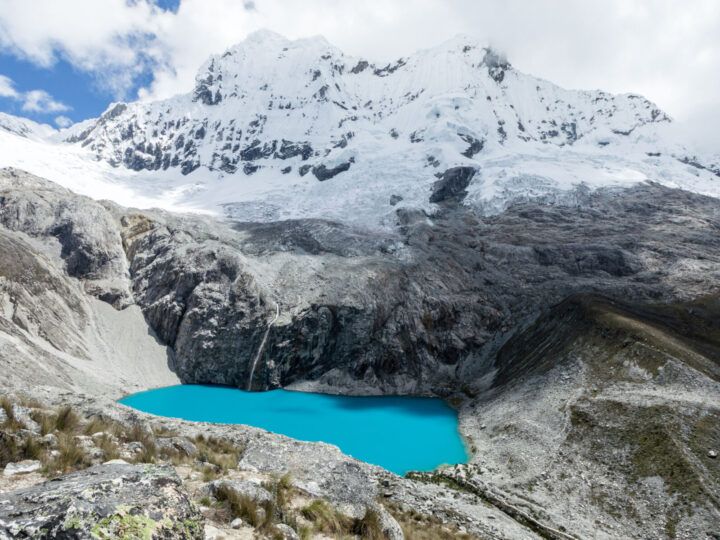
The best time to visit is April through November when the weather is dry and, while temperatures are cooler than the rest of the year, the conditions are best for mountaineering.
If you’re coming to Huaraz to snowboard, the high season is July to September during Peru’s winter (dry season).
Many festivals take place during the dry season which are Hauraz’s busiest months. You can expect to see fireworks, bands, and even bullfights during these festivals.
The largest city and capital of Peru, Lima is situated along the Pacific coast. The coast of Peru is considered to have a desert climate, with the weather conditions extremely different from the central and eastern parts of the country.
It rarely rains in Lima and the best times to visit are from December to April, during Peru’s summer. The temperatures are hot and humid, making it the perfect time to travel if you want a beach holiday. Sunsets are also known for being extremely colorful at this time of the year.
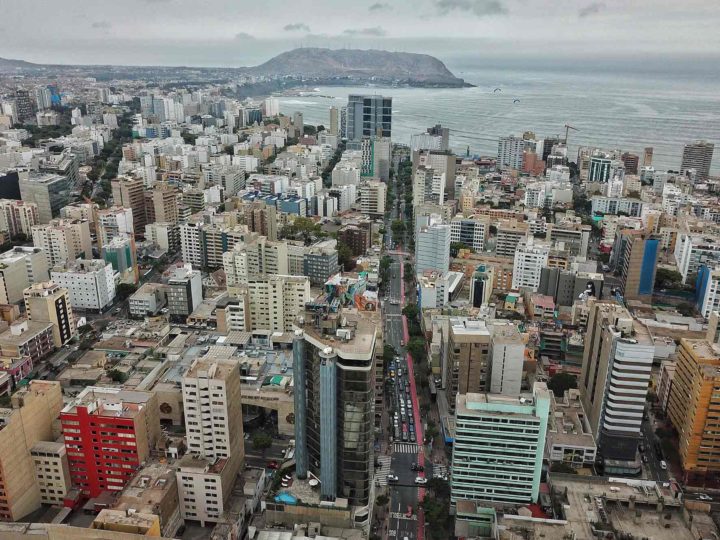
Due to the Humboldt Current, the water temperature in Lima is never warm but can become acceptable for swimming in the months of January, February, and March .
From May to September , Lima is often blanketed with fog, while slightly milder temperatures and the possibility of rain make this a less attractive time to visit. However, for surfers, swells are biggest during the winter months in Lima, making this the ideal period for catching some waves.
There are a few festivals that happen during the winter months, including the Fiestas Patrias (Peruvian Independence Day) on the 28th of July , where large military parades take place.
August 30th sees the celebration of Fiesta de Santa Rosa where religious processions take place celebrating Saint Rosa.
At the beginning of September , the ten-day Mistura food festival is held. This huge market showcasing some of Peru’s finest foods is considered the largest food event in South America.
The Northern Coast (North of Lima to Ecuador)
From November to March, the beaches north of Lima are extremely warm with temperatures averaging between 30°C and 40°C (86-104°F). These summer months are also the peak surf season, with sunny weather and a decent northern swell.
The sea temperatures in the northern parts of the coast are warmer than in Lima, making them better swimming destinations if you’re looking for a beach break. Mancora is one of the most popular beaches to visit on the northern coast and is most popular during the dry season.
July to November, however, are considered great months for activities such as catching glimpses of humpback whales that are migrating north for calving season.
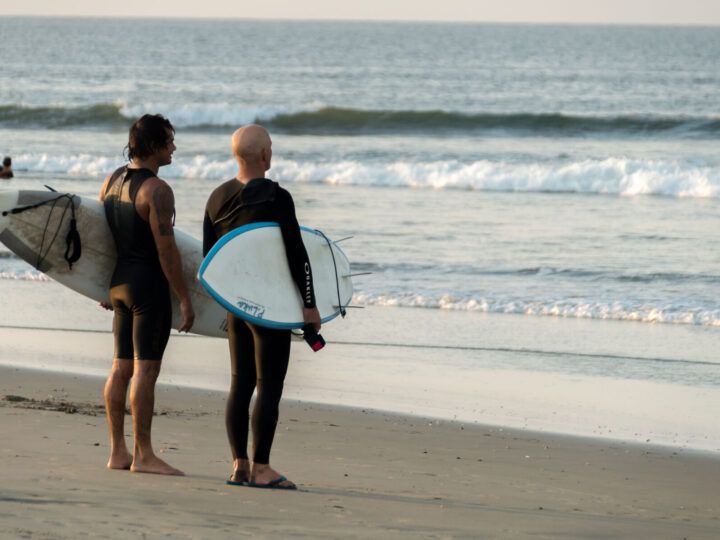
Inland, the cities of Cajamarca and Chachapoyas see the same weather conditions as the highland regions in the south, with the driest weather falling between April and November .
Both are easy to visit throughout the year, although the shoulder months of April and May and September and October see pleasant weather and fewer tourists.
As expected, Mancora and the northern beaches see an influx of visitors during the end of December to celebrate the New Year. In Cajamarca, their annual carnival is held in late February and brings flocks of people to the city for traditional dancing and celebrations.
The Southern Coast (South of Lima to Chile)
Home to the Nazca Lines, the Ballestas Islands, and Peru’s pisco-growing regions, the coast of southern Peru has a similar climate to the northern coast.
It’s also best explored between November and April , when temperatures are warmest, however, like all parts of the coast, there is rarely any rainfall, which makes it a perfect year-round destination.
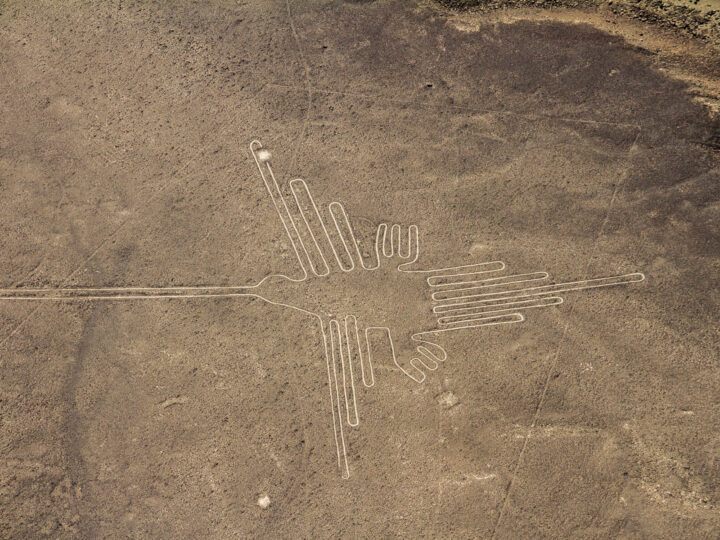
If planning on taking a flight over the Nazca Lines, wind conditions are generally calm throughout the year, making these tours possible year-round. However, November through April is your best bet for avoiding potential cancellations due to rainfall or cloudy skies. Opt for a morning flight for the least turbulence and the clearest views.
The Ballestas Islands are replete with wildlife year-round, however, January through March is when sea lions give birth to their young, making this a good time to see the new pups.

The Ultimate Machu Picchu Packing List
These must-haves will make your trip to Machu Picchu even more magical.
Machu Picchu is one of those rare bucket list travel destinations that truly exceeded my expectations; the 15th-century Inca citadel is well-maintained and properly regulated by the Peruvian government to ensure travelers have an incredible experience.
“Machu Picchu’s fascinating history, panoramic views, and intriguing astrological alignment make it a must-visit for all travelers,” shares Isaac Pilares, Rooms Division Manager at Highgate Peru. “And while it may look intimidating from afar, it is truly feasible for visitors of all fitness levels — with several ‘circuits’ to choose from, guests are able to tailor their path when visiting the site in a way that makes it most enriching and enjoyable for them.”
Pilares urges travelers to keep in mind that no matter which circuit you choose to follow during your visit, there are some must-pack items that every visitor should consider bringing to ensure they are most prepared for their visit to the site (while also respecting the government’s conservation efforts). Here’s what you’ll want to pack to ensure an unforgettable trip to this magical sanctuary.
Packing Checklist for a Trip to Machu Picchu
Best waterproof jacket: outdoor research apollo rain jacket.
- Best Hiking Pants for Women: Baleaf Quick-dry Hiking Pants
- Best Hiking Pants for Men: Outdoor Research Men's Ferrosi Pants
- Best Base Layer: Icebreaker 200 Oasis Lichen Long-sleeve Crewe Top
Shoes and Accessories
Best hiking boots: merrell moab 3 mid hiking boot, best hiking shoes: merrell speed eco hiking shoe.
- Best Hiking Socks: REI Co-op Merino Wool Midweight Hiking Crew Socks
- Best Polarized Sunglasses: Infi Fishing Polarized Sunglasses
- Best Hat: Einskey Sun Hat for Men/Women
- Best Packable Jacket: Amazon Essentials Water-resistant Packable Puffer Jacket
Bags and Gear
- Best Sling Bag: Waterfly Crossbody Sling Backpack
Best Reusable Water Bottle: LifeStraw Go-series Insulated Water Bottle
- Best Bug Spray: Off! FamilyCare Insect & Mosquito Repellent Spritz
- Best Camera: Sony RX100 VII 20.1 MP Digital Camera
- Best Sunscreen: Babo Botanicals Sheer Mineral Sunscreen Lotion
- Best Power Bank: Anker PowerCore 13000mAh, Compact 3-port Ultra-portable Phone Charger
Best Small First-aid Kit: Johnson & Johnson First Aid To Go Kit
- Best Altitude Sickness Pills: UpdateClassic Altitude Sickness Prevention Patches
Despite what you might have seen on social media, you’ll want to prioritize comfort over style when planning a trip to Machu Picchu. This means opting for easily removable layers that you can take off or put on as the weather changes. You can always buy a Peruvian poncho at one of the gift shops at the foot of the citadel to layer over your hiking gear for that Instagram-perfect photo — but you’ll be grateful for the comfy hiking clothes once you start your trek.
Buy at Rei.com
Buy at Outdoorresearch.com
The Outdoor Research Apollo Rain Jacket is going to be your best bet for a lightweight, waterproof option that won’t weigh you down while trekking through Machu Picchu. The hood provides great coverage for your head and face while the stretchy material and zipper prevents water and humidity from getting in. This option is also available for men (and the men’s alternative has a variety of neutral colorways that might be preferable to the women’s bright pink option). We also like that the jacket packs down relatively small and can easily be thrown into a day bag or sling when you don’t need it.
Best Hiking Pants for Women: BALEAF Women's Quick-dry Hiking Pants
Buy at Amazon.com
It doesn’t matter which circuit you’re opting for —you’ll be grateful you wore a good pair of hiking pants. The Baleaf Quick-dry Hiking Pants are our top pick for women — not only are they surprisingly stylish, but they’re also comfortable and feature moisture-wicking nylon that’ll keep you dry even in the rainy season. This lightweight option also features generously sized pockets that’ll make it easy to go hands-free when you’re trekking the more precarious corners of Machu Picchu. We also like that these hiking pants come in a wide variety of colorways, ranging from neutral hues to bright blues and reds.
Best Hiking Pants for Men: Outdoor Research Ferrosi Pants
The Outdoor Research Men's Ferrosi Pants are our top pick for the best hiking pants for men — and once you put them on, you’ll see why. They’re durable, stretchy, breathable, and comfortable even after hours of wear. They’re also made from 46 percent recycled material, yet still do a great job of keeping wind and rain off of you. We also really like that they come in an impressive 33 different size options, so you’ll really be able to find a great fit. Oh, and they offer tons of different-sized pockets that make it easy to store your gear while trekking.
Related: The Ultimate Hiking Trip Packing List
Best Base Layer: Icebreaker Merino 200 Oasis Long Sleeve Crewe Thermal Top for Women
The key to comfort while hiking Machu Picchu is wearing layers, and the Icebreaker 200 Oasis Lichen Long-sleeve Crewe Top stands out as our top pick for both women and men . It’s made of 100 percent merino wool which is naturally temperature-regulating, odor-resistant, and moisture-wicking. It’s also stretchy and easy to move in. This doesn’t necessarily look like a performance shirt, so you can get away with wearing it to lunch or a casual dinner after hiking as well. We also really like that this option comes in a wide variety of colors to best suit your particular style preferences.
Pilares pointed out that there are plenty of circuits available for those of all fitness levels — but no matter what you opt for, you’ll want a decent pair of shoes and the right accessories to protect from the elements. Here are a handful of items to consider when packing footwear and accessories.
Hiking boots will be a game changer no matter what level of trekking you plan to do. Machu Picchu has tons of grassy mounds and rather treacherous staircases, so having comfortable footwear, like the Merrell Moab 3 Mid Hiking Boot is going to be key. We love these boots because of the contoured insole with reinforced heel cushioning, which provides both comfort and stability. The boot is very lightweight as well — so you won’t feel like you’re lugging big work boots all day. The sole is also incredibly grippy, which helps provide traction on rugged or slippery terrain.
Related: The Best Waterproof Hiking Boots For Men and Women, Tested
Buy at Nordstrom.com
The Merrell Speed Eco Hiking Shoe is a great alternative if you’re looking for the traction and support of a hiking boot without the additional material. This shoe is incredibly lightweight and comfortable while also offering a waterproof exterior membrane and 100 percent recycled mesh lining. This allows moisture to escape, but prevents it from getting into your shoe. It’s also worth noting that the bellows tongue keeps out debris, so you won’t have to worry about getting your socks dirty.
Best Hiking Socks: REI Co-op Merino Wool Midweight Crew Socks
If you’re investing in hiking boots, you’ll also want to pick up decent hiking socks like this midweight pair from REI Co-op. We love these because they’re not as expensive as higher-end hiking socks, but they’re just as comfortable. Crafted from merino wool (that’s naturally moisture-wicking and temperature-regulating, the medium cushion socks also feature heel and toe reinforcements and boast support through the Achilles so you’ll be able to wear them all day.
Best Polarized Sunglasses: INFI Fishing Polarized Sunglasses for Men
It can get bright while climbing Machu Picchu — and there isn’t much shade. So having a really good pair of sunglasses is mandatory if you want to be able to see everything clearly. We like the Infi Fishing Polarized Sunglasses in particular; the polarized lenses mean you’ll have better sharpness and contrast as well as minimal color distortion, so your views of the citadel won’t be altered or obstructed. We also like that this option is sporty and durable — the lenses are scratch-resistant and offer UV400 protection. It’s also worth noting that the price tag is extremely reasonable for a high quality pair of shades.
Best Hat: EINSKEY Unisex Sun Hat
The unisex Einskey sun hat is another essential we strongly recommend making space for in your day bag for Machu Picchu — and it shouldn’t be too hard given that this handy hat was designed to fold up without wrinkling or losing its shape. This hat is highly breathable and features a convenient chin strap for keeping it in place during inclement weather. It also protects from both sun and rain thanks to the wide brim design. It’s available in a huge variety of colorways including neutrals and more fun tones and patterns — and we think it’s actually pretty stylish.
Best Packable Jacket: Amazon Essentials Women's Lightweight Water-Resistant Packable Puffer Jacket
“The weather can oftentimes be unpredictable, so a lightweight jacket that is easily foldable into your backpack is a necessity,” explains Pilares. We like the Amazon Essentials Water-Resistant Packable Puffer Jacket in particular, as it’s super lightweight but still offers warmth thanks to the polyester plain weave shell fabric and filling. We also like that this option is machine washable, so you can easily throw it in for a wash when you’re back from your trip. It’s available in a huge variety of colorways and it’s available in men’s sizes as well.
There are a lot of restrictions on what you can and cannot bring to Machu Picchu — so you’ll want to ensure you’re only packing items that are permitted. Things like plastic water bottles and large backpacks are forbidden, but the following items are essentials.
Best Sling Bag: WaterFly Crossbody Sling Backpack
Although it might be tempting to bring a backpack full of everything you could possibly need, it's important to keep in mind that large backpacks are not allowed at the citadel. You’ll need something no larger than 16 x 14 x 8 inches. “Depending on the length of your tour, a small 25-liter daypack or backpack will suffice,” explains Pilares. The Waterfly Crossbody Sling Backpack is a great option that’ll tick off all your needs. It’s small enough to bring but has enough pockets and pouches that you should still be able to fit everything you need. There’s even a pouch on the strap designed to fit your smartphone, making it easy to go hands-free as needed.
Buy at Backcountry.com
The LifeStraw Go-series Insulated Water Bottle is a great investment if you’re a regular traveler; it’s equipped with a built-in filtration system that makes it easy to fill up your water bottle pretty much anywhere. The 18-ounce stainless steel BPA-free bottle and filtration lasts for up to 4,000 liters (which is equal to about 8,000 single-use water bottles). Keep in mind that single-use plastic is banned at Machu Picchu, which makes this option a very appropriate alternative. The stylish water bottle is also available in a ton of colorways, and the convenient top handle makes it easy to bring along even during more strenuous hiking.
Best Bug Spray: OFF! Family Care Insect & Mosquito Repellent Spritz
“The closer you get to the top of Machu Picchu, the higher your risk of getting bitten by small flies or mosquitos,” says Pilares. “I definitely recommend a small bottle of insect repellent.” We’re particularly fond of the Off! FamilyCare Insect and Mosquito Repellent Spritz. It’s formulated with 7 percent DEET, which means it’ll be effective at keeping away annoying insects but the small amount is still safe enough to use on children. This option is also unscented — a rare find for bug spray that contains DEET.
Best Camera: Sony RX100 VII
Buy at Adorama.com
The Sony RX100 VII is our top pick for an affordable and high-quality camera option. Keep in mind that Machu Picchu doesn’t permit things like selfie sticks, tripods, or drones, and you’ll probably want to avoid large lenses and camera bodies to be safe. This compact camera will come as a great alternative and ensure you get Instagram-worthy photo memories thanks to the impressive shutter speed. It also boasts 20 megapixels and HD video as well. It’s also worth noting that it has built-in Wi-Fi, making it that much easier to get your photos off your camera and onto your laptop or smartphone.
Related: The 12 Best Compact Cameras of 2024
Best Sunscreen: Babo Botanicals Sheer Mineral Sunscreen Lotion SPF 50
Buy at Babobotanicals.com
You’ll want to ensure you have ample sunscreen on hand. The sun is much stronger the closer you get to the equator — so applying a good gloss of sunscreen even on cloudy days will help ensure you don’t return from Machu Picchu with a nasty burn. The Babo Botanicals Sheer Mineral Sunscreen Lotion is our top pick when it comes to affordable and eco-friendly options; it’s non-greasy and water-resistant but also cruelty-free and B-corp certified. We also really like that this option is fragrance-free and suitable for sensitive skin. It’s also available in a sport stick size if you’re looking for something suitable to throw in your belt bag or pocket.
Best Power Bank: Anker PowerCore 13000mAh Compact 3-port Ultra-portable Phone Charger
Buy at Walmart.com
Depending on the tour you choose, you’ll likely be exploring Machu Picchu for a fair amount of time. It’s a visual wonder — and you won’t want to risk your camera or smartphone dying halfway through your tour. That’s why we strongly recommend picking up the Anker PowerCore 13000mAh, Compact 3-port Ultra-portable Phone Charger. This tiny power bank can juice up an iPhone in full up to three times per charge. It also has multiple ports so you can charge more than one device at the same time. It also comes with its own mesh-lined carrying case to keep it safe when not in use.
Buy at Target.com
There are a lot of folks around to give you a hand if you need it at Machu Picchu — but it doesn’t hurt to have your own first aid kit available for small hiccups. The Johnson & Johnson First Aid To Go Kit is compact and portable (and pretty affordable) but it includes everything you’ll need for small scrapes or blisters that might occur during your trip. The 12-piece kit is equipped with bandaids of multiple sizes, gauze pads, and cleansing wipes for disinfection. We also like that it’s all contained in a small hard plastic case for easy storage on the go.
Best Altitude Sickness Medication: UpdateClassic Altitude Sickness Prevention Patches
Here’s the thing about visiting Machu Picchu. Chances are pretty good that you’ll experience some kind of altitude sickness; nearly 50 percent of all visitors are affected by the high altitude. We recommend taking a few days to adjust to the altitude at your hotel before visiting Machu Picchu — but it’s also very well worth investing in altitude sickness pills or patches like the UpdateClassic Altitude Sickness Prevention Patches. Your hotel should also have things like Muña tea to help quell any illness you might feel upon arrival.
Frequently Asked Questions
What is the weather like in Machu Picchu?
Machu Picchu tends to be relatively temperate with temperatures ranging from 50 to 75 degrees Fahrenheit. It’s the dry season versus the wet season that you’ll want to take note of when planning a trip to the region. The rainy season is between November and March whereas the dry season — and the peak tourist season — is between April to October. Keep in mind that Machu Picchu is a tropical mountainous region, so even the dry season humidity can reach up to 80 percent.
What can you not bring to Machu Picchu?
The folks at Machu Picchu are strict about what you can and cannot bring onto the site grounds. You’ll want to make sure you avoid anything on the forbidden list if you don’t want it to be confiscated. Pilares notes that selfie sticks, camera tripods, alcohol, vapes and cigarettes, metal-tipped hiking poles, single-use water bottles, backpacks larger than 16 x 14 x 8 inches, strollers, and drones are all strictly prohibited.
Why Trust Travel + Leisure
For this article, Kaitlyn McInnis used her experience as a full-time travel writer who has hiked to the summit of Huchuy Picchu to curate a selection of essentials. She also interviewed Isaac Pilares, Rooms Division Manager at Highgate Peru, to get his insights on the dos and don’ts of packing for Machu Picchu.
Related: The Ultimate International Trip Packing List
Love a great deal? Sign up for our T+L Recommends newsletter and we’ll send you our favorite travel products each week.
For more Travel & Leisure news, make sure to sign up for our newsletter!
Read the original article on Travel & Leisure .
We independently evaluate all recommended products and services—learn more about our process .If you click on links we provide, we may receive compensation.
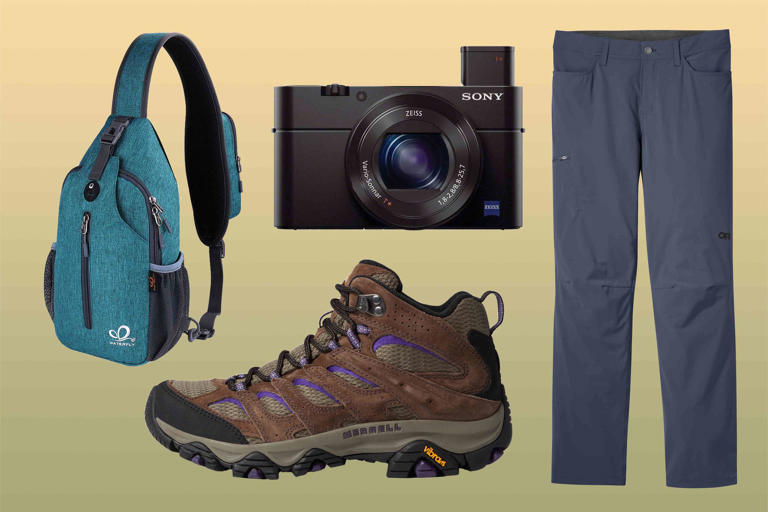

IMAGES
VIDEO
COMMENTS
March in the Sacred Valley is still classed as the rainy season, and for good reason: after February, and alongside January, it is the wettest time of year hereabouts. But the dry days are coming through more and more in and around Machu Picchu as March progresses. Temperatures stretch between highs of 65° F (18° C) and lows of 42° F (6° C).
When is the best time of the day to visit Machu Picchu in March? The best time visit to Machu Picchu in March is from 8 am to 1 pm. At this time of the day, the fogs move away and reveal Machu Picchu in its glory. If you go for 06:00 am, there is an 80% of chance to see Machu Picchu cloudy, and in the afternoon heavy rain comes.
Machu Picchu in March - What to expect. Crowds: Machu Picchu is a popular tourist destination and March is not yet the high season, so it is a good option to visit it.; Weather: March is considered the beginning of the dry season in Machu Picchu, with temperatures ranging from the low 60s to the high 70s during the day and dropping to the low 40s at night.
Ideal Weather Conditions. March is the ideal time to visit Machu Picchu as the weather is not too hot or too cold. The temperature range is between 15°C and 20°C, making it comfortable for sightseeing and trekking. The humidity is also relatively low, resulting in clear and sunny skies with breathtaking views of the surrounding mountains.
The best time to visit Machu Picchu in March is from 8 a.m. to 1 p.m., when the fog dissipates and reveals the site in all its splendor. Arriving at 6 a.m. increases the chances of encountering fog, while in the afternoon there is a risk of heavy rain. Planning the visit at the optimal time improves the visual experience and avoids unfavorable ...
The Cheapest Time To Visit Machu Picchu. Flights and hotels in Cuzco and the Sacred Valley are at their cheapest between January and March. Rainy season — which can mean anything from light showers to full-on floods — makes the region less attractive to visit and February is the rainiest month, making it more difficult to traverse the park ...
After all, the ancient archaeological site is the most visited tourist attraction in the entire country, drawing more than a million travelers each year. The best time to visit Machu Picchu is May to June or September to October, when the weather is nice and crowds are thin, but the site is well worth a visit any time of the year.
Wherever you're coming from is probably much, much lower than Cusco (over 11,000 feet) or Machu Picchu (just shy of 8,000 feet). Give yourself plenty of time to get to your destination, so you can ...
The weather at Machu Picchu is still chilly and wet in March. This month's average temperature is between 11 and 23°C (52 and 73°F). However, it's still a good time to visit Machu Picchu if you want to escape the crowds. Even though it is at the end of the rainy season, you won't be facing long periods of rain.
Explore Machu Picchu in March: perfect time for pleasant weather and fewer crowds. Discover the mystic beauty of this ancient wonder! About Us. Payment Methods; ... Amazon River and Machu Picchu Group Tour (10 Days) Inca Trail and Lake Titicaca (10 Days) Wonderful Peru - Group Tour (10 Days)
Discover exactly which months and seasons make up the best time to visit Machu Picchu, the remarkable mountaintop citadel in the Peruvian Andes. ... Machu Picchu weather by season. December to March (rainy season) At the Inca site, the average temperature ranges between 12 and 24°C (54-75°F). You can expect showers mostly in the afternoon.
A slightly longer hike, taking about an hour round-trip, is to the Sun Gate. At 2,720 m, this is the highest vantage point to view the ruins, and where trekkers from the Inca Trail first glimpse Machu Picchu. Beyond this is a 3-hour hike to the top of the actual peak, Cerro Machu Picchu (the name translates as "big mountain").
Discover the best time to visit Machu Picchu and explore the Andes of Peru. Find out about the ideal months and weather conditions. (408) 707-6463 [email protected]. ... The rainy season runs from December to March, and this is when Machu Picchu sees the most rainfall. The temperatures are also colder during this time of year.
When: Machu Picchu is accessible daily with entrances from 6 a.m. to noon or noon to 5:30 p.m. During the month of February, the Inca Trail is closed for maintenance and is inaccessible to ...
In summary, visiting Machu Picchu during the peak season of June to August offers ideal weather conditions and beautiful views, but it also means more crowds and higher prices. Average High Temperature - 25°C (77°F) Average Low Temperature - 9°C (48.2°F) Average Rainfall - 17mm (0.7″) Average Rainfall Days - 2.
There are two distinct seasons at Machu Picchu: The dry season, which runs from April to October, and the wet season, which lasts from early November until late March. The best time to visit Machu Picchu is definitely during the dry season because the skies are typically clear and the weather is dry.
The best time to Visit Machu Picchu is during dry season, which runs from April to October, is considered the best time to visit Machu Picchu. ... Machu Picchu in March. In March, the weather improves with more sunny days and fewer hours of rain daily, with an average of 170 mm of rainfall. The second half of the month is the preferred time for ...
It often rains at Machu Picchu during the wet season (November - March). This makes for muddy trails and cloud-obscured views. If you want the best chance to see Machu Picchu sunny and in all its glory, you should plan to go in the dry season (May-October). The busiest periods are from June to August.
Machu Picchu is often busiest between 11am and 3pm when most train and bus visitors arrive, so the opportunity to see the site in the morning or at dusk could allow you to have a more meditative experience and better light for photography. Machu Picchu, the ancient capital of the Incas. It's best to visit Machu Picchu at dusk or dawn.
The warmest (and fairly wet) weather arrives in October and November, with highs of around 70° F (21° C). The wettest weather of the year arrives just after in January, February, and March. Bear in mind that despite these general patterns, weather at Machu Picchu is fickle.
The best months to travel to Machu Picchu are May, June, September, and October. Outside of that, there are two main seasons in the Andes: wet and dry. The wet season from November to April is warmer, but obviously wetter. The dry season from May to October has few rainy days, but cooler nights.
Anything you need to visit the site must come in with you, because though there are luggage storage facilities at the entry gate, you can't access them until you have exited the site. The only way round this is to buy multiple tickets. 9. You can't take any food into Machu Picchu.
Visiting Machu Picchu in the Morning. Rise with the Sun - Early bird catches the magic: If you're a morning person, this option is right for you! Entering Machu Picchu in the morning allows you to witness the citadel awaken with the first rays of sunlight, creating an ethereal ambiance. The tranquility and peace during this time provide an ...
Machu Picchu and the Inca Trail. Machu Picchu, the site of one of the greatest South American archeological sites, is found in the Cordillera de Vilcabamba. It's open every day of the year, however, some treks around this area are closed in the rainy season. Machu Picchu and the Inca Trail during the rainy season: from December to March
Here's the thing about visiting Machu Picchu. Chances are pretty good that you'll experience some kind of altitude sickness; nearly 50 percent of all visitors are affected by the high altitude.